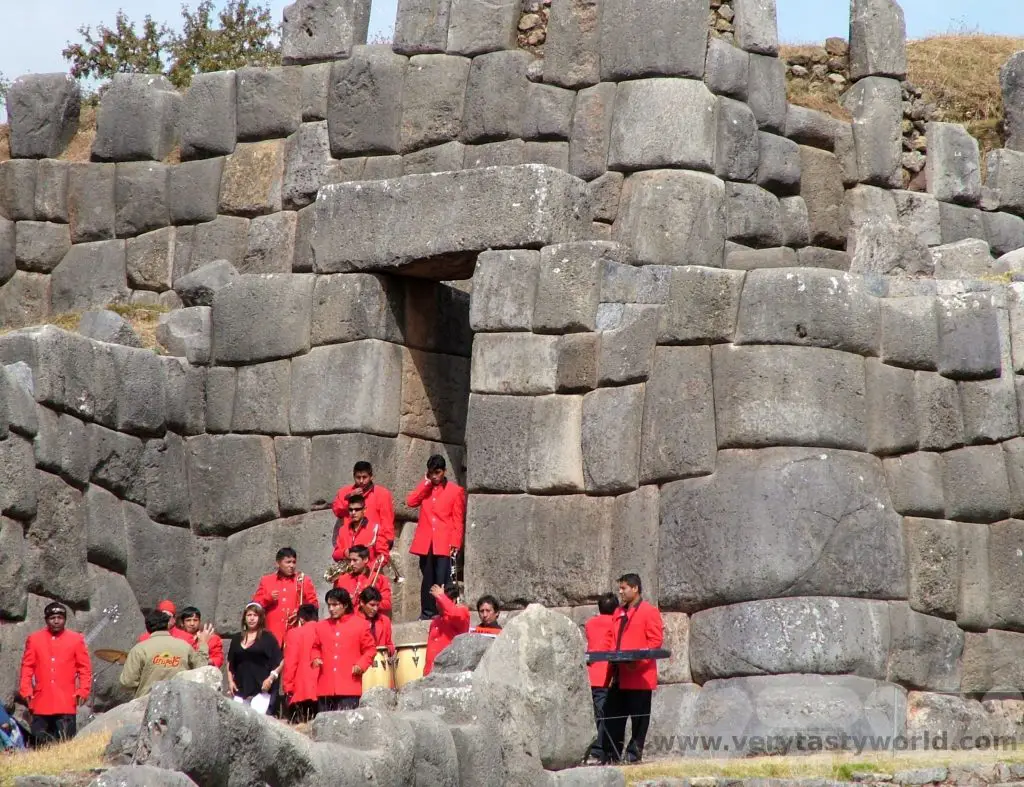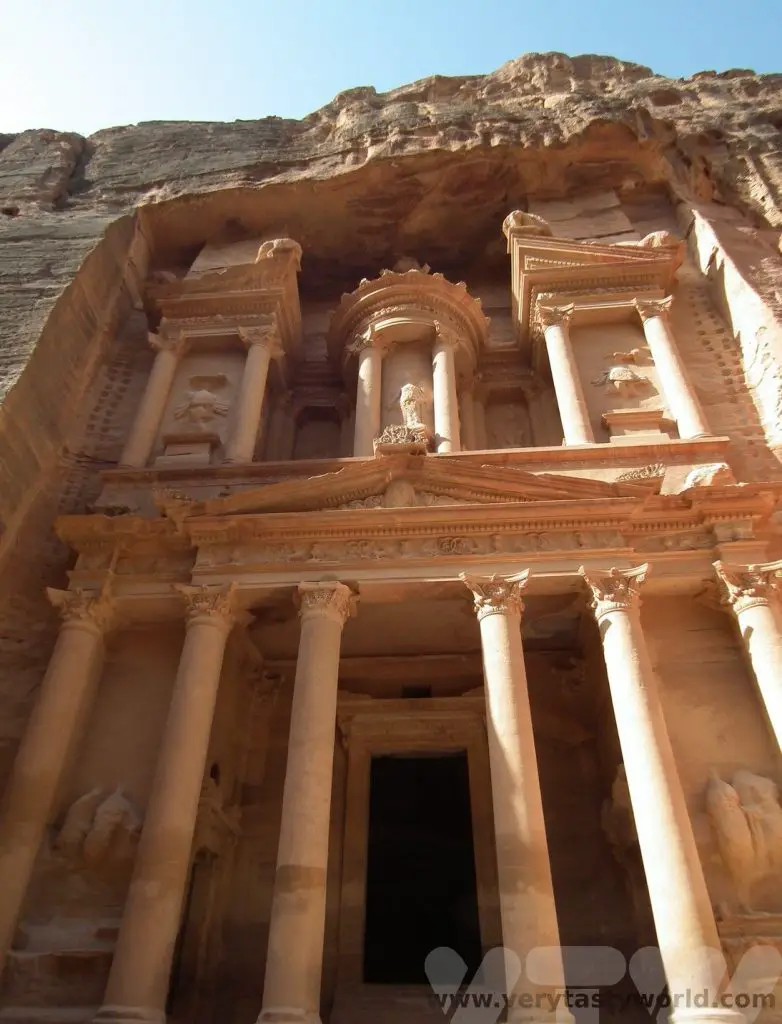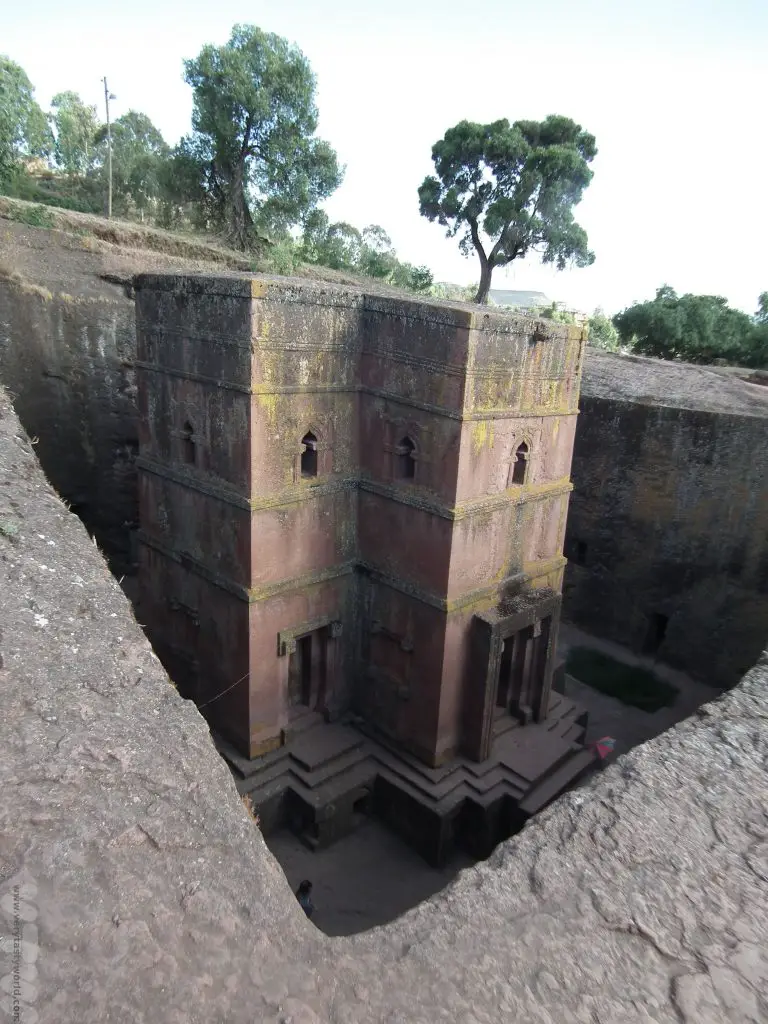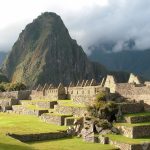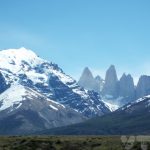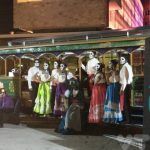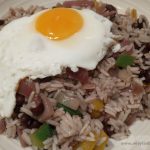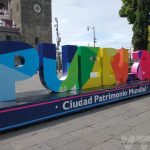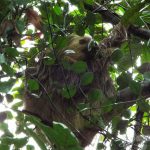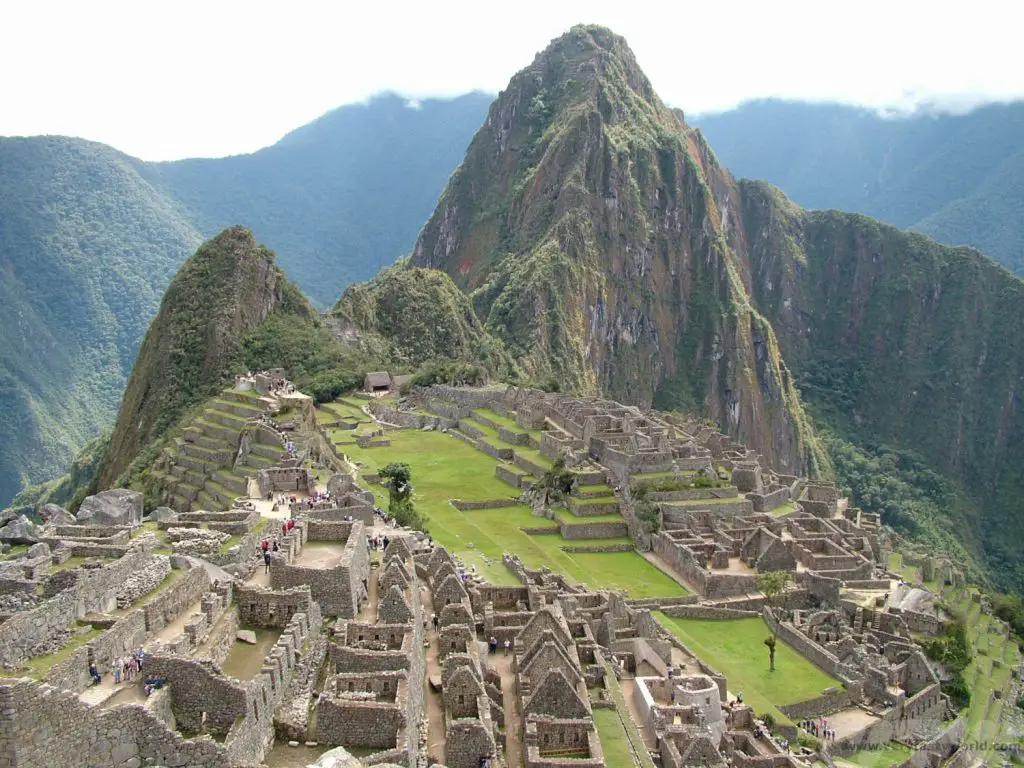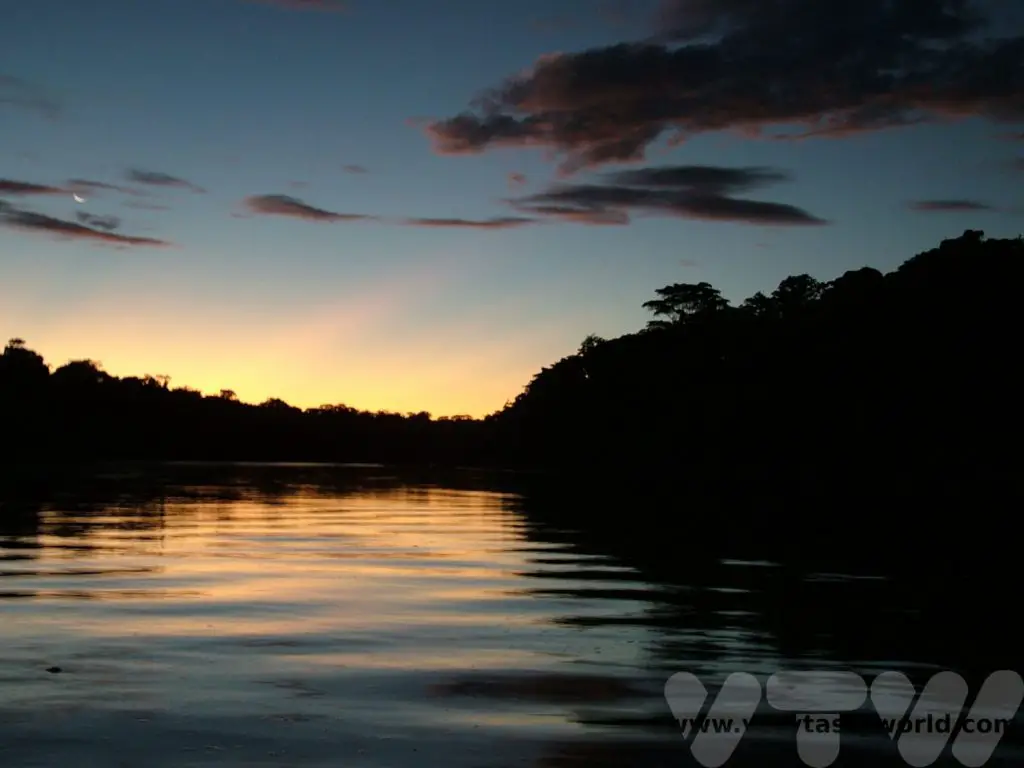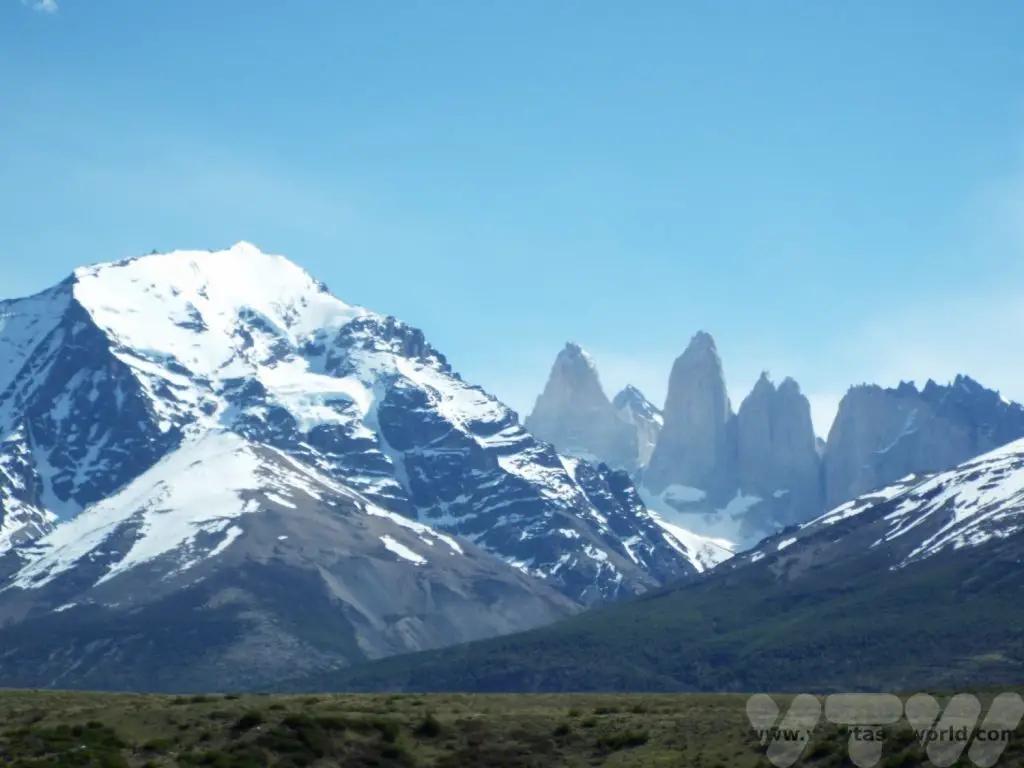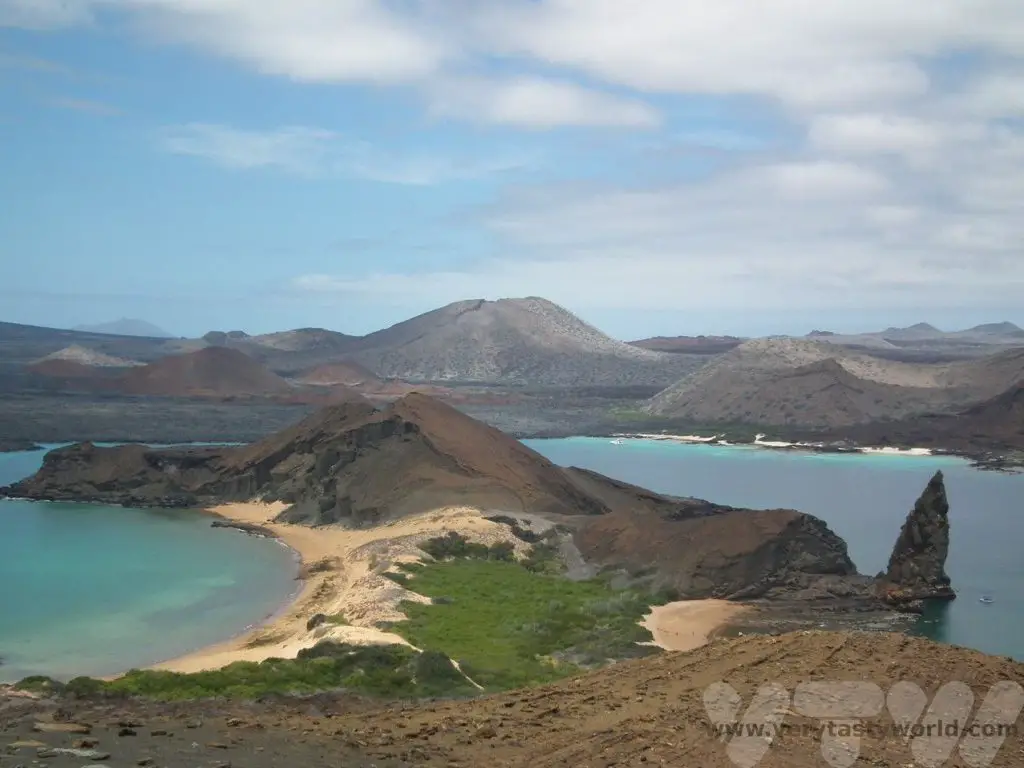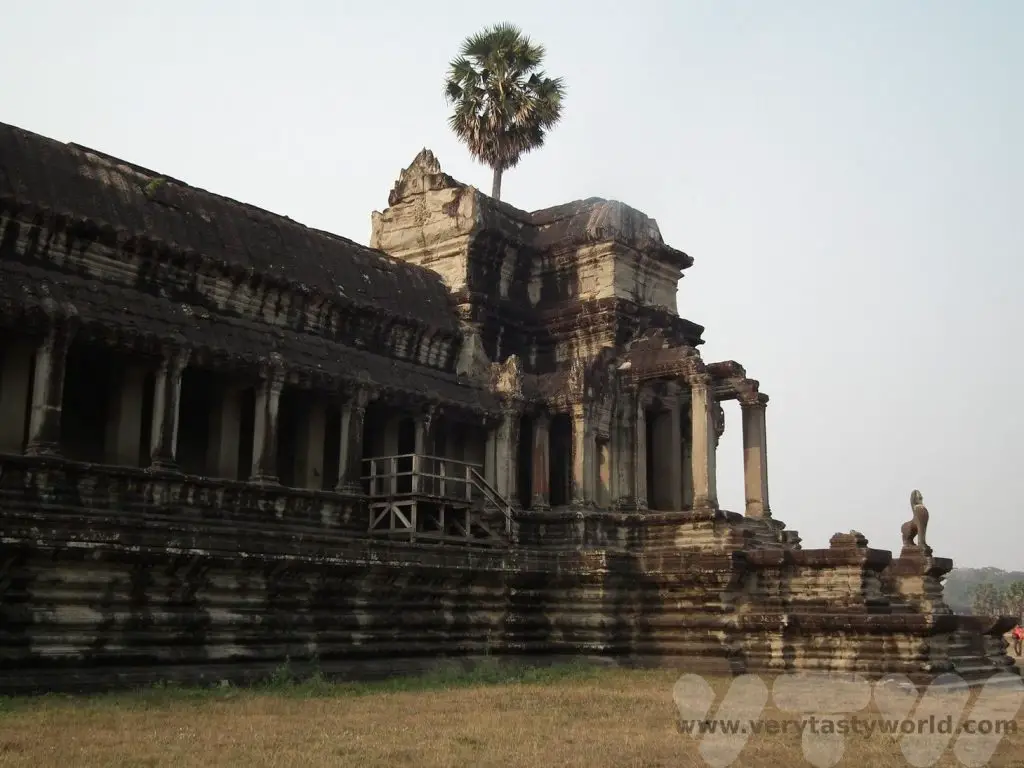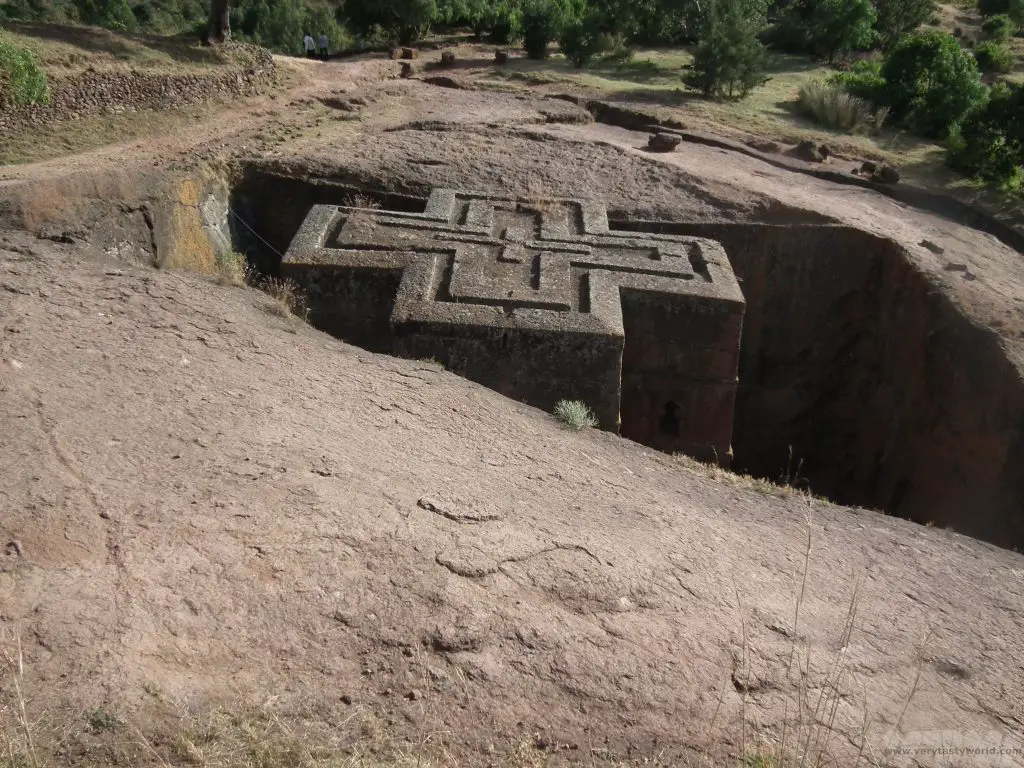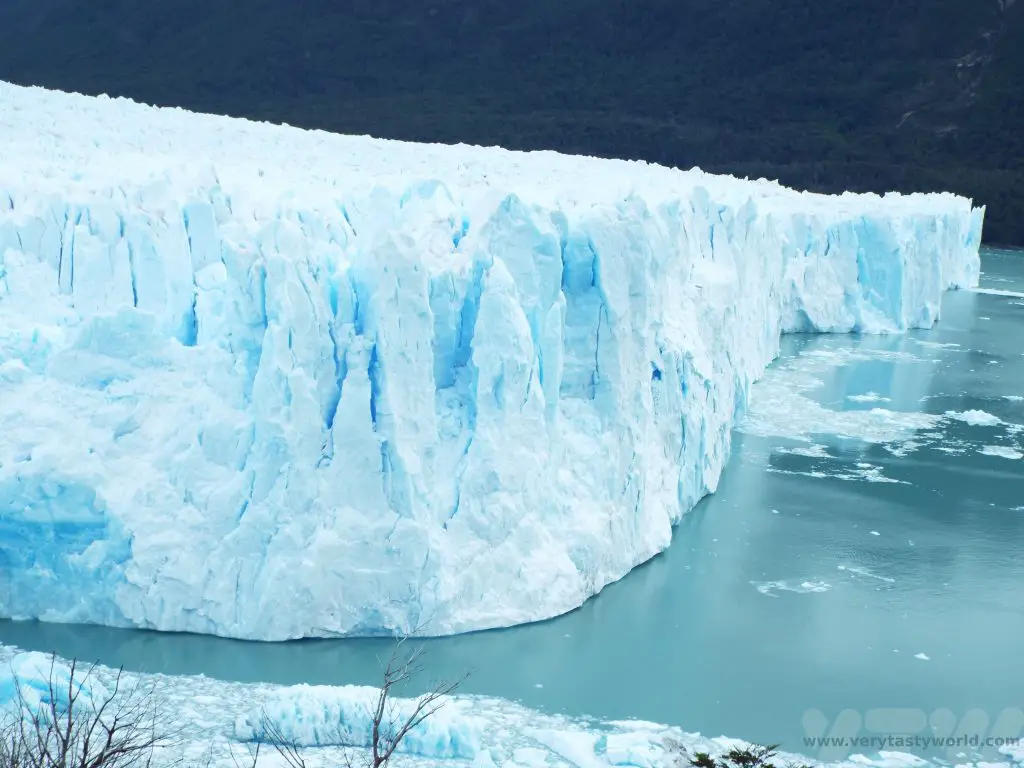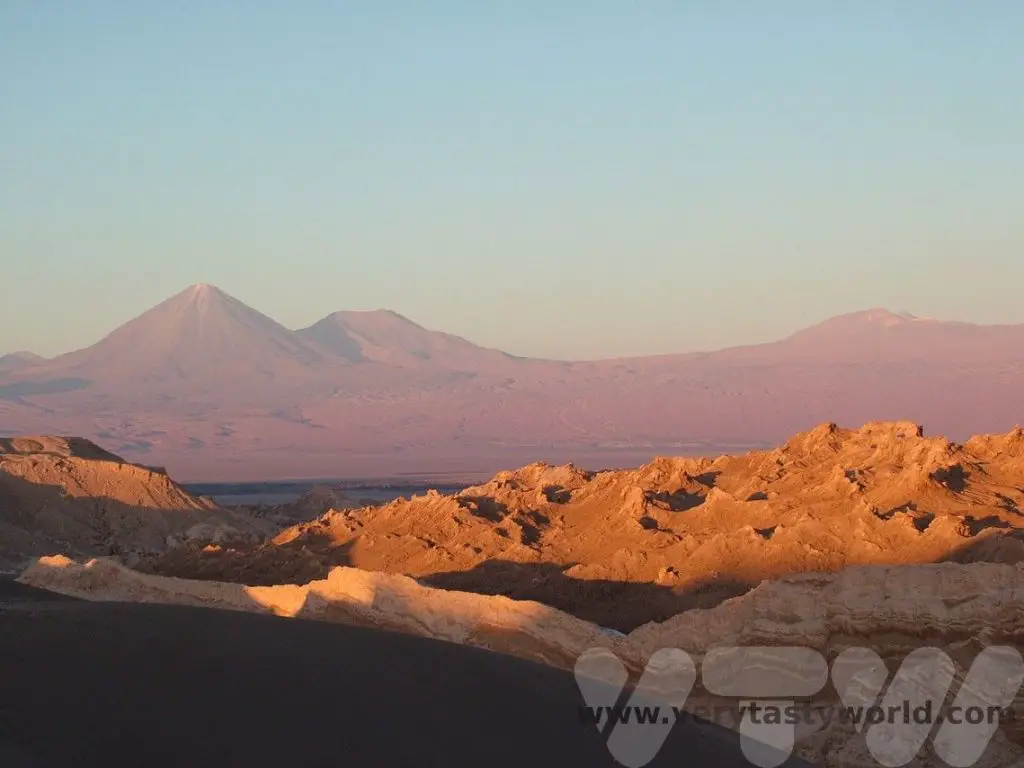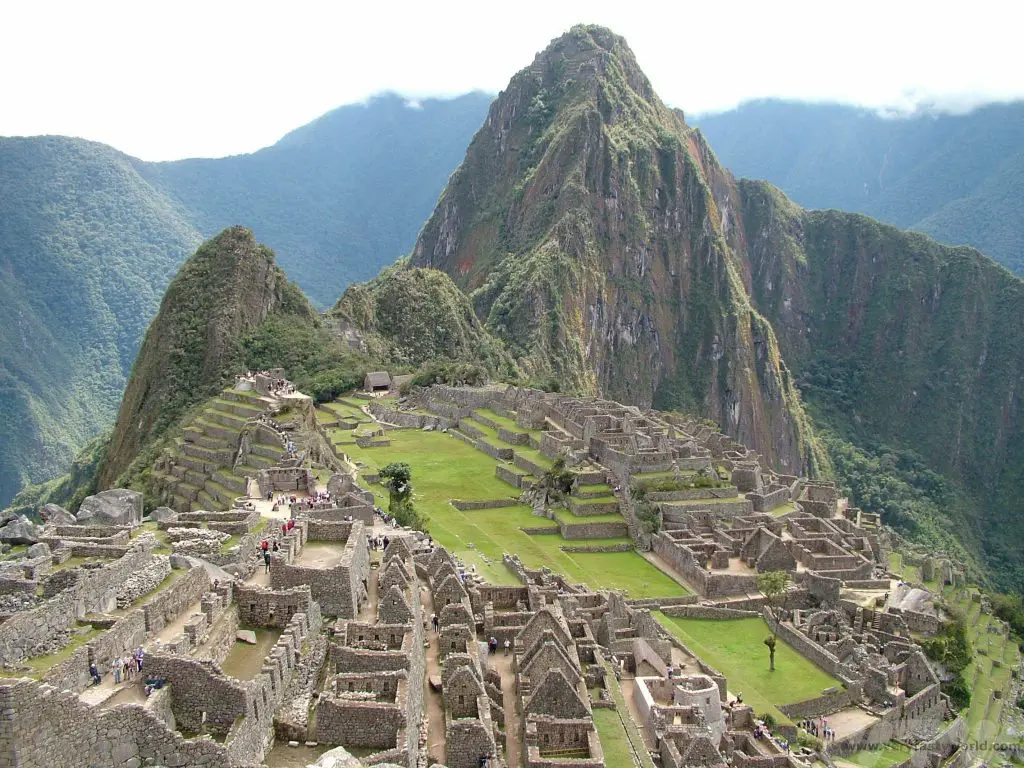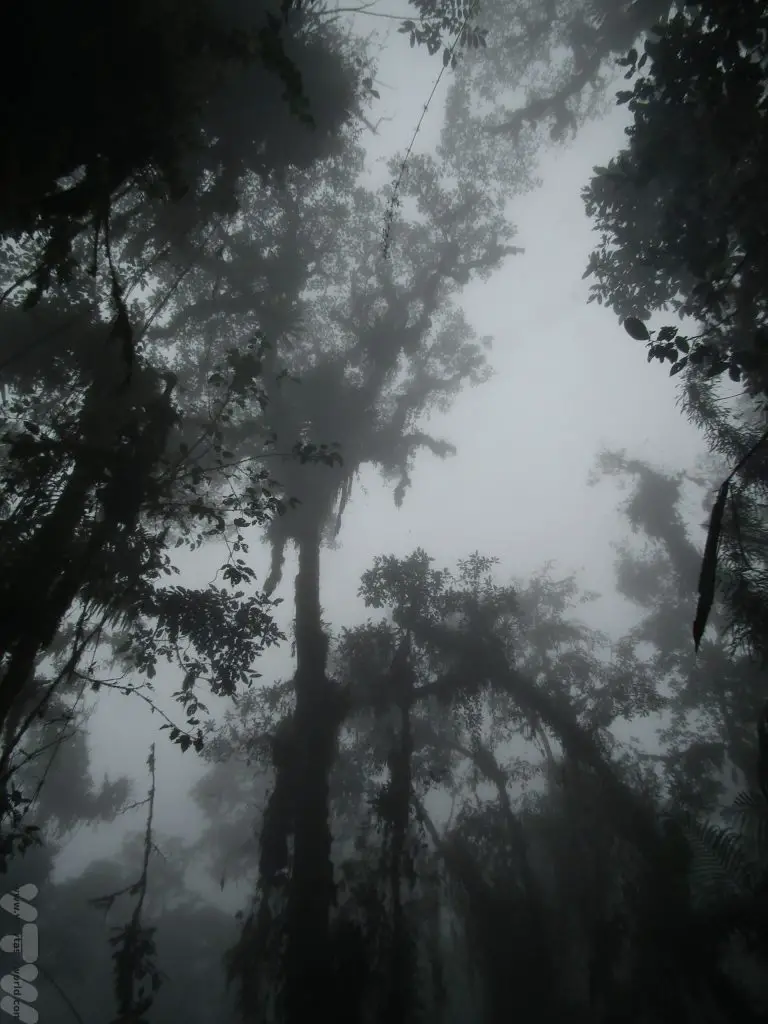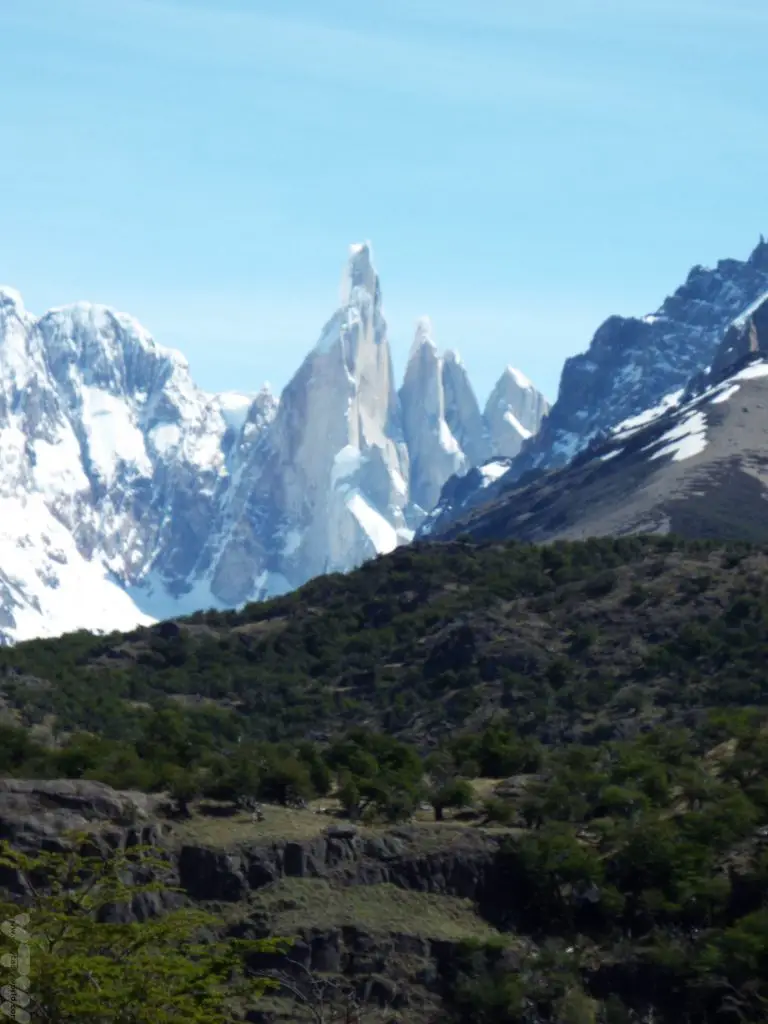Best Time To Visit Machu Picchu 2024 Update
It’s easy to see why Machu Picchu is Peru’s biggest tourist attraction. It was our primary reason for wanting visit to Peru (although during our trip we discovered so many amazing places including the Amazonian jungle) and we had high expectations. We weren’t disappointed. Here is our guide about the best time to visit Machu Picchu, how to get tickets and what to expect when you get there. This post has been updated to incorporate the changes to visiting for 2024.
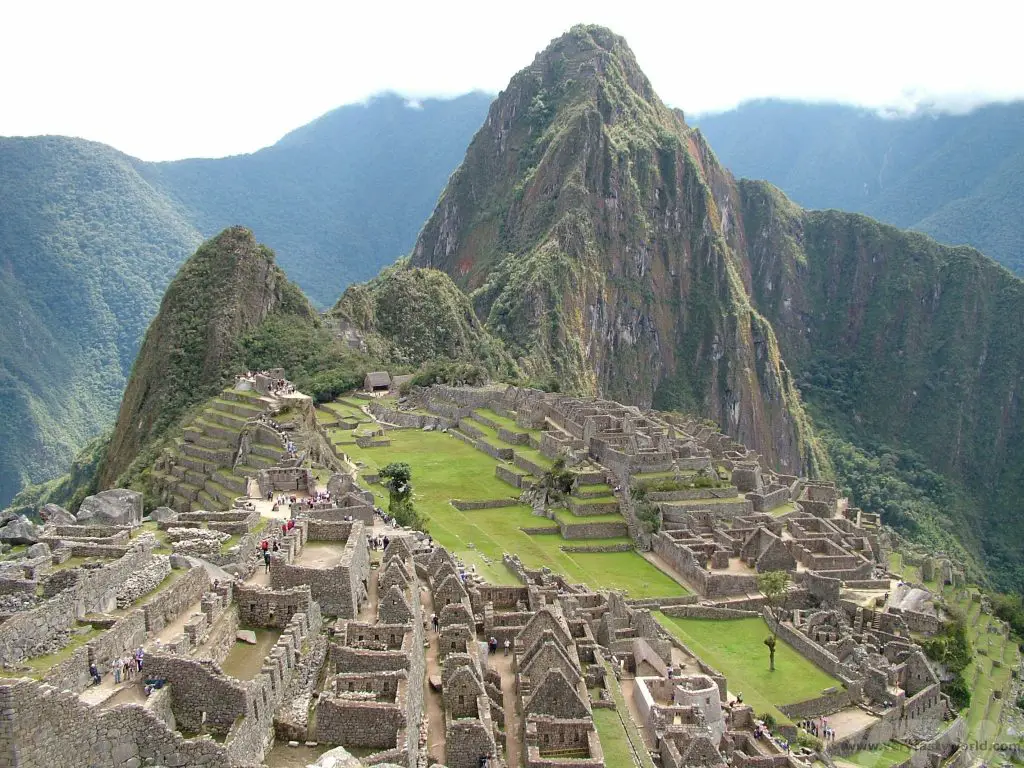
Please note that this post contains affiliate links. If you click through and decide to make a purchase we will make a small commission, at no extra cost to you, which will help towards the costs of running this site.
Best Time To Visit Machu Picchu
Machu Picchu can be visited year round. The most popular time to visit is June to September with shoulder seasons in May and October. Peru’s rainy season runs from November to March.
But the rules for visiting Machu Picchu have changed for 2024. The reason for this is that the authorities want to protect the site as much as possible and control the crowds. The total number of people allowed to visit is 4,500 each day. This number is split between the people who walk the full Inca trail, the short trail and day visitors.
For visitors to the site the morning and afternoon tickets have been replaced by hourly slots of 190 visitors each.
The Ministry of Culture has introduced 5 circuits. Follow this link to check the route for the sites you wish to see. The tours are of varying duration and are guided. There may be some time for self-exploration at the end of the tour. It is mandatory to have a guide. Because of this it may be worth considering taking an organised trip.
You are allowed to stay for a maximum of 4 hours.
Tickets can be purchased from the Ministry of Culture website.
If you wish to climb Huyana Picchu (the mountain behind the site as seen in the most famouse pictures) you have to purchase a separate ticket. Three hundred tickets will be available each day. There are hourly entrance slots (75 tickets each) from 06:00am to 13:00pm.
If Huyana Picchu sells out, it is possible to climb Huchuy Picchu and get a great alternative view of the site.
How To Get to Machu Picchu
There are several ways to visit Machu Picchu. The most famous is probably the hike along the Inca Trail. The Incas built an intricate and sophisticated network of trails throughout their enormous empire that encompassed Quito (Ecuador) in the north to Santiago (Chile) in the west and to Mendoza (Argentina) in the east. The trails ran to around 40,000km. But the best known trail is that which runs approximately 43km from Peru’s Sacred Valley to Machu Picchu via the sites of Runcuracay, Sayacmarca, Phuyupatamarca, Wiñay Wayna.
You can’t just turn up with your walking boots and rucksack – you have to book via a tour operator who is both registered and owns a licence. Access to the trail is controlled and can get extremely busy – up to 500 people, including guides and porters, make the trip each day. This mean that only about 200 visitors can walk the trail.
High season for this trail runs from April until October and should be booked well in advance. The classic four day Inca Trail starts at a place called Km82 (82 km along the railway track that runs between Cusco and Machu Picchu). It reaches a maximum altitude of 4200m so it is really important to have acclimatised fully before attempting the hike. Some operators offer a shorter trek, about 15km, which starts much closer to Machu Picchu, and can usually be completed within a day.
An alternative approach is to travel from the Cusco area, Urubmaba or Ollantaytambo by train. There are a number of options depending on your budget, from the relatively cheap to the downright decadent. Some trains are for Peruvian visitors only, so that local people can visit their country’s most famous attraction. We travelled on the mid-range Vistadome from Poyroy, a station located around 20 minutes from Cusco. It was an early start and the trip took around three and a half hours to arrive at the valley. A light meal and drinks were provided on the way and the views were stunning.
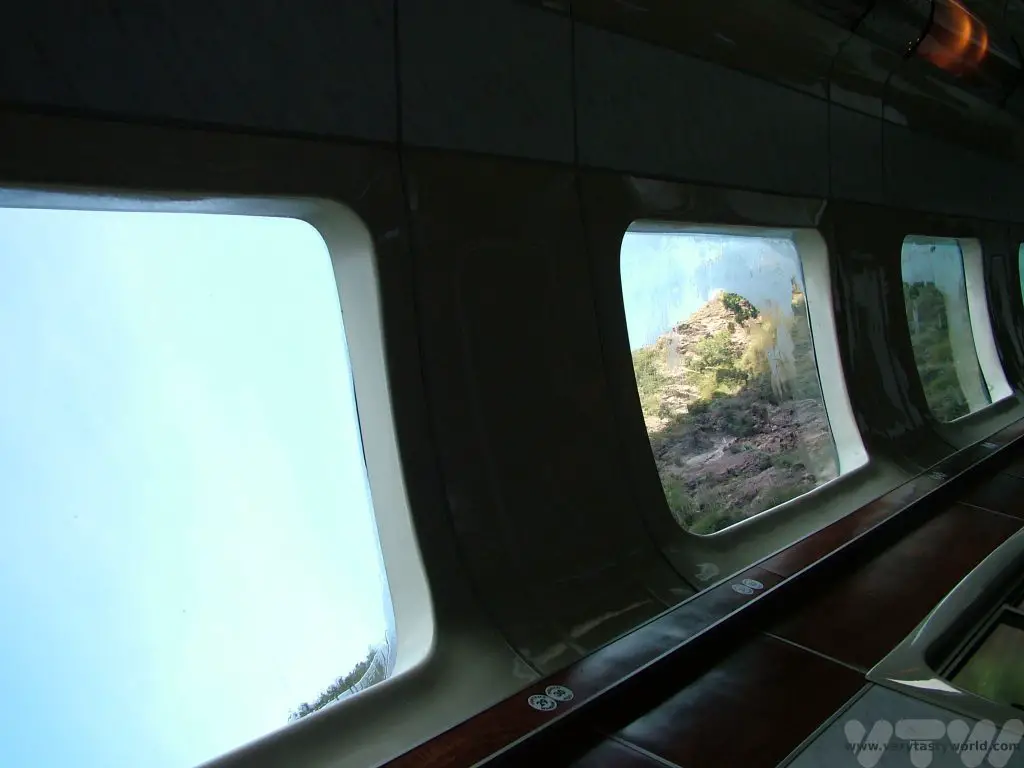
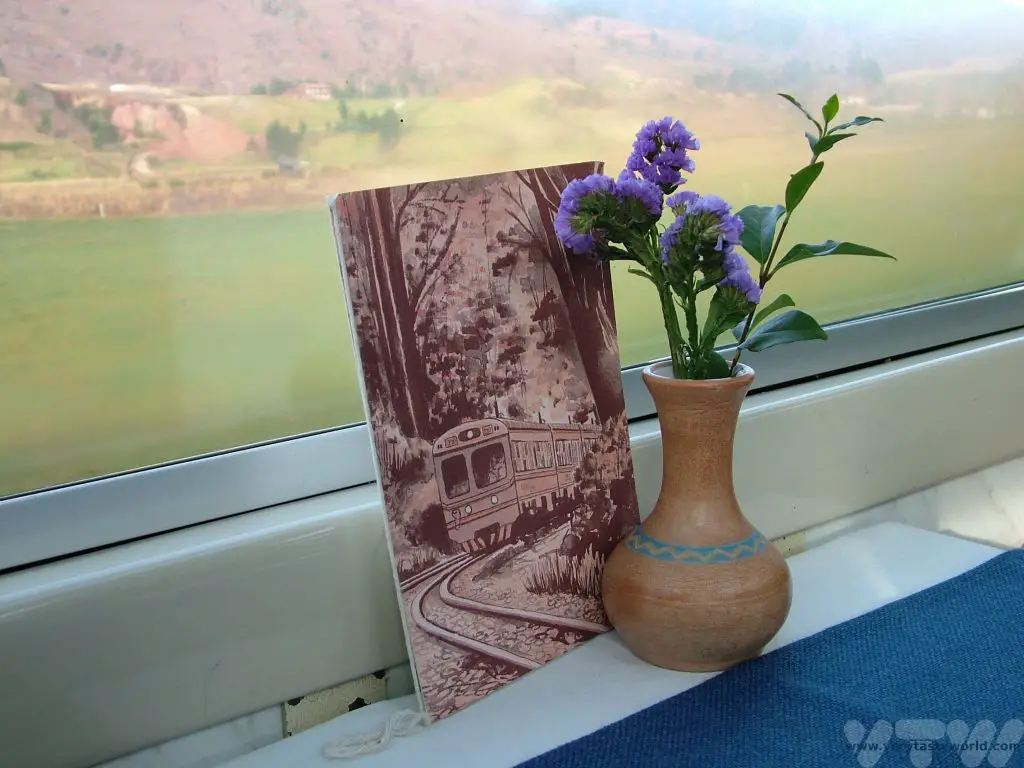
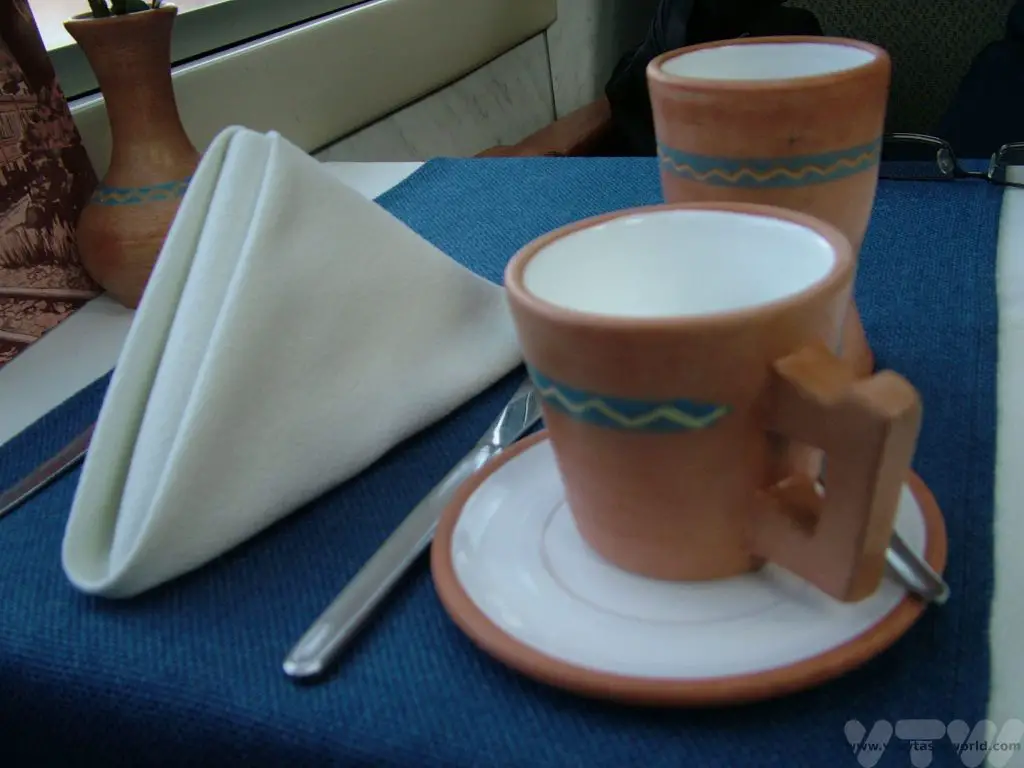
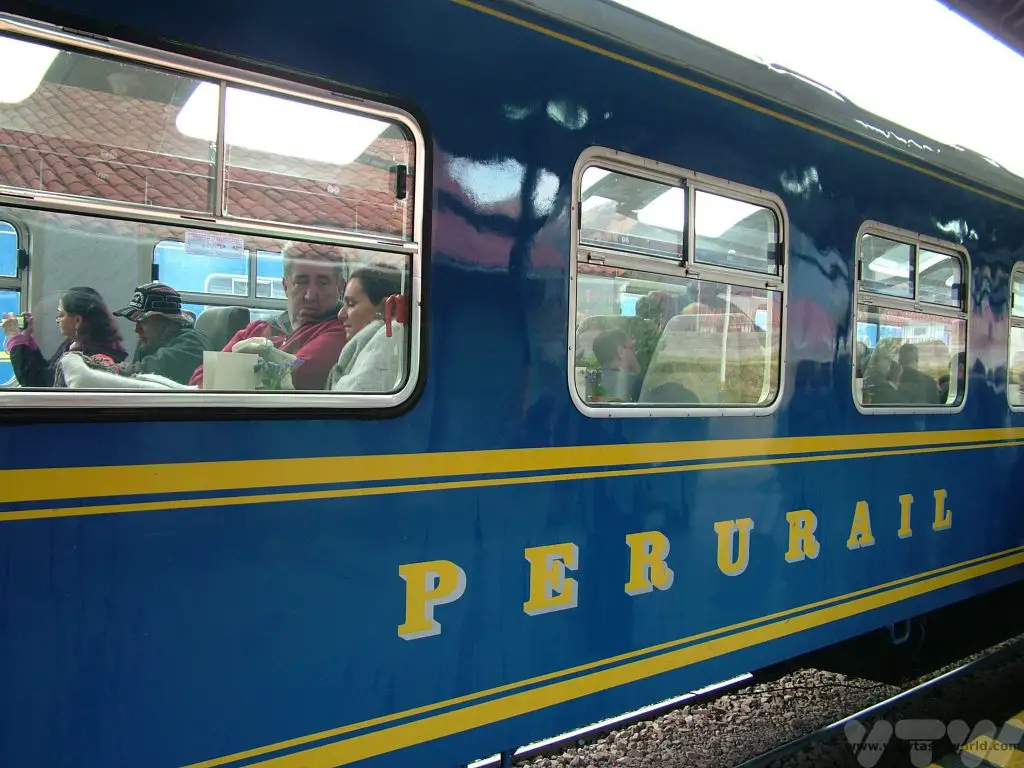
Transportation will be waiting close to the station when you arrive and you will need to buy a ticket to catch a bus that will take you up a road with an inordinate number of hairpin bends to the entrance, on a journey that takes around half an hour.
Arriving At Machu Picchu
Whether you arrive by trail or train it’s the most spectacular sight.
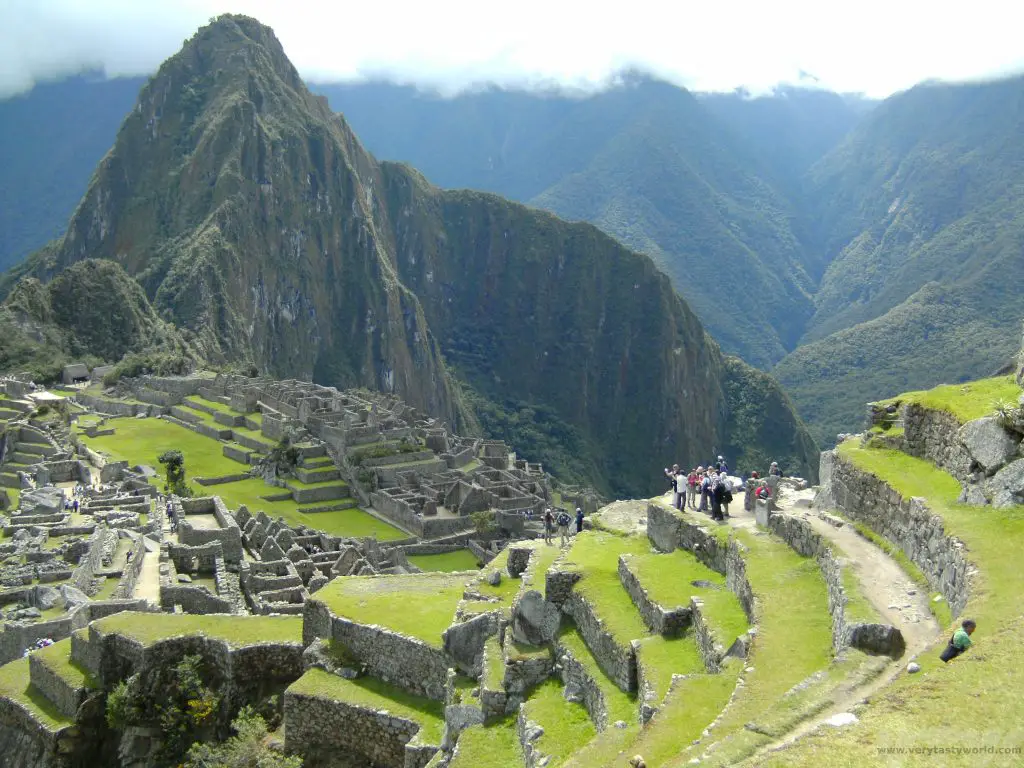
Machu Picchu was an Inca city that wasn’t located by the Spanish Conquistadors and hence wasn’t plundered or destroyed. It was discovered by American professor Hiram Bingham in 1911. Inca architecture really is remarkable (there are many examples throughout the Sacred Valley between this site and Cusco). The dry stone wall structures are not square, doorways are trapezoidal and the stones are laid in such a way as to provide strength and flexibility. Many of the stones have multiple angles and are cut and sometimes polished to fit together perfectly. They have survived centuries of earthquakes, remaining standing long after the Conquistadors’ flimsy structures had toppled over.
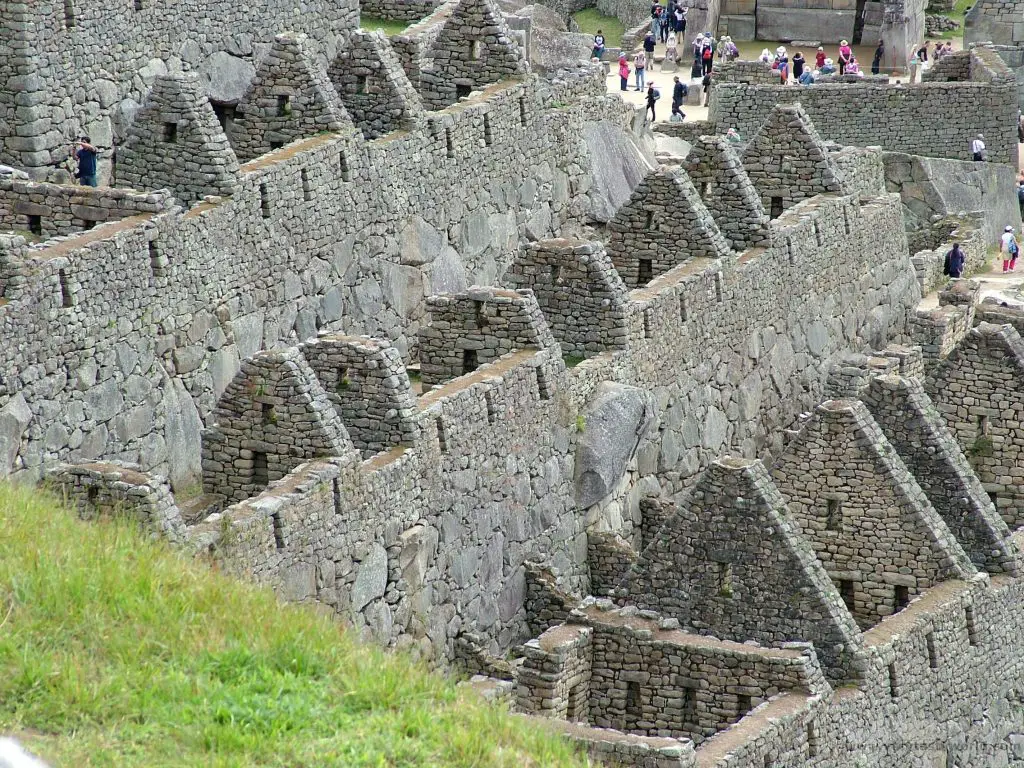
Although the functions of many of the buildings are not known for sure, archaeologists and anthropologists have determined that Machu Picchu was an important ceremonial site built as a royal estate for the Inca emperor Pachacuti.
The function of the Funerary Stone is not fully clear but it is thought that it might be a sacrificial altar.
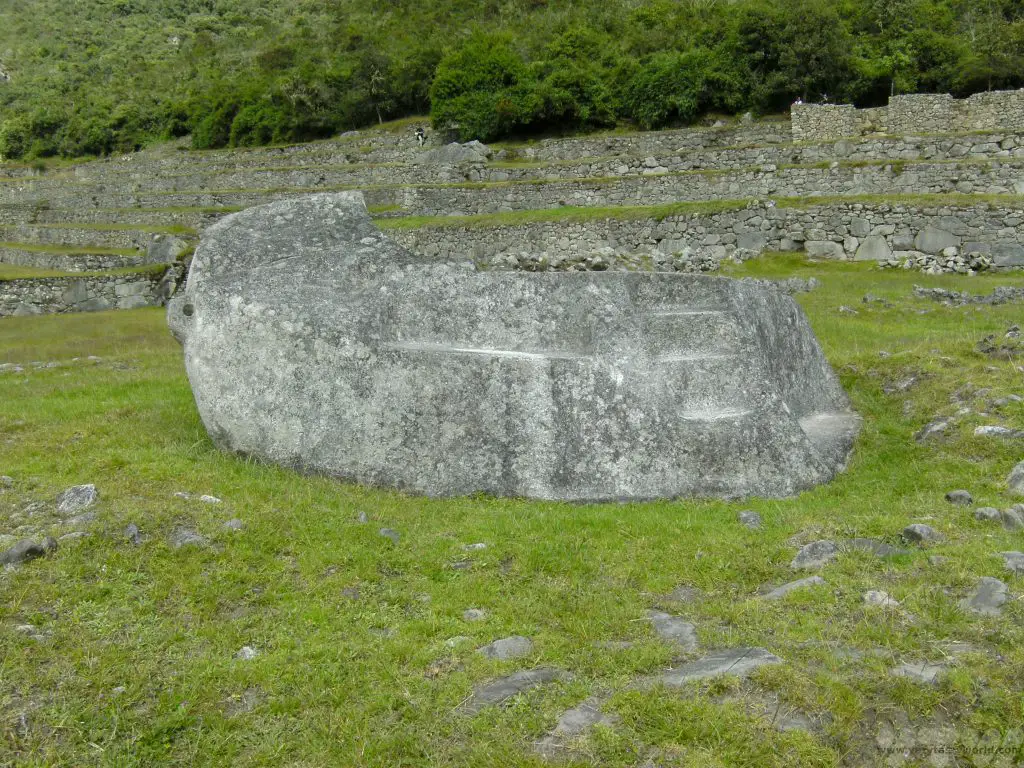
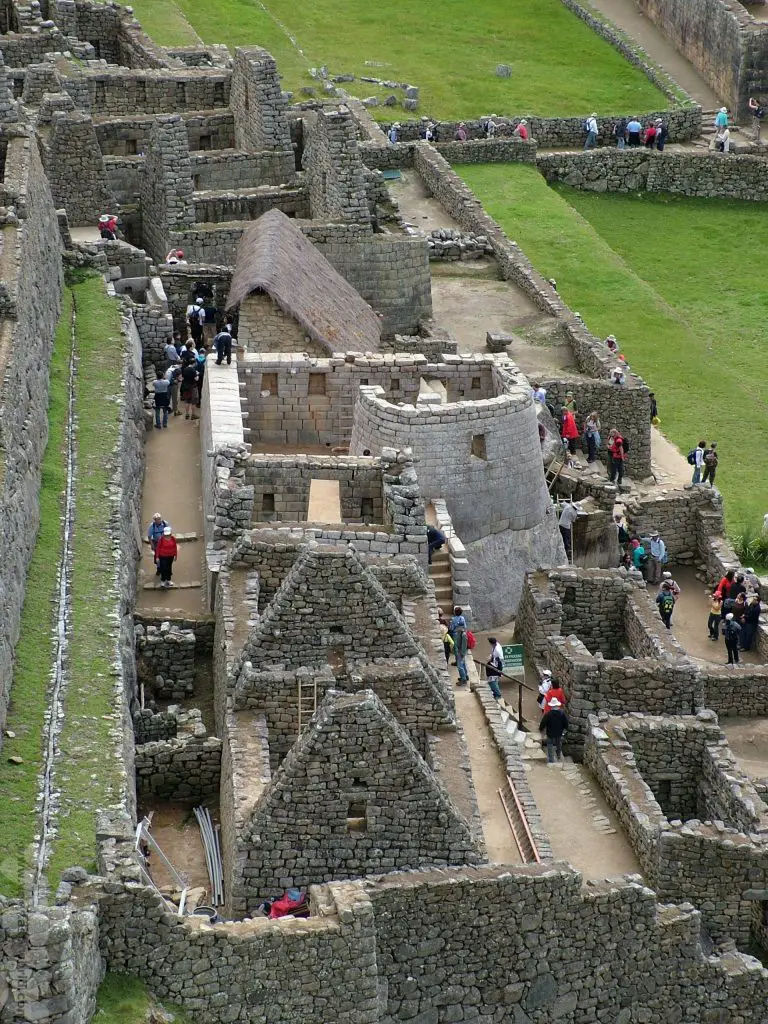
The Temple of the Sun was likely to be an astronomical observatory. Niches in the walls may have been used for offerings. There is a rock in the centre which lines up with the morning rays of the sun at the summer solstice.
The Royal Tomb – Palace of the Princess may have housed the Sun princesses or Ñustas. This structure takes full advantage of the natural rock formation.
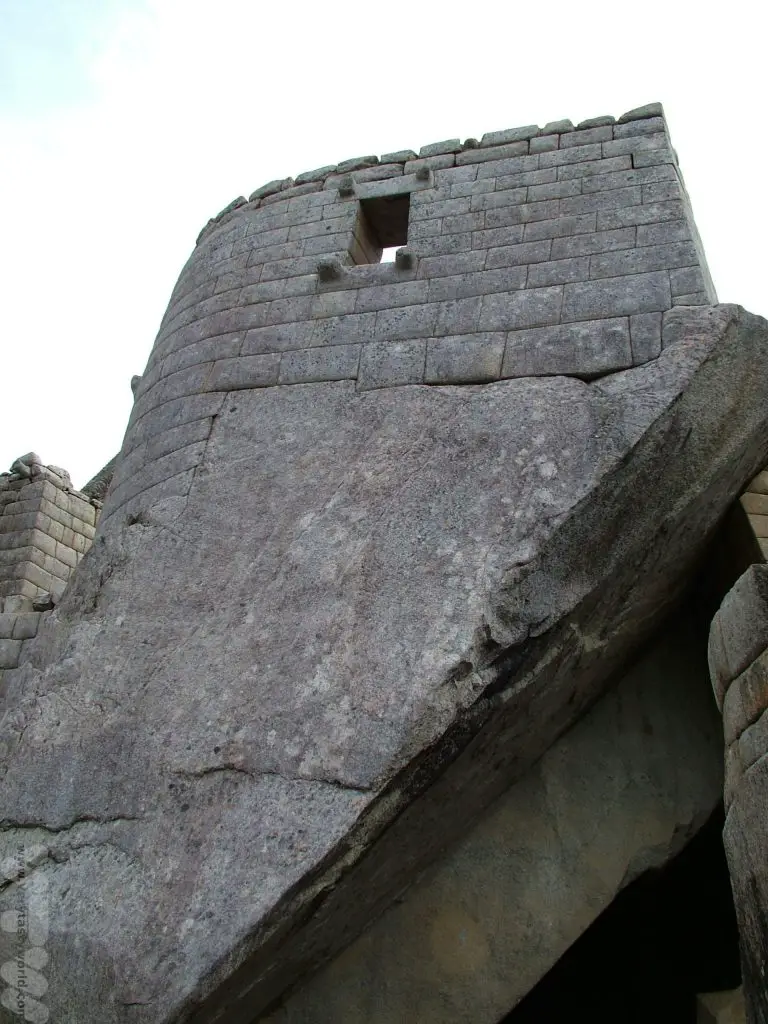
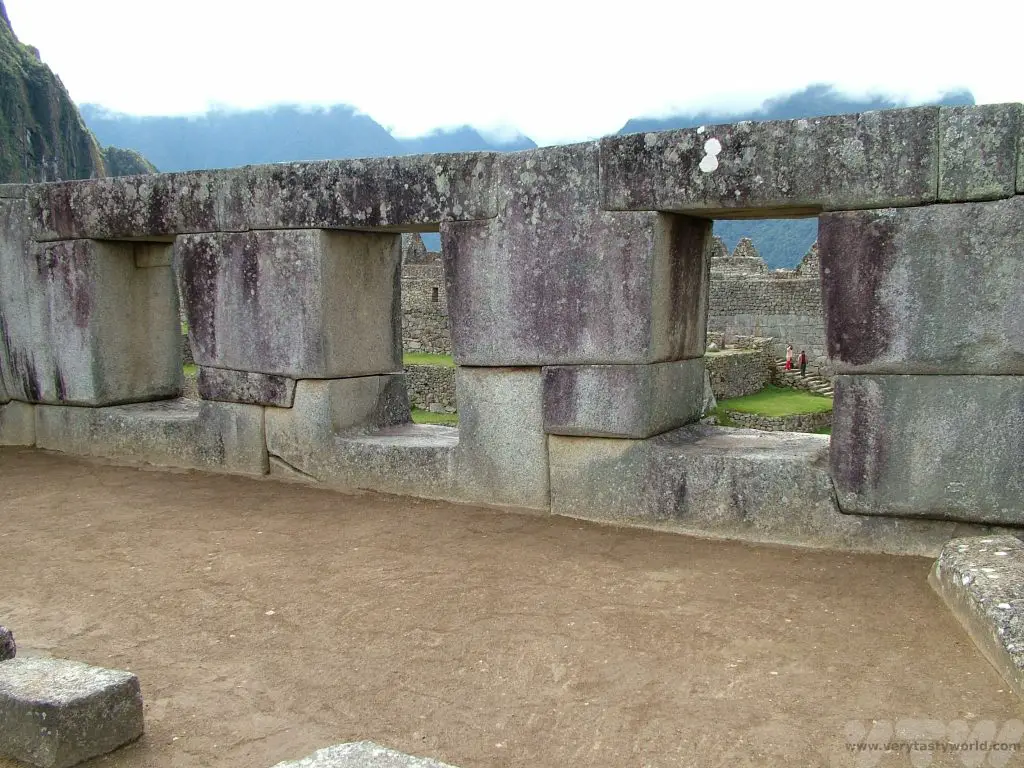
The Temple of Three windows is in the area considered to be the Royal Sector. Most archaeologists now believe that the site was built as an estate for Pachacuti Inca Yupanqui, the ninth Sapa Inca, that is, the emperor of the Inca empire.
The Principal Temple is the largest of the temples in the Royal Sector and has three sides with huge foundation blocks and carefully cut stones.
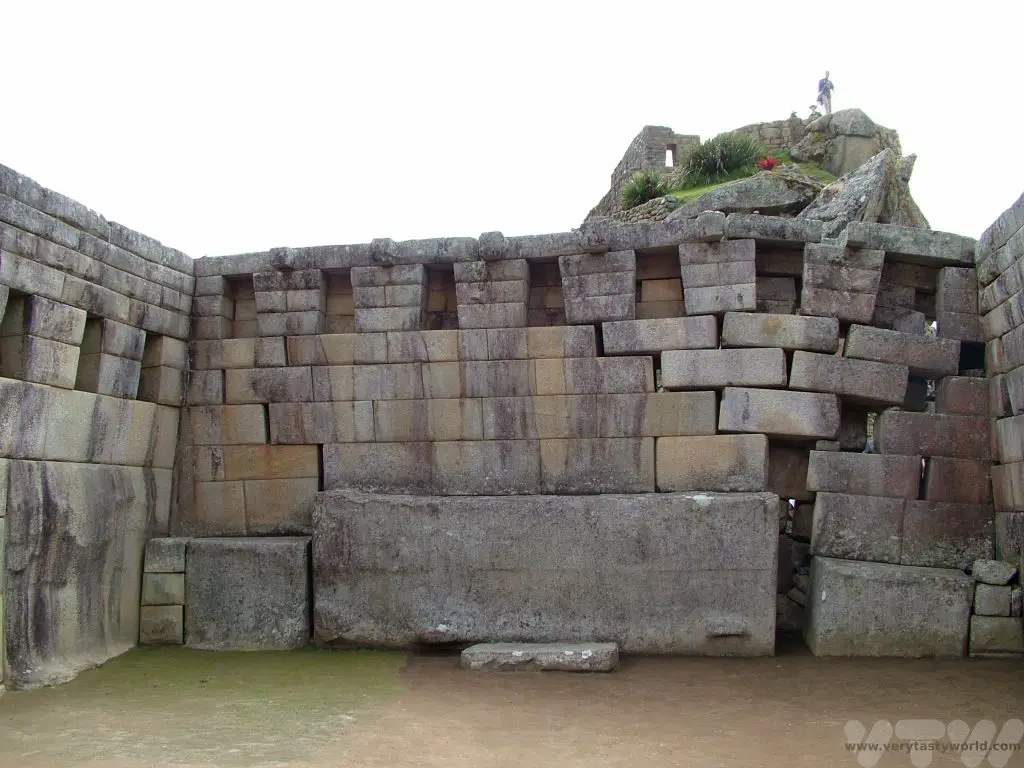
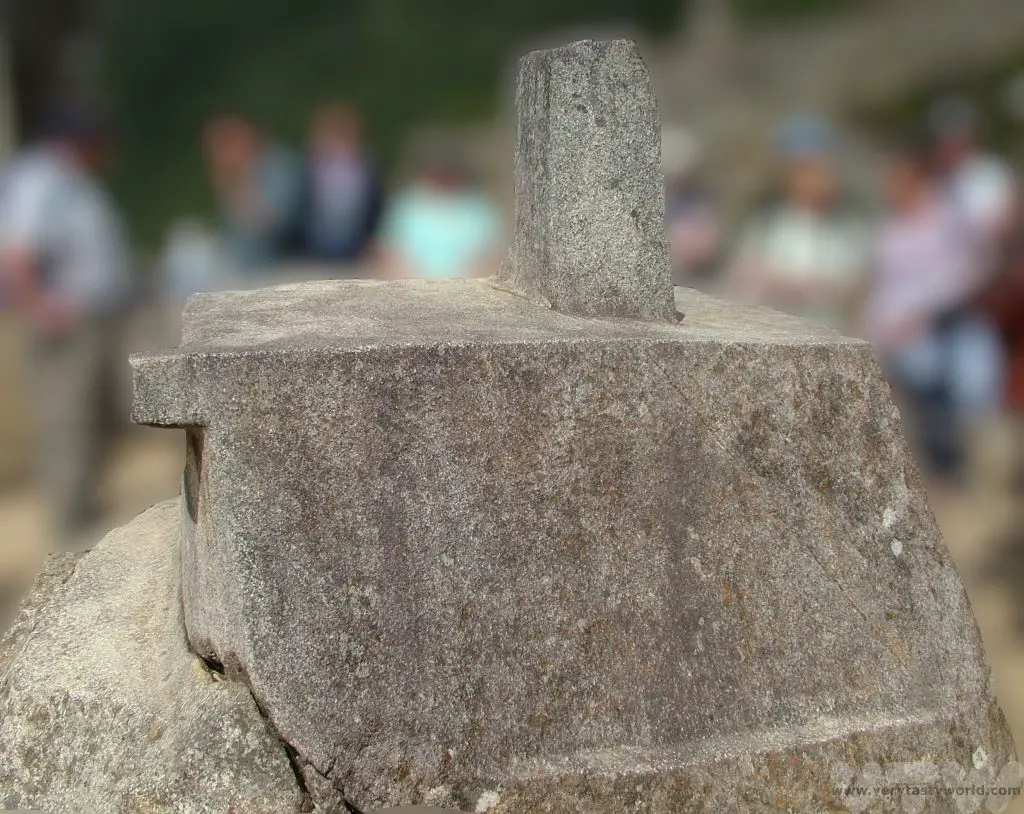
It is thought that Intihuatana was used by the Inca people as a sundial. It could have been used to predict the solstices. The shape of the rock resembles Huayna Picchu, the mountain located directly behind the stone.
The mortar district is characterised by the stone circles carved into the rock. The area is also known as the industrial sector. It was originally thought that the mortars were for crushing grain but there doesn’t seem to be evidence for this.
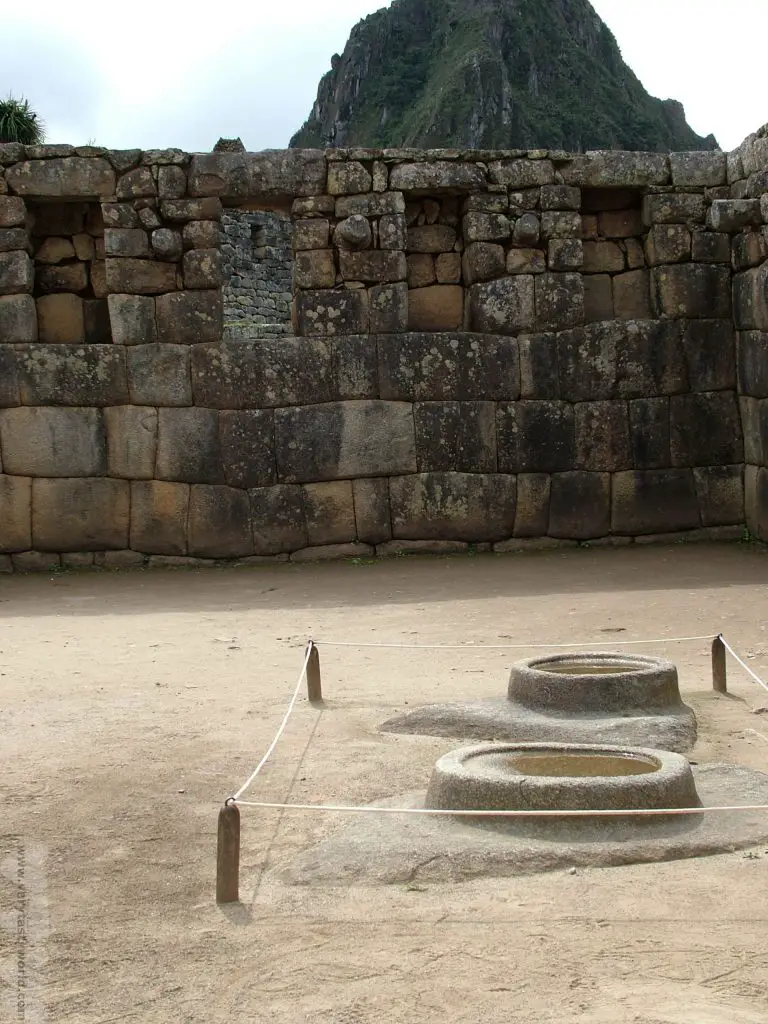
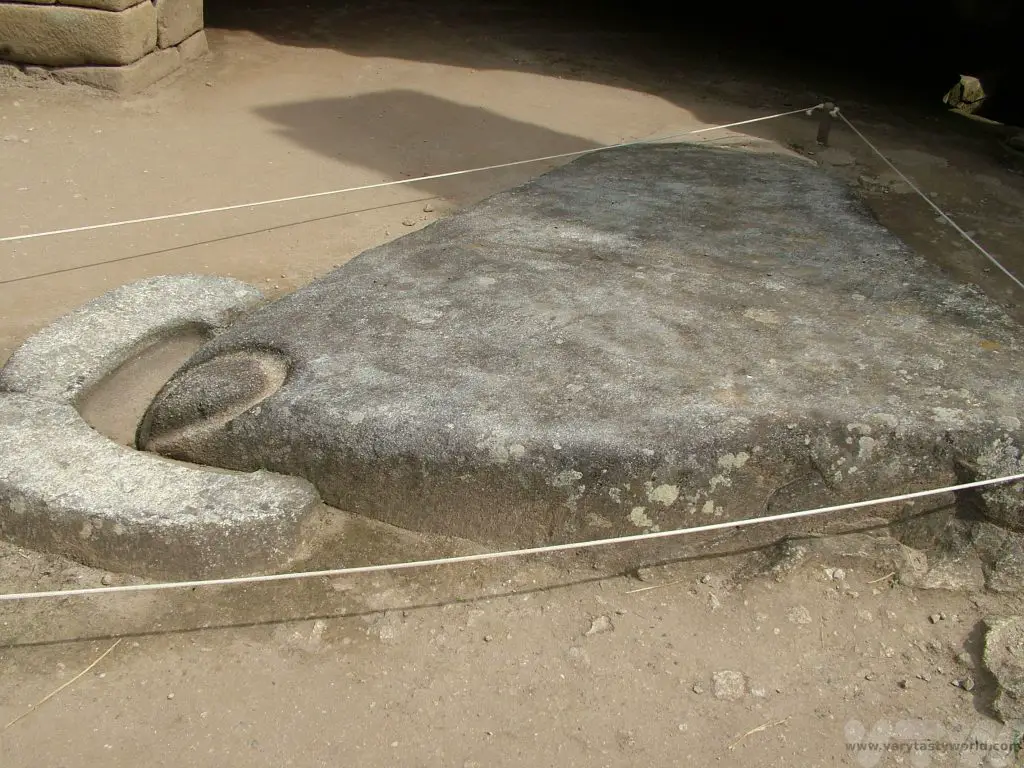
The Condor Temple was originally considered to be part of a prison zone but experts these days believe it was more likely to be a temple. One of the rocks has the appearance of the head of a condor, a bird considered to be sacred to the Incas.
And the terraces – both internal and external – are simply spectacular.
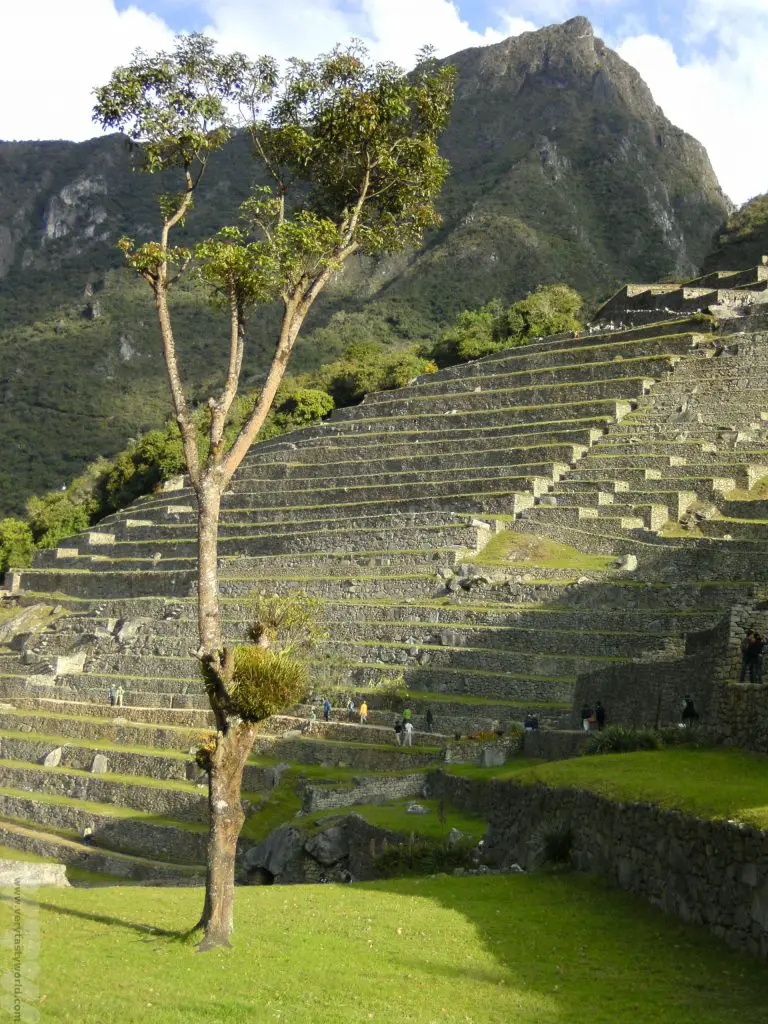
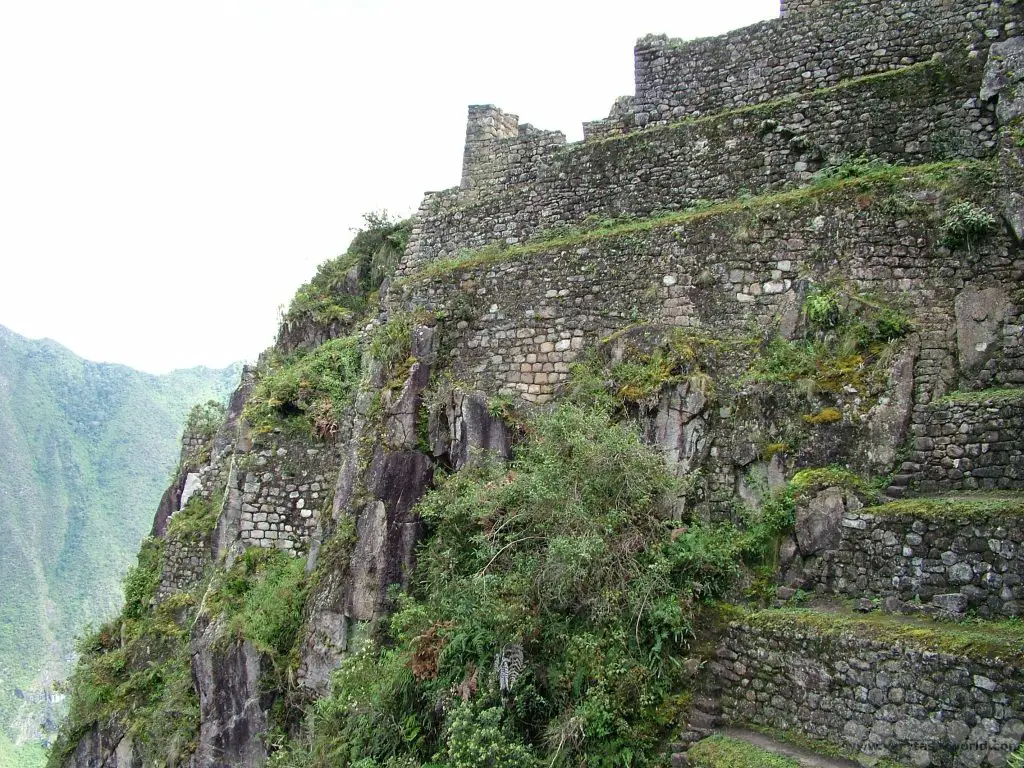
The site is huge and there’s still more of the city still to be reclaimed from the jungle – archaeologists are working at uncovering more ruins.
Overnight Stay
Most visitors who visit Machu Picchu are day-trippers but we decided to spend one night at the local village Aguas Calientes (which literally means ‘hot water’ on account of the hot springs) also known as Machu Picchu Pueblo or Machu Picchu Town, in the valley below. We visited before the new restrictions came in which meant that we could hang around the site until sunset when it becomes significantly less busy. (There is just one hotel at Machu Picchu itself and it is expensive.)
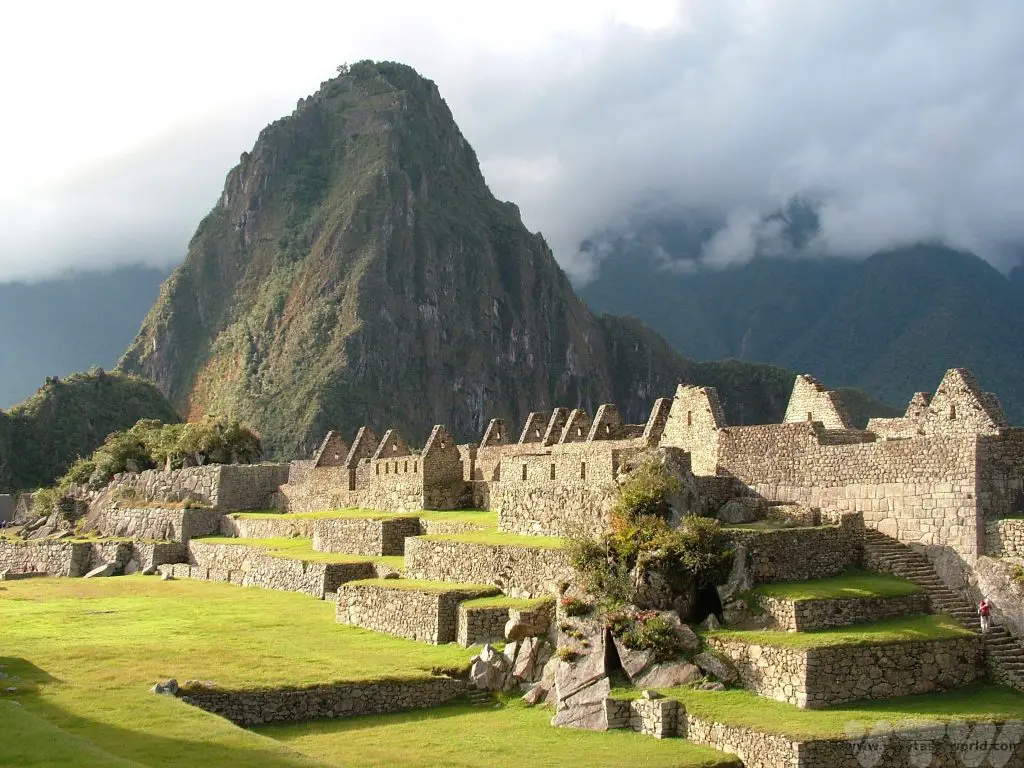
Aguas Calientes is set up for tourists – there are plenty of places to stay and restaurants to eat at. There are also thermal baths if you feel the need for a good soak at the end of a day’s exploration.
Climbing Huayna Picchu
Another essential thing we wanted to do as part of our visit to Machu Picchu was to climb Huayna Picchu on our second day. We recommend buying two tickets – one to visit the main site and another to climb Huyana Picchu the following day.
Only 300 people are allowed up there each day, and entrance is timed into hourly slots.
We started off early in the morning and caught the first bus from Aguas Calientes.
It’s actually an easier climb than it looks, although you do need to be reasonably fit, and took us about an hour to get right to the very top.
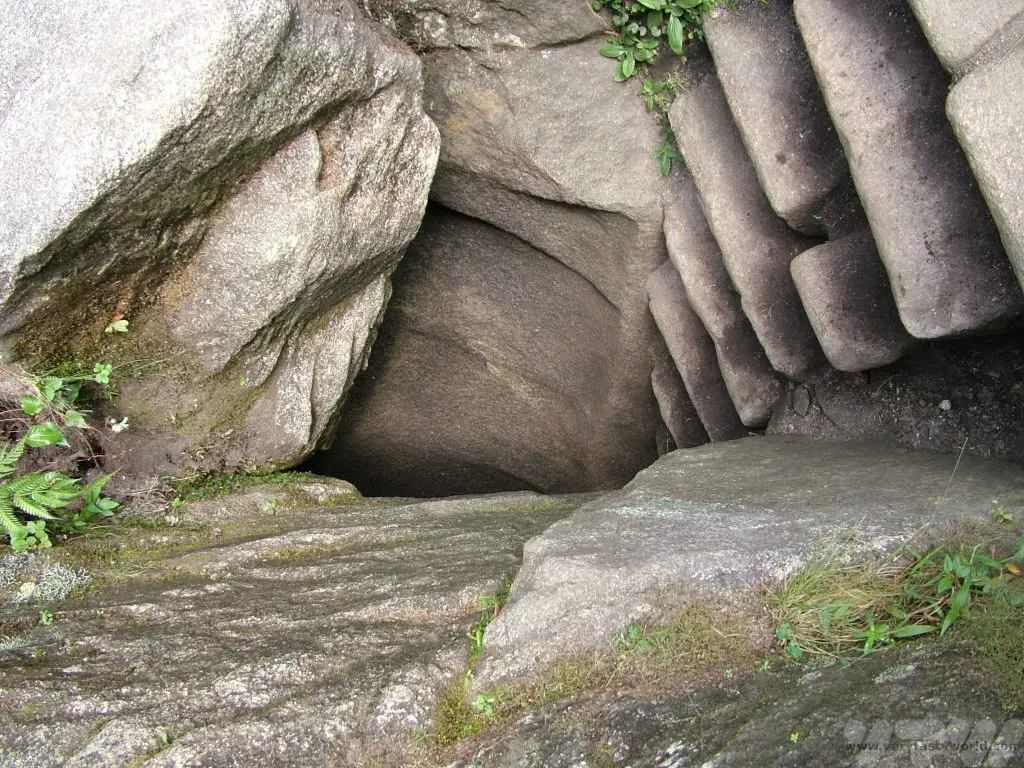
There is a need to wiggle through some rocks on the path.
Needless to say, the view was stunning.
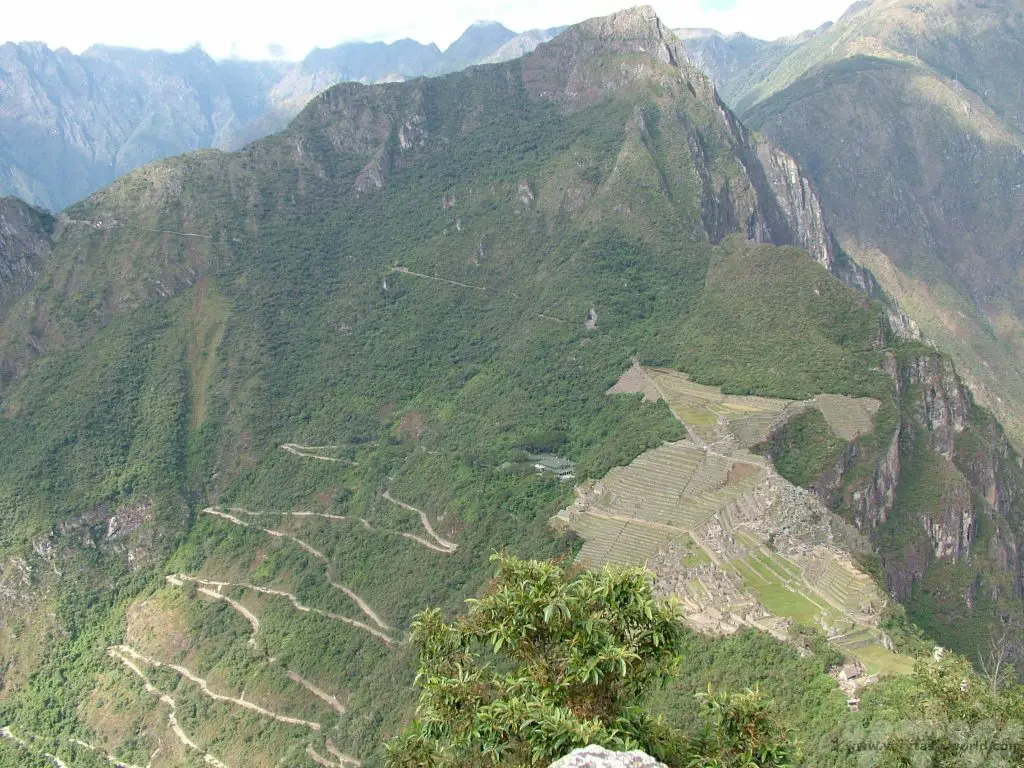
A rufus collared sparrow clearly took the easy route up.
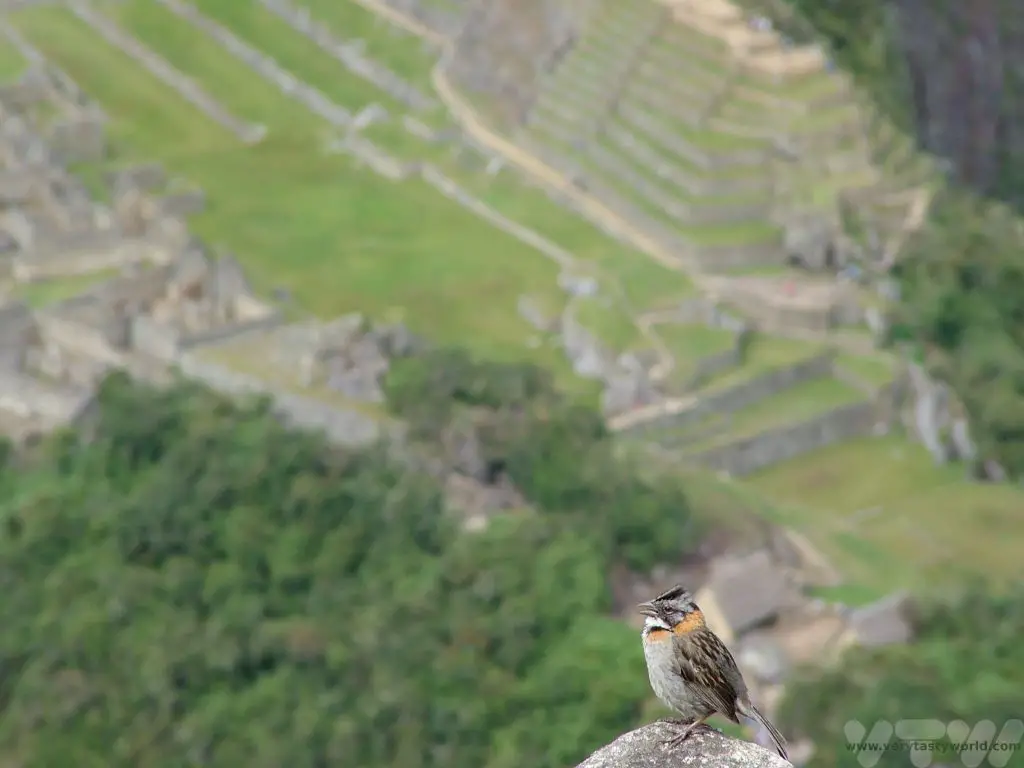
There are llama and alpaca lawnmowers roaming freely around the whole site and they’re clearly very used to hordes of tourists passing through.
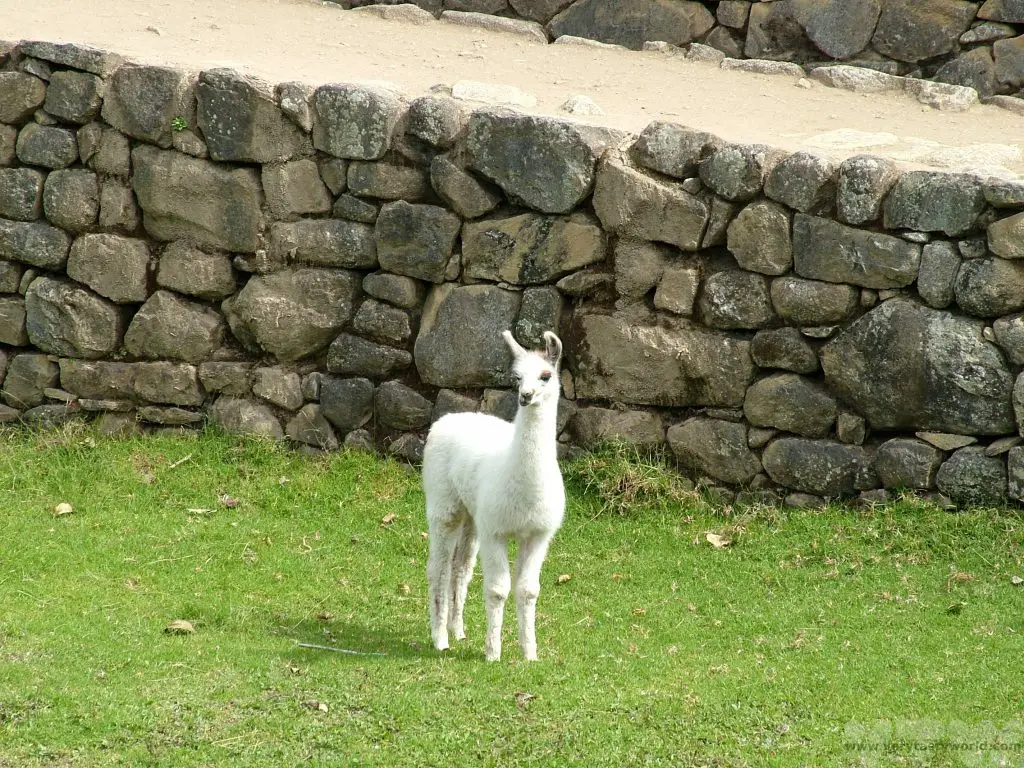
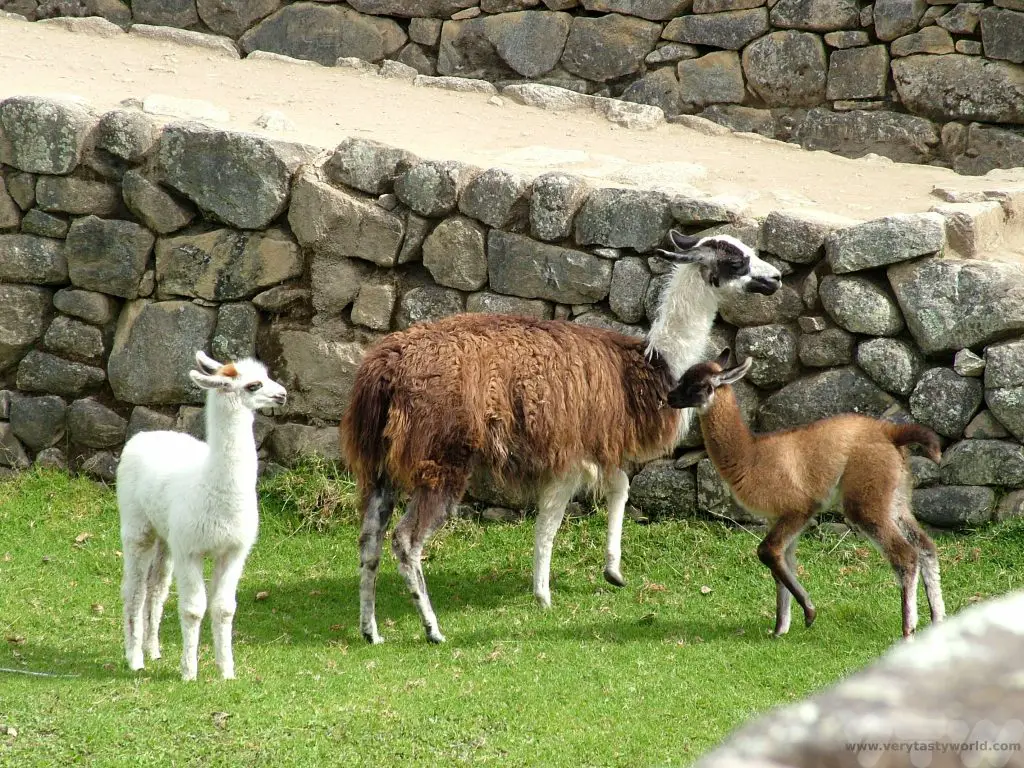
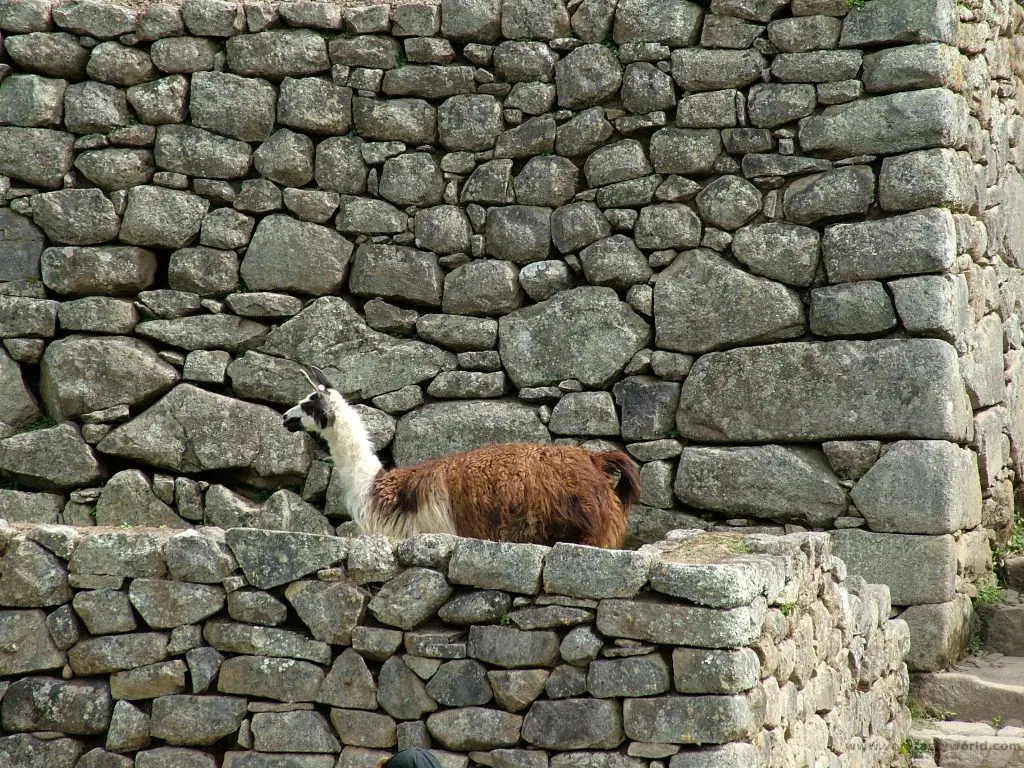
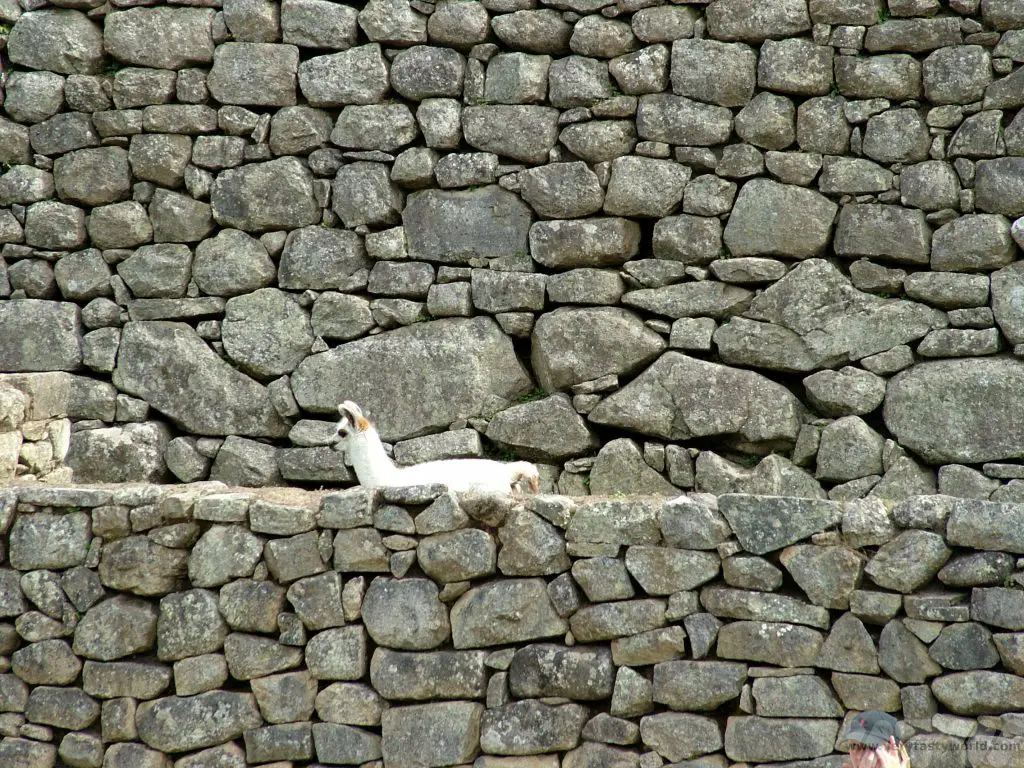
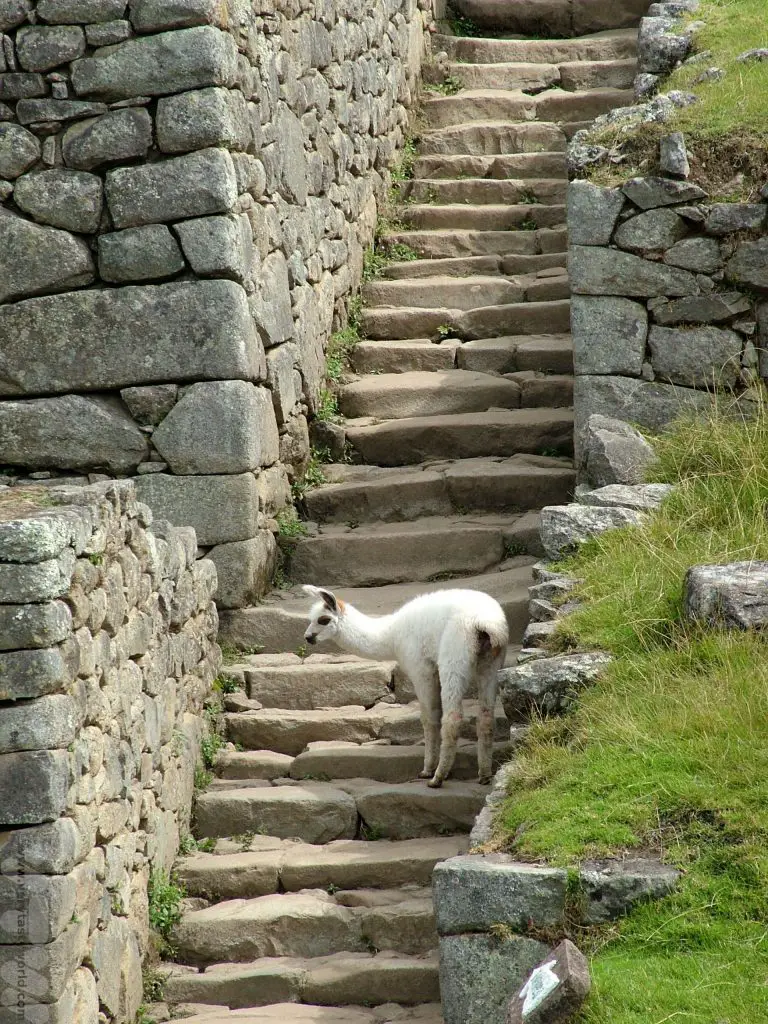
Practical Info About Visiting Machu Picchu
With the new restrictions on visitors book your tickets early! Really early – several months in advance.
There are no toilets on site. It is advisable to bring water, but take in a reusable bottle if possible.
Don’t bring loads of luggage. Bring ID – your passport will be fine.
You have a maximum of four hours at the site. Once you have exited you will not be allowed back in.
Other rules for visiting can be found here. https://www.machupicchu.gob.pe/prohibiciones/
Related Posts You May Enjoy

- Best Time To Visit Machu Picchu 2024 Update
- A 2 Week Patagonia Itinerary
- Day of the Dead in Campeche
- A Galapagos Land Based Itinerary
- RECIPE: How to Make Costa Rica’s Gallo Pinto
- A Tasty Puebla Food Tour
- Costa Rica Wildlife Sanctuary – Caño Negro
- Visit Torres del Paine National Park in Patagonia
- Atacama Desert Itinerary
Sacred Valley Highlights to Explore in Peru
The Sacred Valley of the Incas describes the 100 km corridor between the Andean city of Cusco, the ancient capital of the Inca empire, and the remarkable citadel of Machu Picchu. While Machu Picchu is undeniably the main attraction, there are so many other sites to visit. Here is a guide to some of the other Sacred Valley highlights to explore while you are visiting the area.
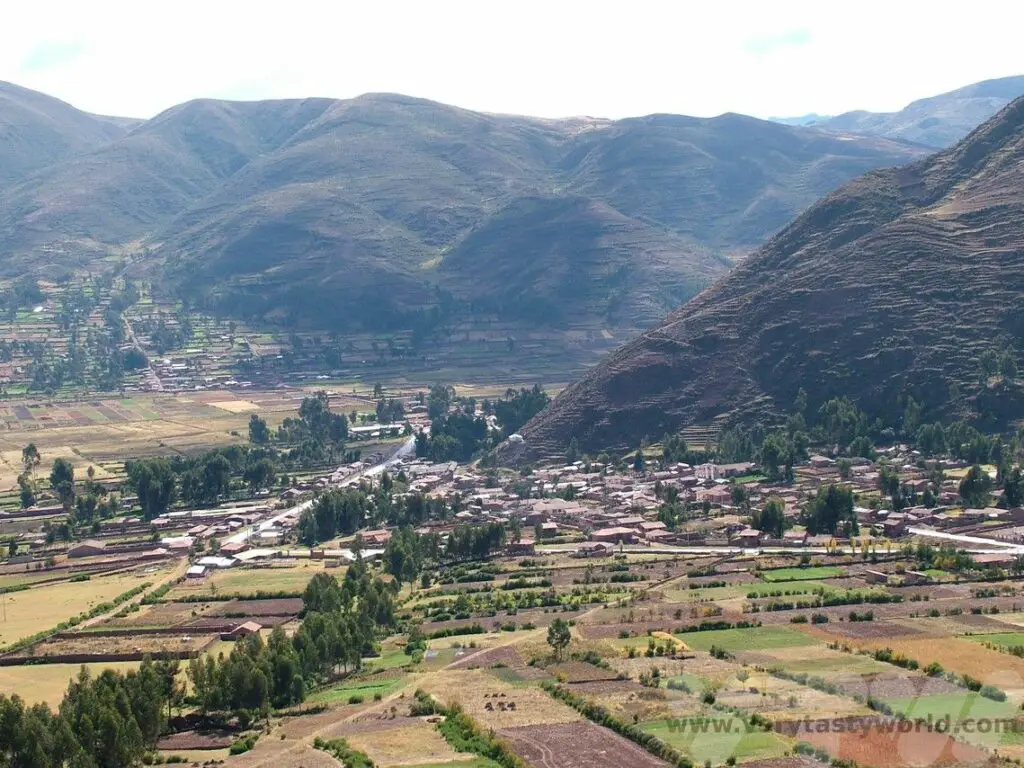
Please note that this post contains affiliate links. If you click through and decide to make a purchase we will earn a small commission, at no extra cost to you, which will help towards the costs of running this site.
Getting to the Sacred Valley
Most people fly into Cusco. Flights are available from all over Peru, notably its capital Lima, but also from other regions. We flew in from Puerto Maldonado having visited the Peruvian jungle some days previously. One thing to note is that Cusco is at an altitude of 3400m and if you are flying in from sea level, it is definitely worth spending a couple of relaxing days in the city and surrounds to acclimatise to the altitude.
An alternative route is to catch a bus up to the Andes. It takes around 22 hours from Lima. There are a few advantages to using the bus: it is cheaper, you can enjoy the mountain scenery and also it means that you climb up to the altitude at a more leisurely pace than flying in, which means that you can adjust more slowly.
Sacred Valley Highlights
Cusco
Cusco is the main city in the region and the most popular location to use as a base for exploring the Sacred Valley. The city was occupied by the Killke people from roughly 900CE until the arrival of the Inca in the 13th century.
It was to become the capital of the Inca Empire meaning that Cusco was, in its time, the most important city in South America. Cusco grew from a small village to a vast city thanks to Pachacuti Inca Yupanqui, who expanded the Inca Empire to cover a huge area of the South American continent. It is believed that Machu Picchu itself was constructed as an estate for Pachacuti.
Cusco’s Centro Historico is a UNESCO world heritage site and, like much of the Sacred Valley, sees colonial architecture blend alongside Inca ruins in a fusion of cultures and history. The main square is located right at the heart of the city centre. There are various shops and restaurants lining the perimeter of the square and it is frequently used for bands, who play concerts, and dance troupes. It’s a lively place where locals and tourists intermingle.
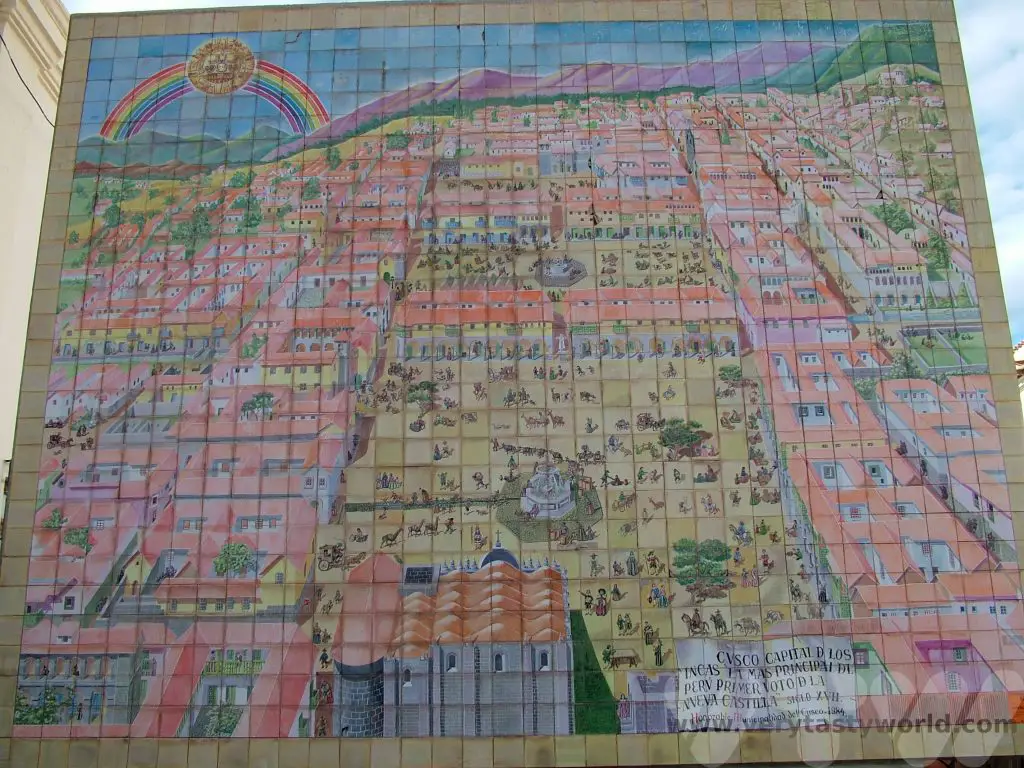
The city’s cathedral located in the north-east corner.
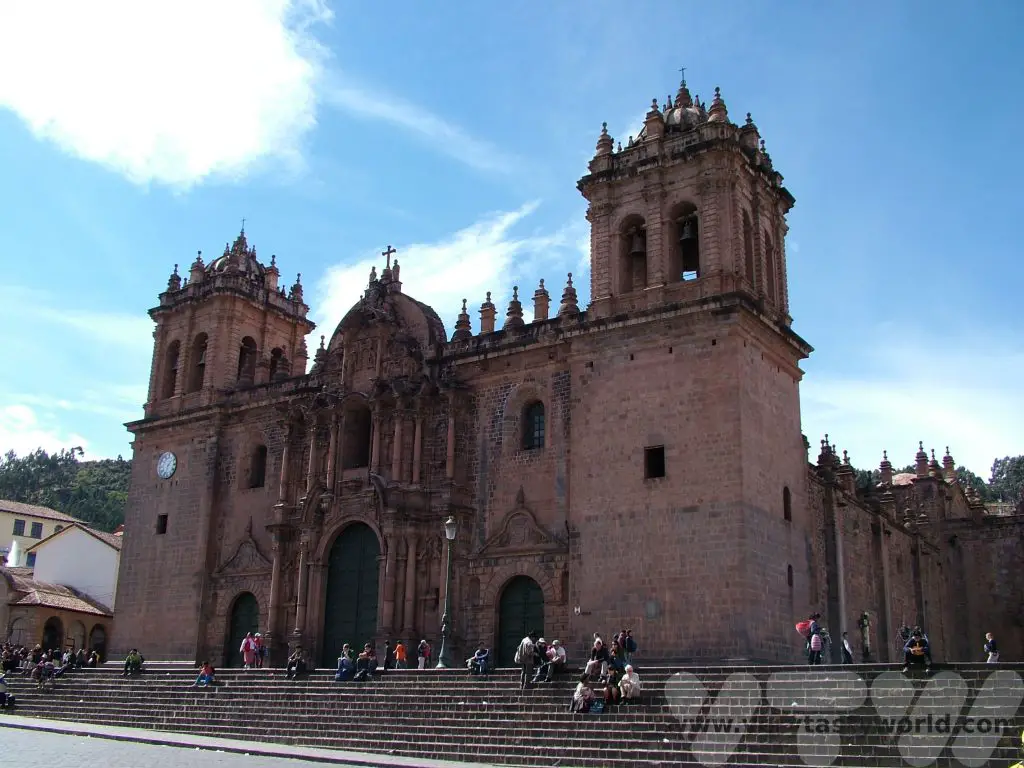
Another church that is of particular interest is the Church of Santo Domingo. It was built directly on top of the most important Inca temple of the region, Coricancha, and hence encapsulates the blending of indigenous and colonial cultures over the centuries.
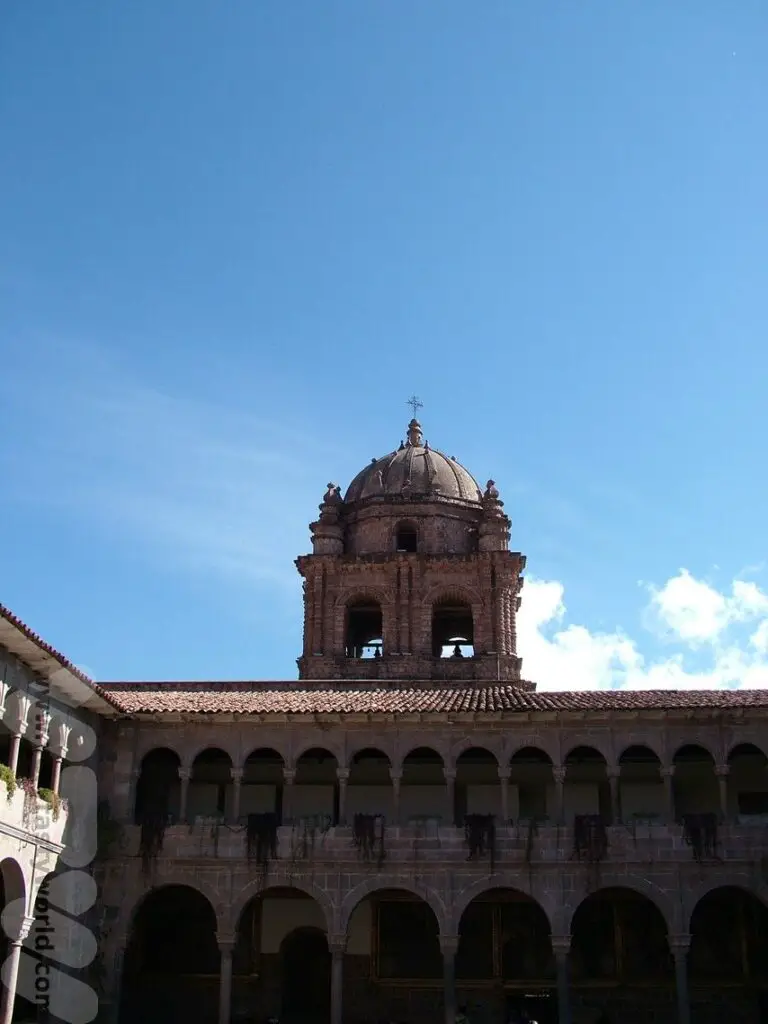
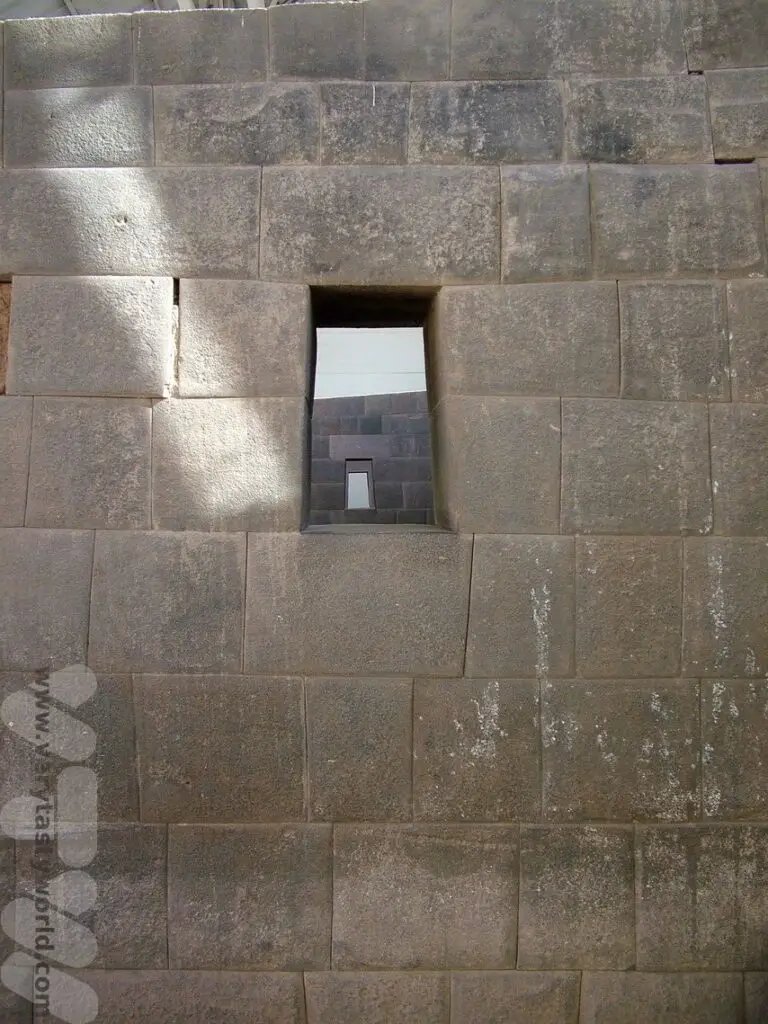
Sacred Valley Sites On The Outskirts of Cusco
There are a number of fascinating Inca sites located very close to Cusco. In fact, they are so close you could even walk to some of them if you were feeling energetic. Some are further out (up to 8km), so we recommend either booking a half-day tour with a local company, which would include a visit to all the sites, or getting a taxi, a bus or colectivo (a van/minibus that runs a particular route on no particular schedule – you usually go when the vehicle is full). You can buy a ticket that covers entry to Sacsayhuaman, Q’enqo and Tambomachay as well as the fortress of Pucapucara.
Sacsayhuaman
Sacsayhuaman is a dramatic citadel initially established by the Killke and significantly expanded by the Inca, located on a hillside overlooking Cusco.
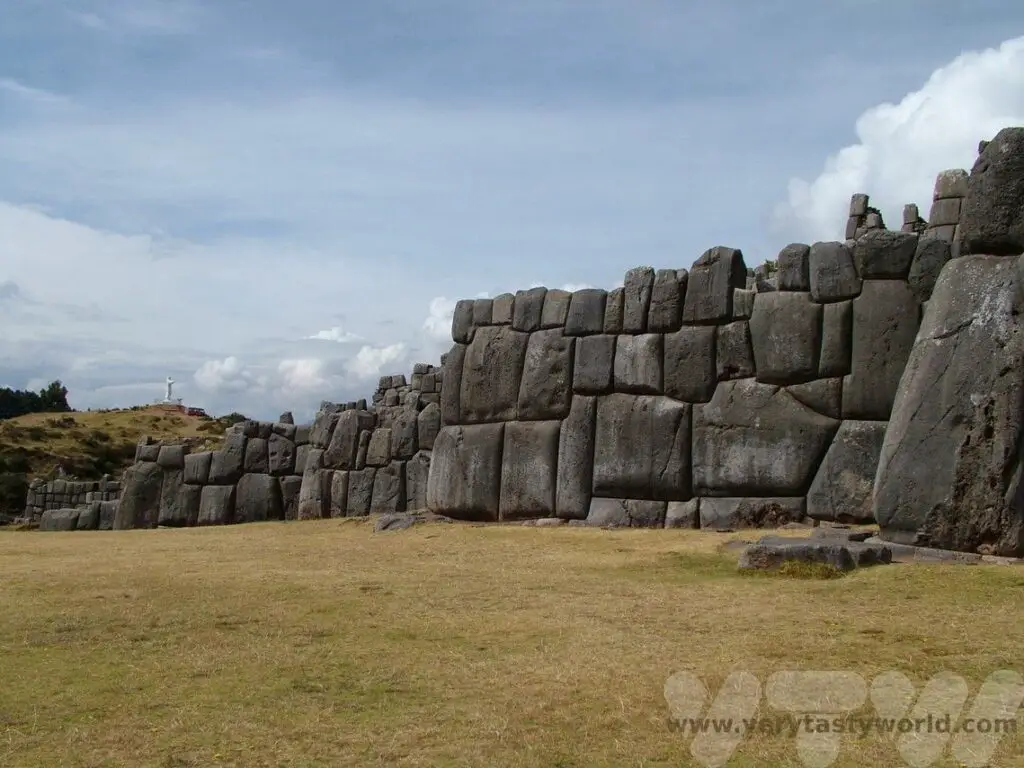
The construction is remarkable, notably the enormous stones that form the terrace wall which is adjacent to the plaza. The tallest parts of the wall reach over 6m in height and the huge stones are apparently packed so tightly that it’s impossible to slip even a single sheet of paper between them.
If you’re lucky you might even get an impromptu concert from a visiting band.
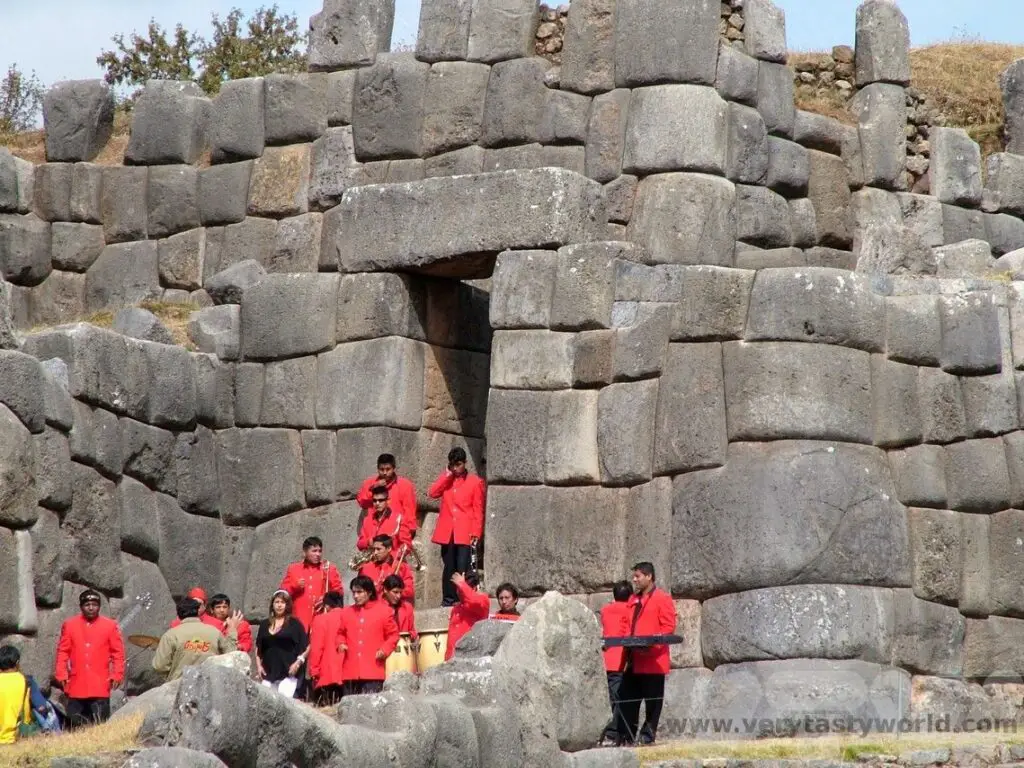
There’s a lovely view of Cusco from the site as well.
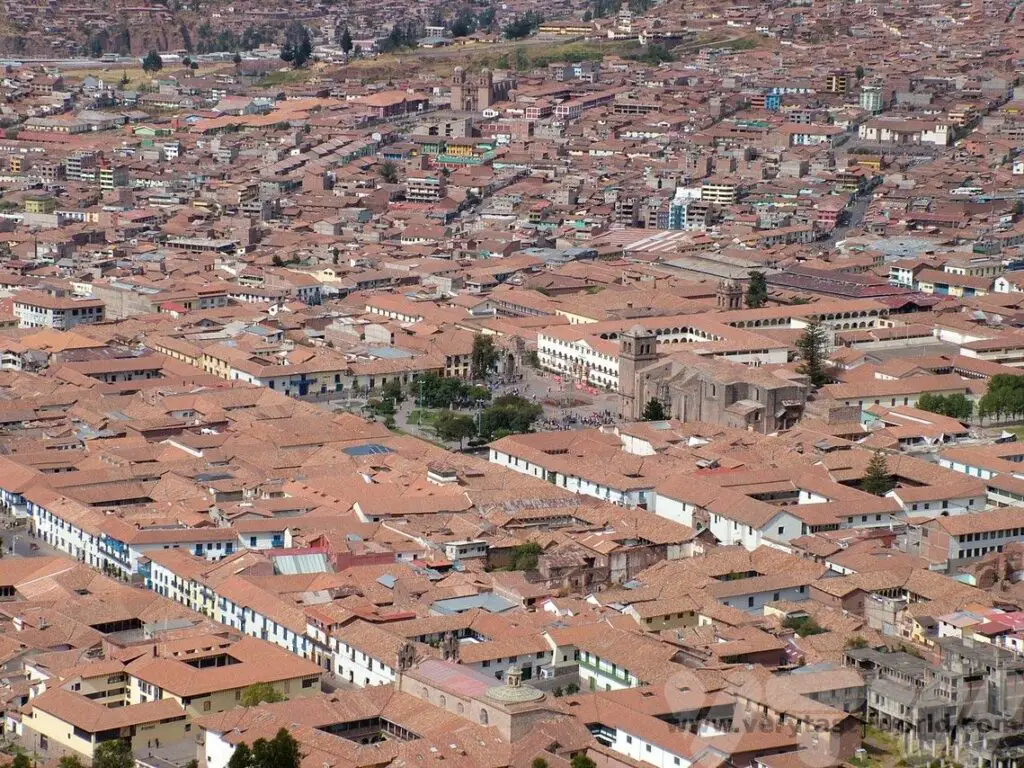
Tambomachay
This fascinating site, located near a number of springs, is comprised of canals and aqueducts that run through the rock terraces and flow into three waterfalls. The purpose of the site isn’t really known but it is thought that it may have been a sort of spa resort for the Incas or possibly a religious site.
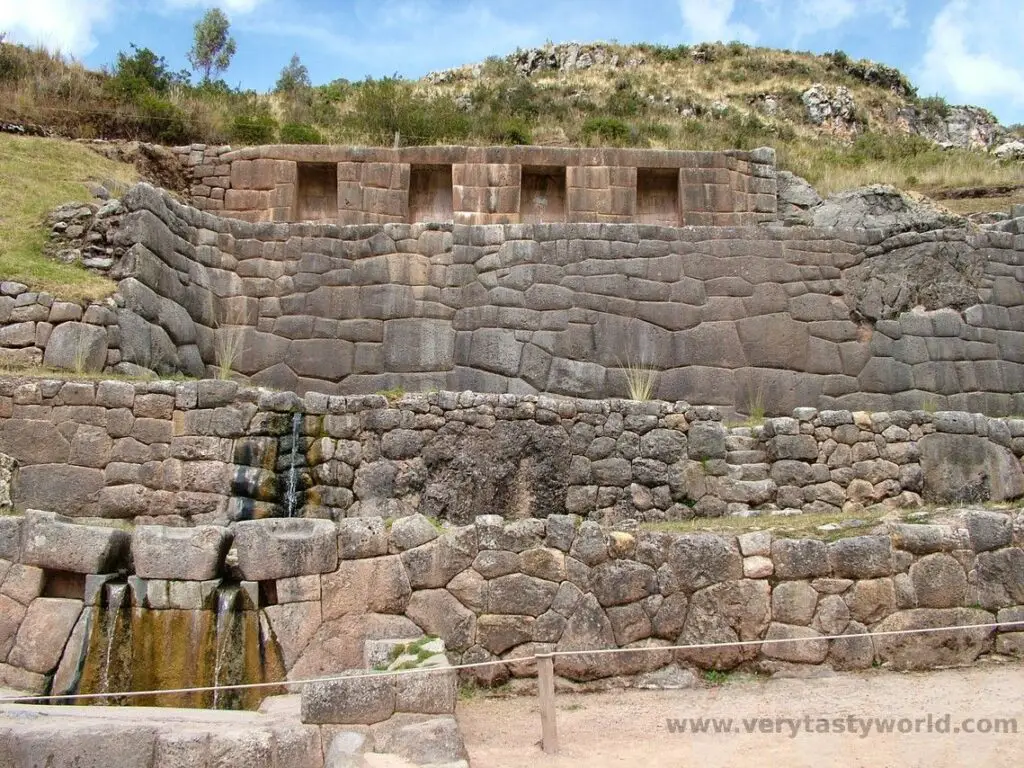
There is a legend that the water has particular qualities that may help those that are follically challenged. Yes, the water is purported to cure baldness! Further along the site, Colin was encouraged to wash his head under the water but, sadly, we can only report that the water’s reputed magical powers did not prevent further balding, nor produce any additional tresses. So it goes…
Q’enqo
This is an archaeological site thought to be a holy place or huacas. Huacas used existing rocks as a site for religious ceremonies. It is thought that sacrifices may have taken place here.
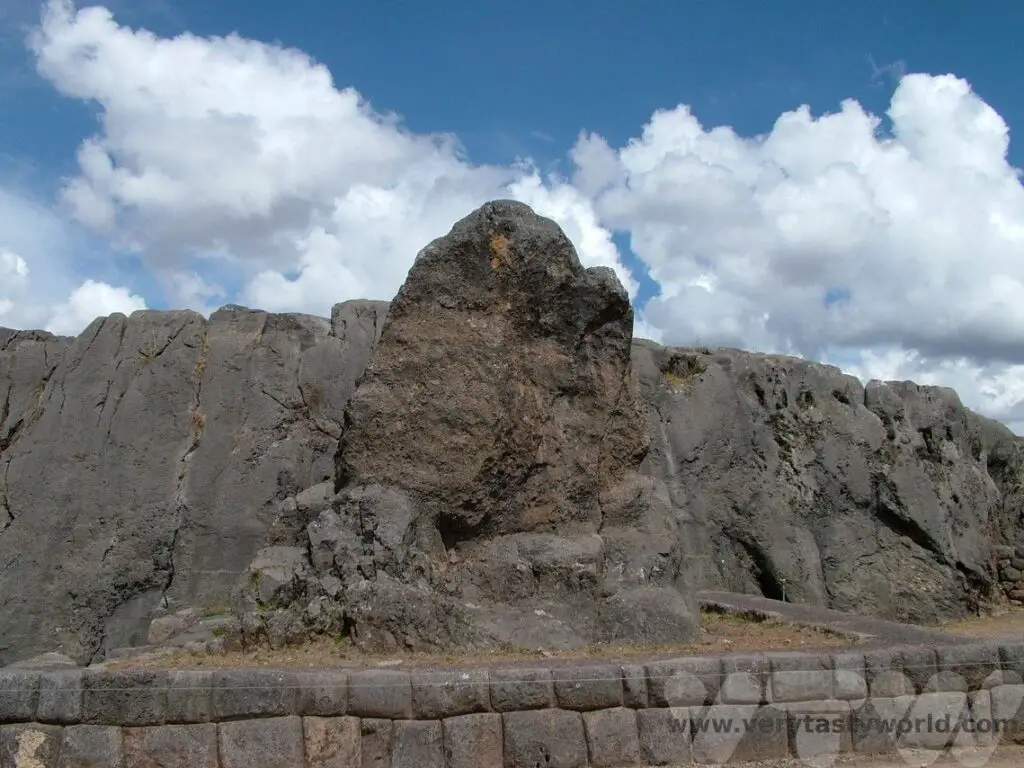
The name Q’enqo is thought to derive from the Inca word for ‘labyrinth’ possibly on account of the winding passages carved into the rock. These include several features such as altars. It’s possible to wiggle inside and explore the carved rock within.
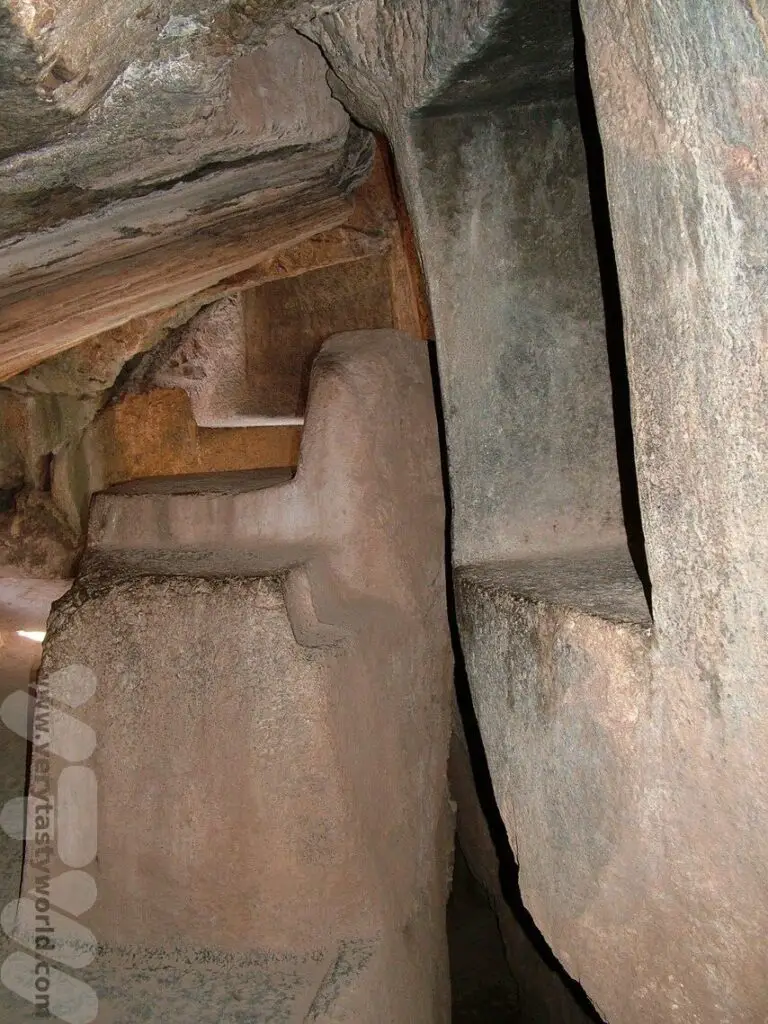
Further Along the Sacred Valley – A Day Trip
Depending on how much time you have, you can explore the Sacred Valley at your leisure. There are various transport options for travelling to the main towns in the region. There are taxis (most expensive), buses and colectivo (cheapest) available in the major towns. If you are short on time there are a number of companies that can offer day trips to the sites across the Sacred Valley. Many will offer a pickup from your hotel. These are usually full day tours and will often start early in the morning.
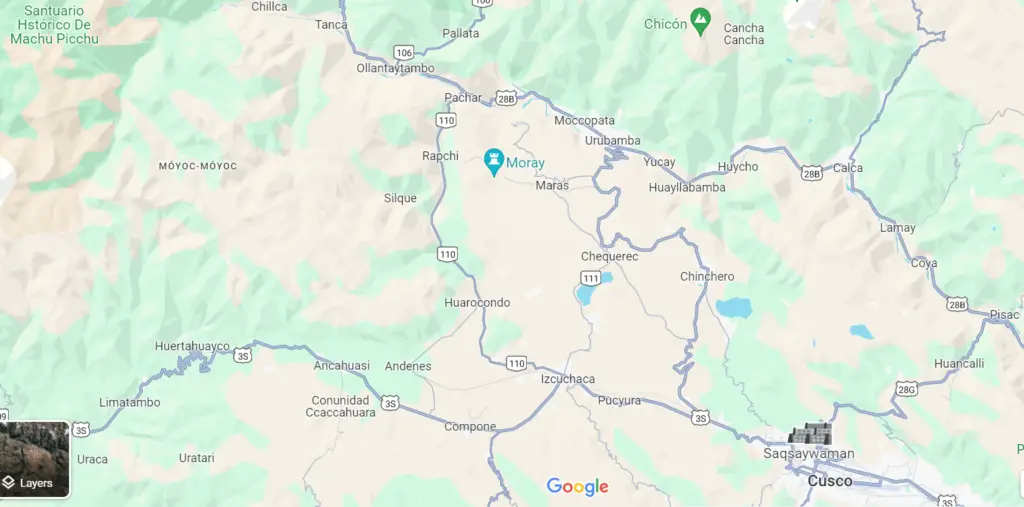
There are many sites to see in a day, so some tours may prioritise some sites or activities over others. For example, some may take you to Pisac’s market but not its Inca ruins. It’s worth shopping around to decide which towns and activities are of most interest to you.
Pisac
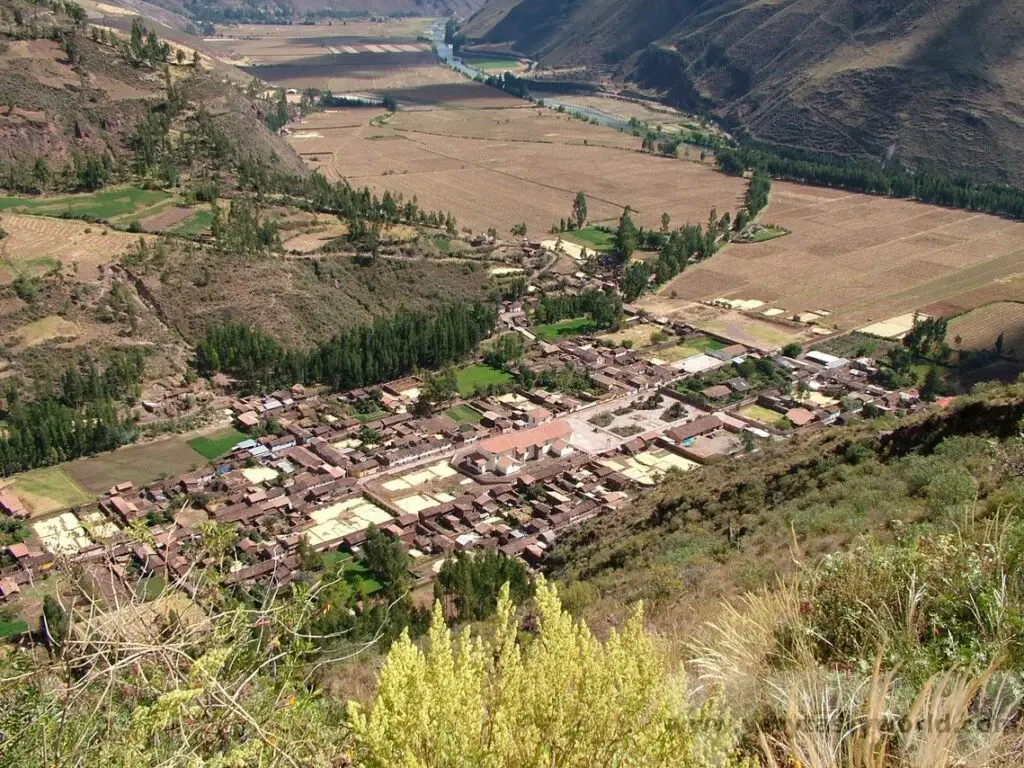
This town nestled in the Sacred Valley is famous for its market, the largest in the region. Officially it was a Sunday market but it is so popular that it runs pretty much every day. It is a bit touristy but if you are after souvenirs – and you like shopping – it is worth a visit. Arrive as early as possible to avoid the crowds.
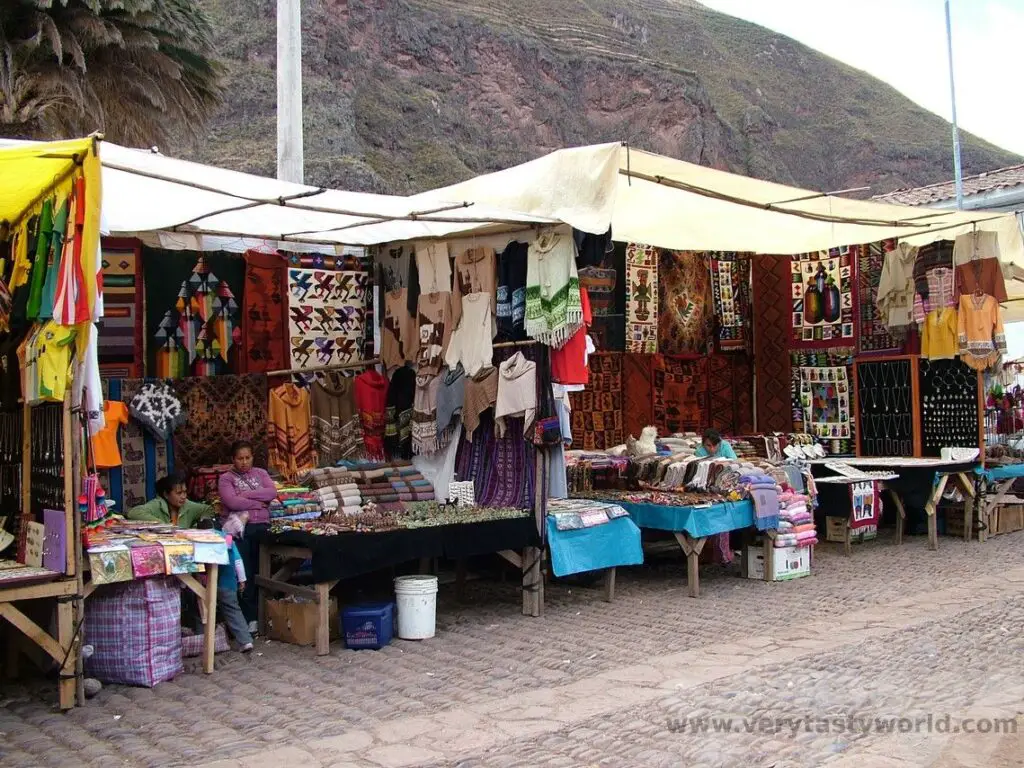
Pisac also has some splendid Inca ruins if you don’t want to haggle for souvenirs but check whether a visit to this site is included in the tour as some prioritise the market.
Chinchero
This is a charming village which has a lot of history and offers another blend of Inca and colonial architecture.
Túpac Yupanqui (the son of Pachacuti) who was the emperor of the Incas between 1471 and 1493, built a grand palace in this area. (Curiously, some academics believe that it was the Incas, led by Yupanqui, who discovered the Galapagos Islands. Although there is no evidence for this, it does reflect the vastness of the Inca empire in its heyday.) The terraces were used for agricultural purposes.
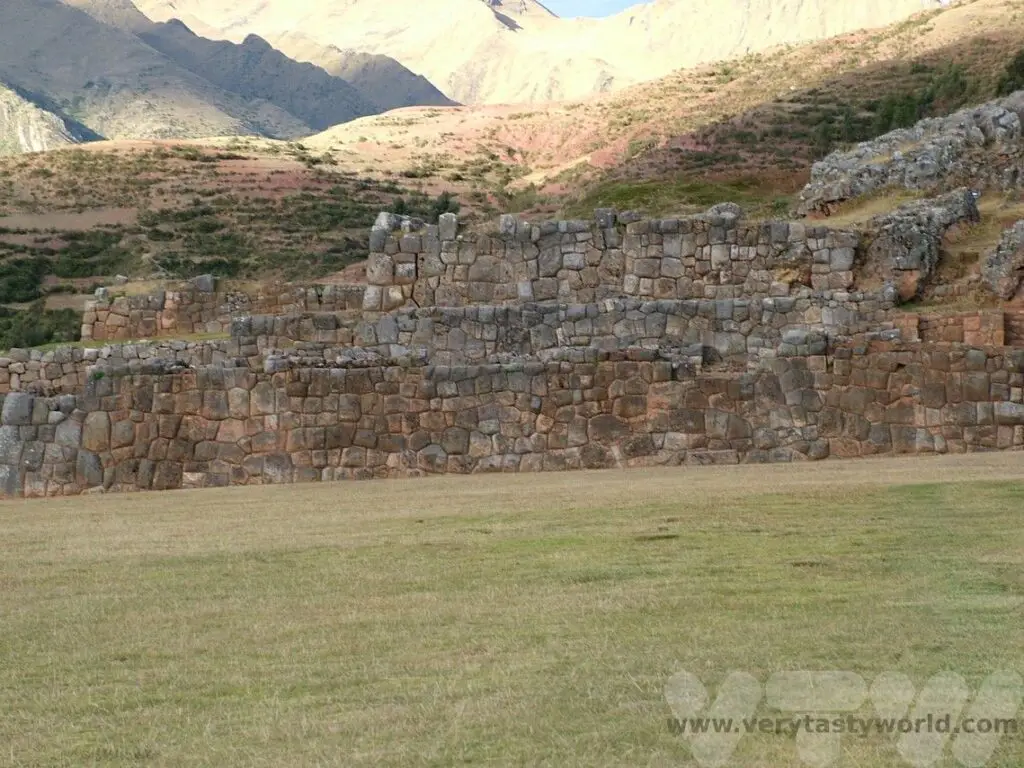
The walls with multi-angular and trapezoidal stones perfectly illustrate the complexity and sophistication of the Inca construction techniques.
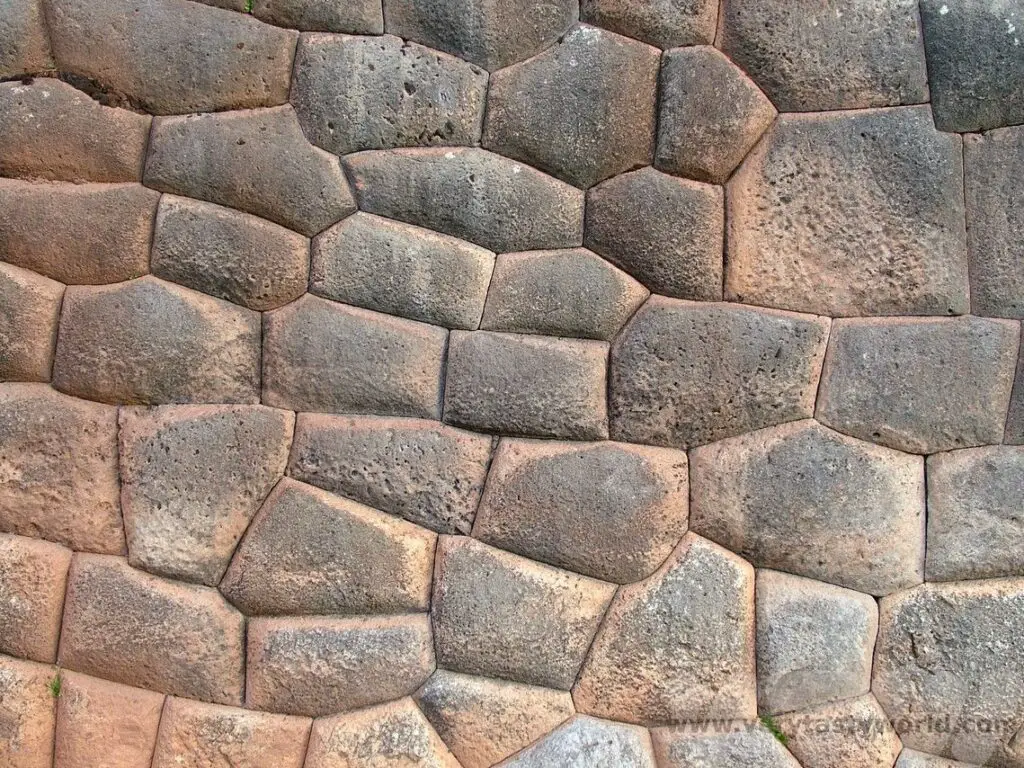
Chinchero was destroyed by rebel Manco Inca, who set it alight in 1540 in order not to leave any resources for the Spanish conquistadors, as he retreated from their unwavering advance.
When the Spanish finally settled in this town they built the Church of Our Lady of Monserrat on the remains of Yupanqui’s grand residence. It uses some of the Inca palace walls for its foundations and very much reflects the way that the cultures have integrated over the centuries.
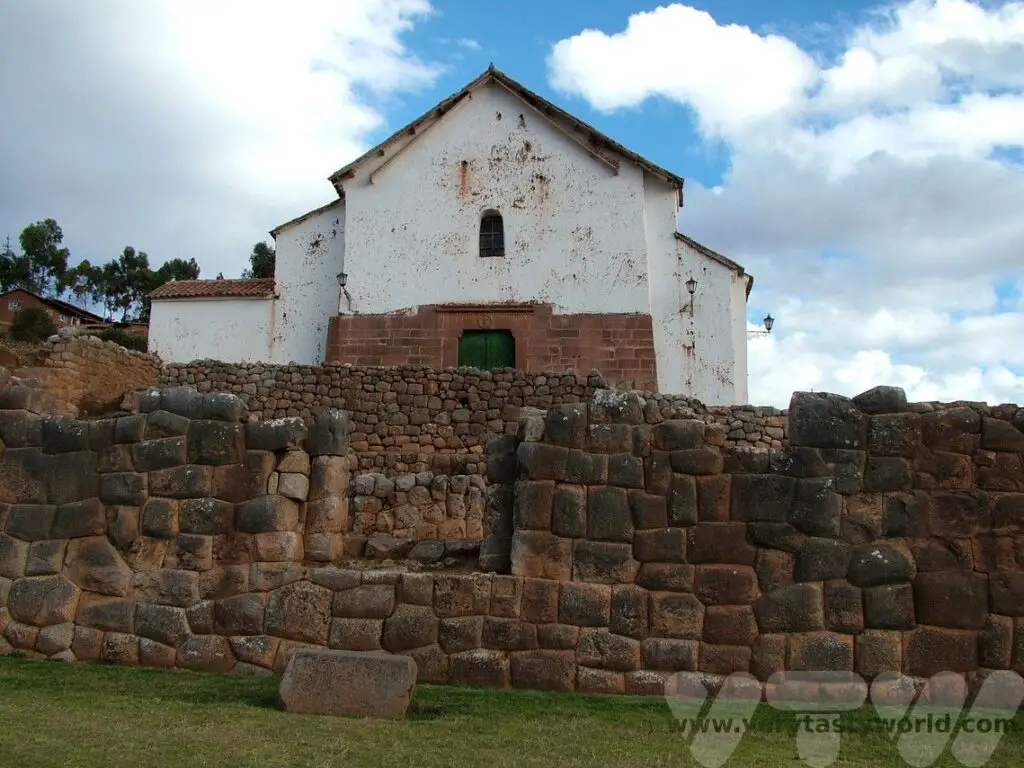
The church contains some of the best religious art in the region.
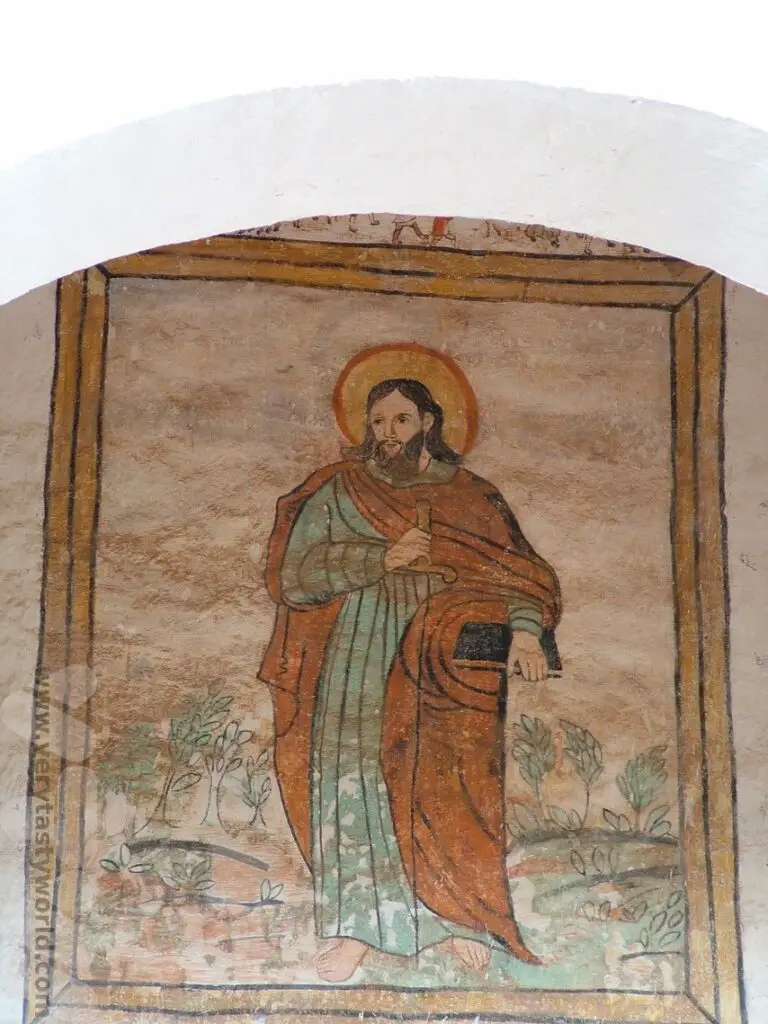
Also a centre for textiles, you may see the local women weaving colourful cloth in the streets of Chinchero. It’s very much a community working together as a co-operative.
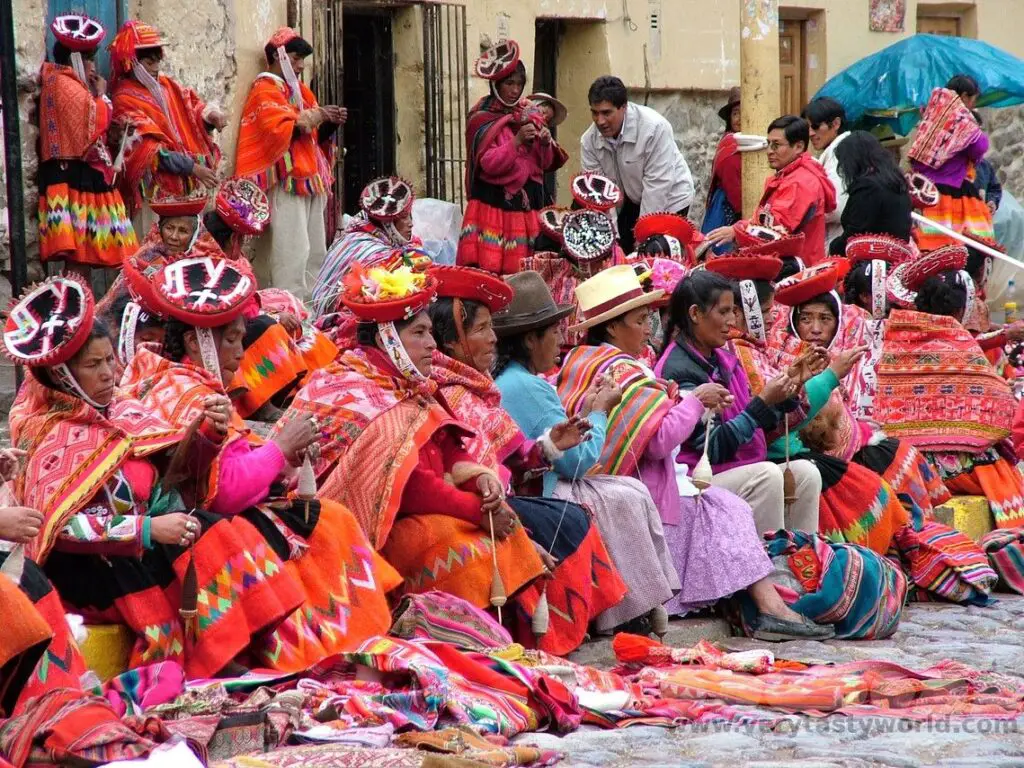
Ollantaytambo
The furthest town from Cusco on this day trip, located about 60 km away (and around 2/3 of the way to Machu Picchu as the crow flies), Ollantaytambo was established by Inca emperor Pachacuti and served as his royal residence.
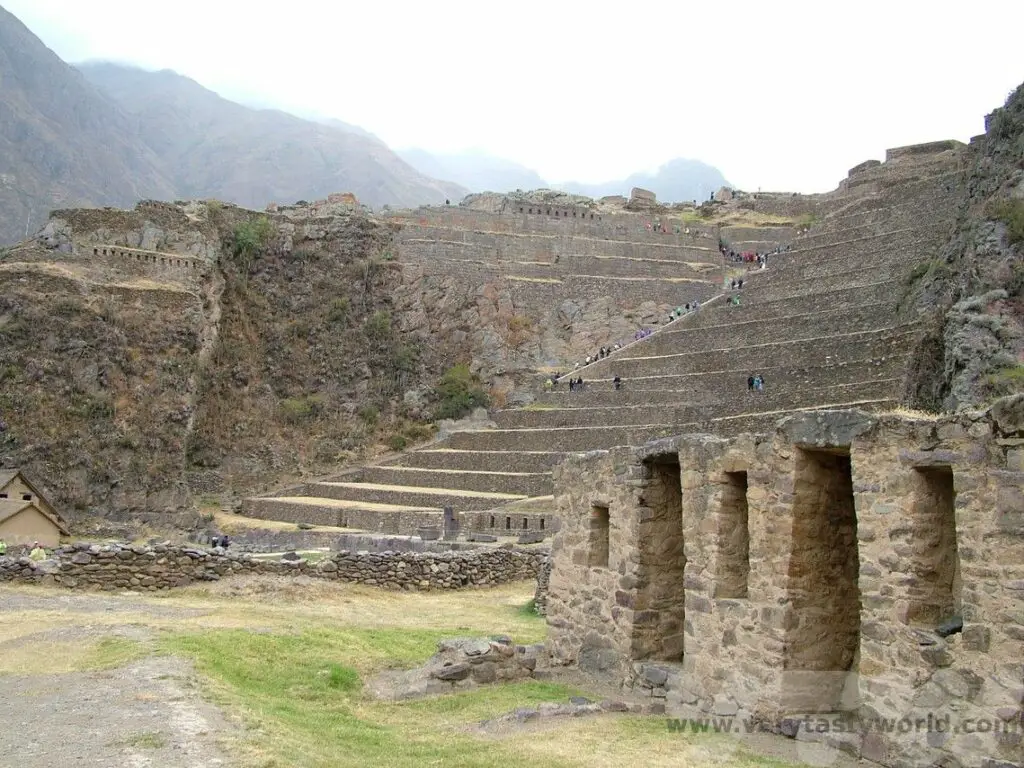
Ollantaytambo’s ruins are extremely well preserved and reflect the agricultural practices of the Incas in this area, notably the quality of the construction due to their prestigious status. The terraces are very well constructed, with high walls, and they scale the tall mountain. This has a practical effect which ensures that the Inca could grow many types of crops which flourished under the different micro-climates on the terraces.
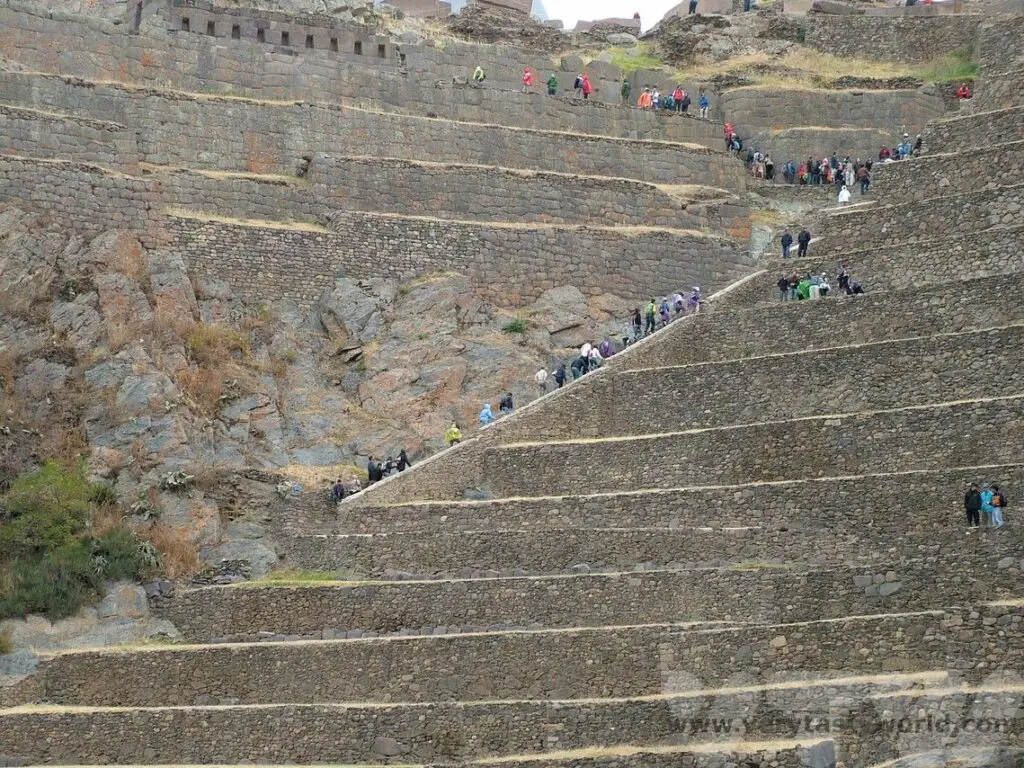
Storehouses for food can also be seen.

Ollantaytambo was the last bastion of the rebel Manco Inca Yupanqui who led the resistance against the Spanish conquistadors. After Cusco had fallen Manco Inca successfully blocked a Spanish expedition and defended Ollantaytambo, but was unable to hold his position. He eventually retreated into the jungle of Vilcabamba and became the leader of the Neo-Inca state.
There are a number of other interesting sites to visit. These include the salt pans of the Salinas de Maras and the concentric terraces at Moray, thought to be a location where the Inca experimented with growing particular crops. If you’re feeling active, whitewater rafting on the Urubamba River is a popular activity.
Essential Drinks to Try in the Sacred Valley
Peru is deservedly cited as having one of the world’s most interesting cuisines with all sorts of delicious delicacies to taste all over the country. But we also enjoyed some typically Peruvian drinks whilst visiting the Sacred Valley.
Chicha
If you see a flagpole outside a local house, this represents a chicha place where you can try a glass of corn beer. You are welcome to come in and buy some for a modest price.
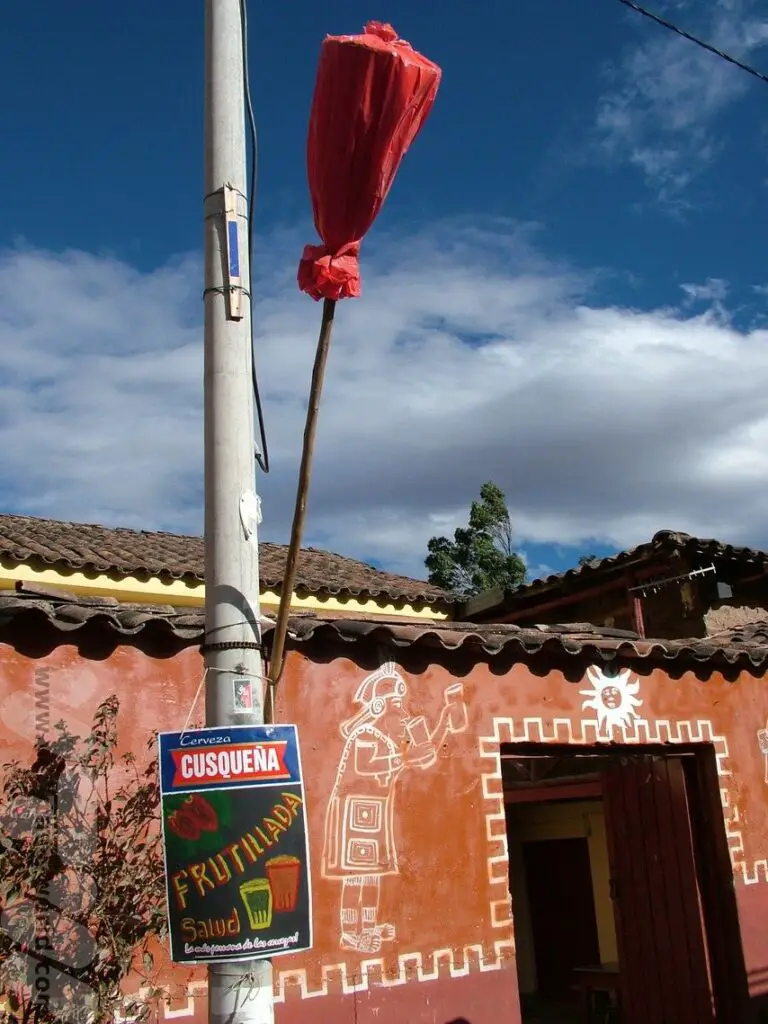
Chicha is brewed from maize and fermented in earthenware vats. It’s usually made by the women of the family and can provide a good income for the household.
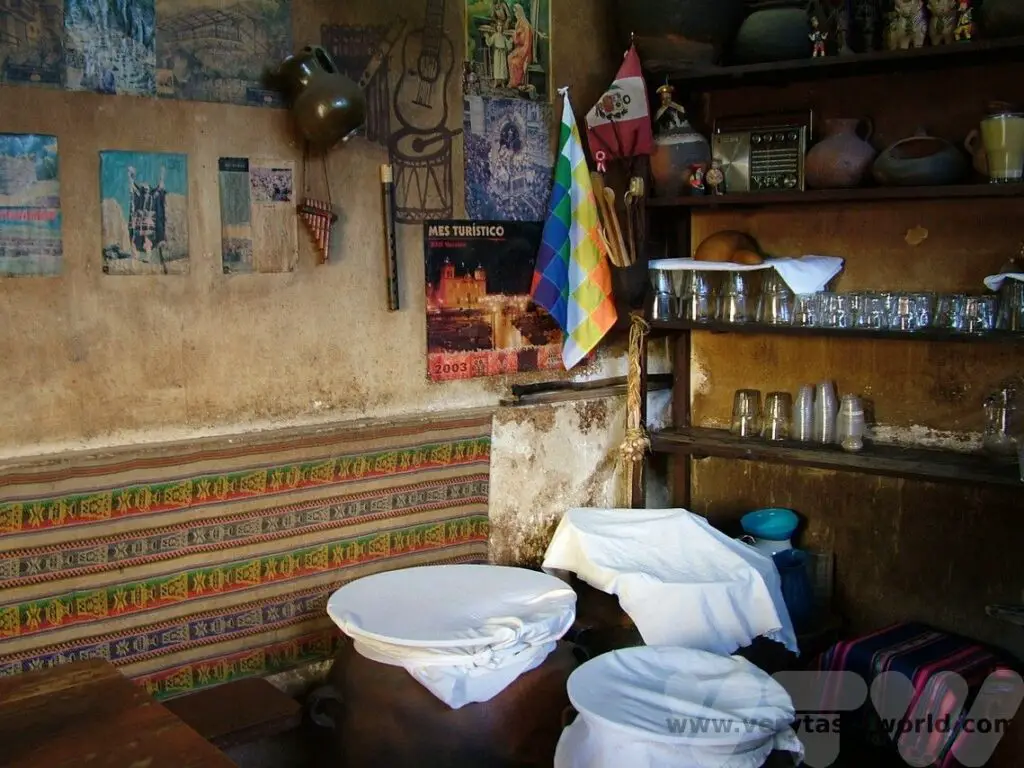
Chicha made in a very similar way to standard beer but it uses maize/corn instead of barley. It is a very special drink that had a huge cultural importance to the Inca people. It’s not very alcoholic – about 3-5% – but it is very refreshing and tasty too.
Chicha de jora is made from yellow maize and chicha morada from purple corn, with fruit such as pineapple or strawberry added with spices such as cinnamon or cloves to add flavour. Both types of beer have a glorious colour.
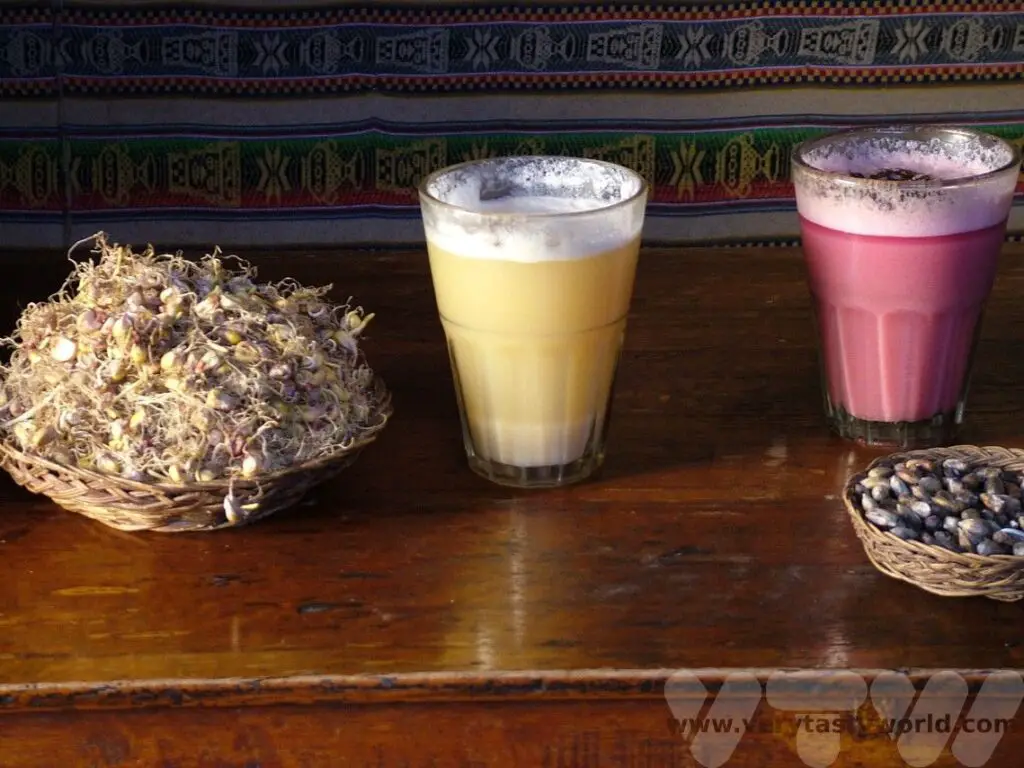
Coca Tea
At altitude you really notice the thinner air and the lack of oxygen. You may not feel it initially but climbing a seemingly innocuous flight of stairs, even a single storey, can leave you puffing and panting and wondering whether you need to be working out more. Some people have more serious reactions which include headaches, nausea, tiredness and dizziness. There is no knowing whether you are likely to suffer from altitude sickness, and fitness isn’t a factor – it seems as though either you are or you aren’t susceptible. If you do feel poorly, stop and rest. Make sure you are well hydrated. Avoid consuming alcohol and smoking.
One local remedy that is reputed to help with mild symptoms is coca tea. It won’t cure altitude sickness but apparently helps alleviate the headaches. (It’s not recommended for those with high blood pressure, heart problems or diabetes.) And as acute mountain sickness can be fatal – if symptoms get worse, seek medical advice immediately.
Our hotel had free coca tea available all the time and this is the case with most accommodation in the city. A nice cup of hot tea after a morning or afternoon’s sightseeing was always welcome. The tea is brewed from the leaves of the coca plant, which the Incas considered to be sacred. It’s not tannic and has a pleasing flavour, a mild, refreshing taste that is a bit like green tea.
You can buy coca tea bags in Peru to bring home. They last ages and can still be enjoyed at altitudes much closer to sea level.
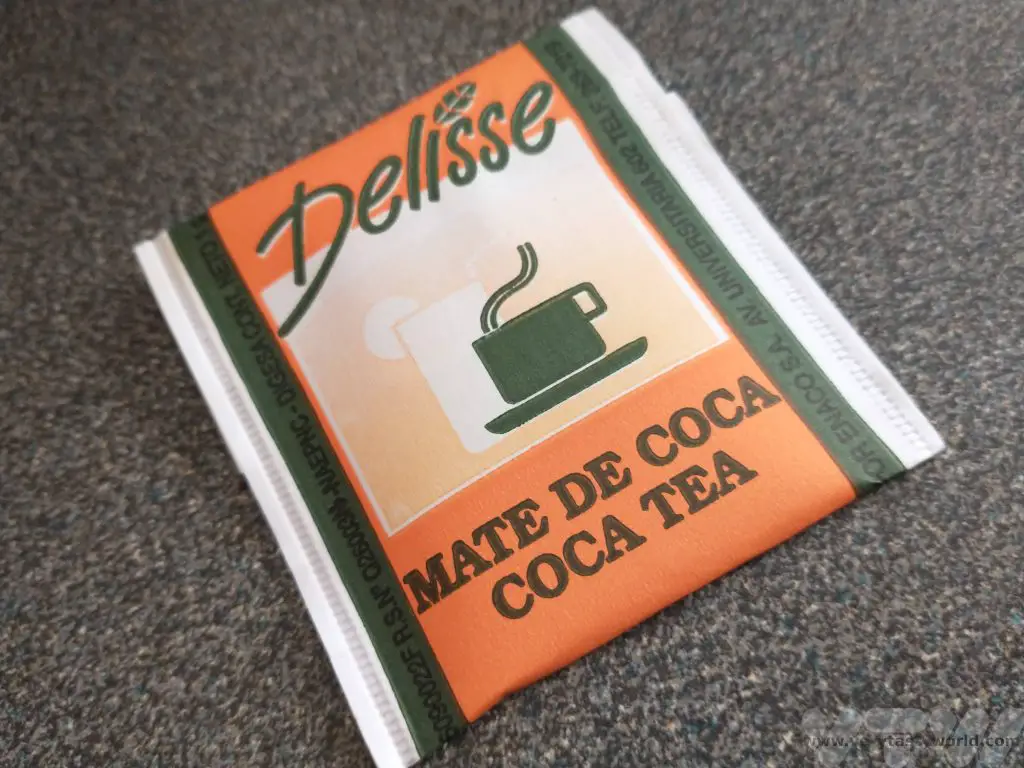
Just brew them as you would any cup of tea: teabag in a cup, add boiling water, steep to the strength you like, sit back, put your feet up and quaff.
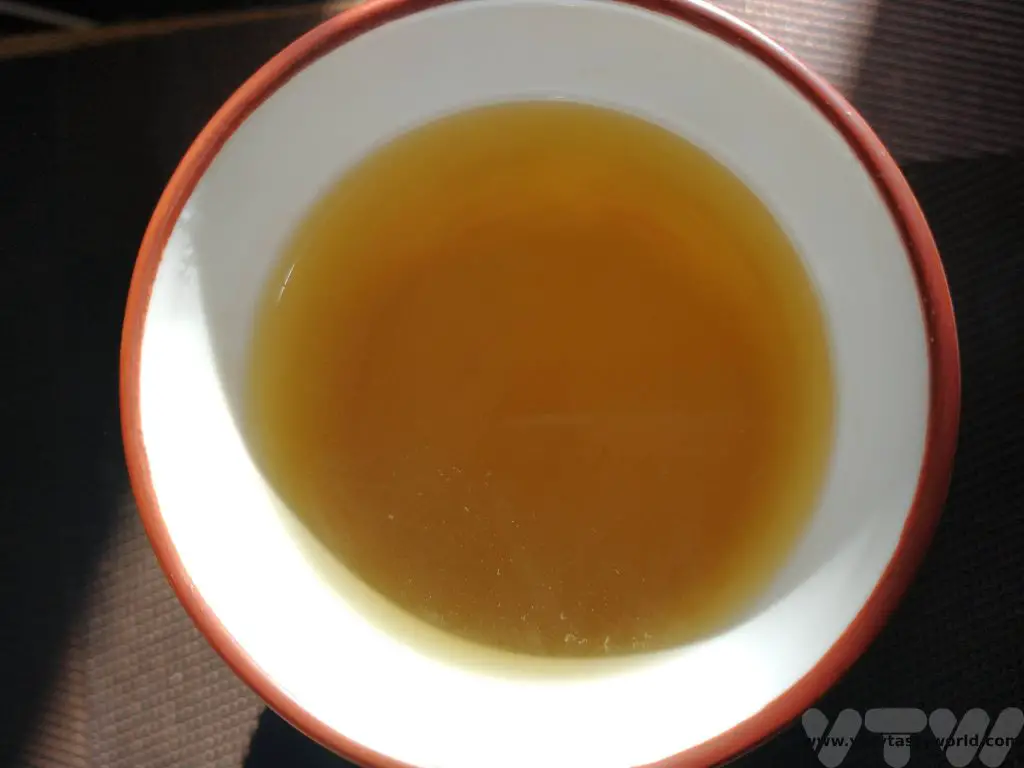
Although often considered to be the gateway to Machu Picchu, Cusco and the Sacred Valley have so much to offer the visitor. It is definitely worth spending time in this area, not only to acclimatise to the altitude, but also to explore and discover more of the region’s fascinating history and culture.
Related Posts You May Enjoy

- Best Time To Visit Machu Picchu 2024 Update
- A 2 Week Patagonia Itinerary
- Day of the Dead in Campeche
- A Galapagos Land Based Itinerary
- RECIPE: How to Make Costa Rica’s Gallo Pinto
- A Tasty Puebla Food Tour
- Costa Rica Wildlife Sanctuary – Caño Negro
- Visit Torres del Paine National Park in Patagonia
- Atacama Desert Itinerary
Exploring The Tambopata National Reserve in Peru
Welcome to the Jungle
While Peru may be more famous for the remarkable Machu Picchu, cosmopolitan Lima, the enigmatic Nazca lines and the serenely beautiful Lake Titicaca, a significant part of the country lies within the Amazon basin and hence it is possible to visit the rainforest. The Rio Tambopata is a tributary of the Madre de Dios which flows into the Mamore River, becomes the Madeira River and eventually meets the Amazon. You can fly into Puerto Maldonado, catch a boat upriver and visit a number of lodges, all located within the Tambopata National Reserve. There are loads of excursions available – all in pristine rainforest and the wildlife viewing opportunities are plentiful. The jungle is hot, sticky, humid and full of mosquitoes and other creatures that can give you a really nasty bite. But it is also wild, exciting, loud, beautiful and utterly fascinating.
The trip also triggered an interest in plants as food and medicine that continues to this day. We stayed at a lodge located in primary forest, a three hour journey up the Tambopata river.
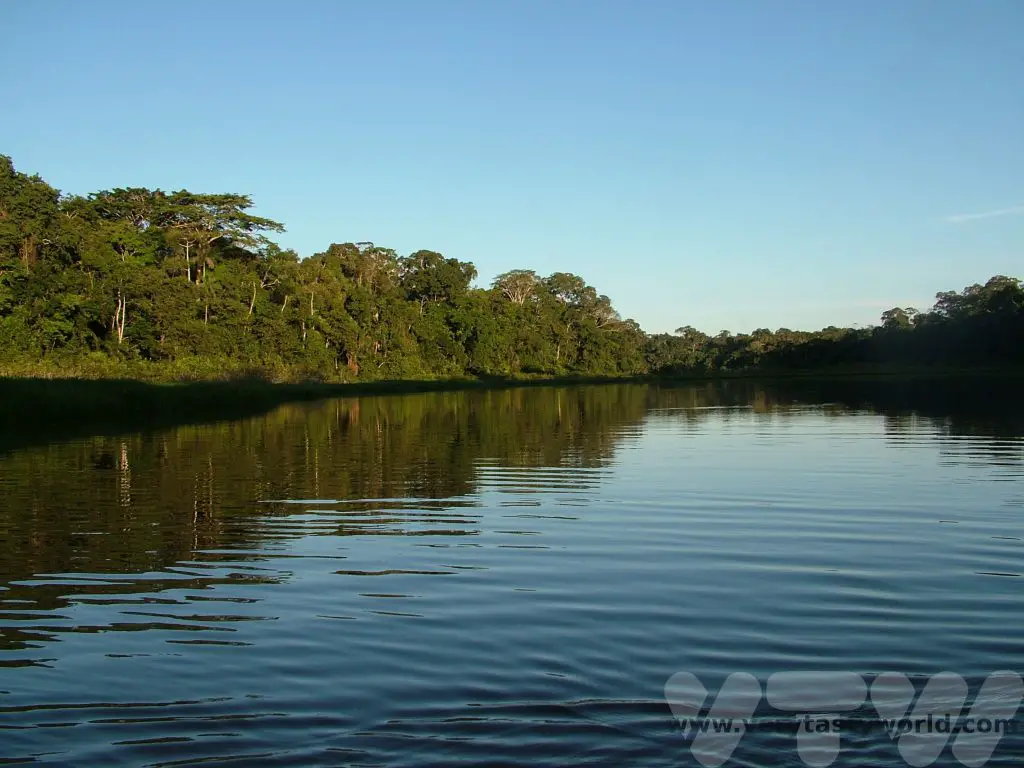
At the lodge, our room had 3 internal walls and no external wall, so it looked out at the rainforest. It was amazing to be able to lie in bed listening to the incessant cacophony of sounds, primarily from the birds and insects.
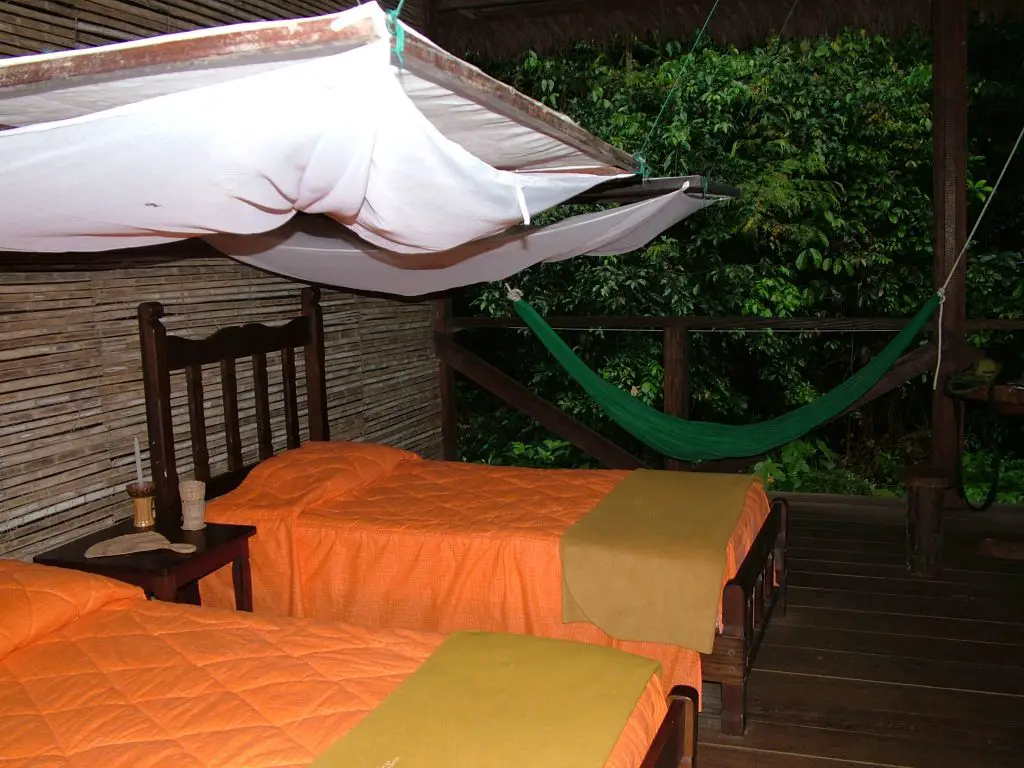
When you gaze out at the jungle, the jungle gazes back at you. It can also invade your room and cause jolly mayhem when you find frogs in the shower, possums on the bed and giant insects that fly in while you’re sitting on the loo. There was no electricity in the rooms so we relied on candles and kerosene lamps and the showers were cold water only (not a problem when it’s hot and humid). The guides and staff were excellent, the food was great and there were cocktails in the evening – which was most refined.
Guided Excursions In The Tambopata National Reserve
There are lots of guided excursions on offer, walking in wellies along muddy trails or canoeing across an oxbow lake (which was apparently full of piranha and anaconda – eep!).
The birds and animals were fascinating and indeed we saw capybara, peccary (wild pigs), caiman (alligators), beautiful macaw, piranha, giant guinea pigs, taira, stinky birds and caught just a glimpse of a shy tarantula that wouldn’t come out to play. We avoided fire ants and hairy caterpillars. And fell over in the mud.
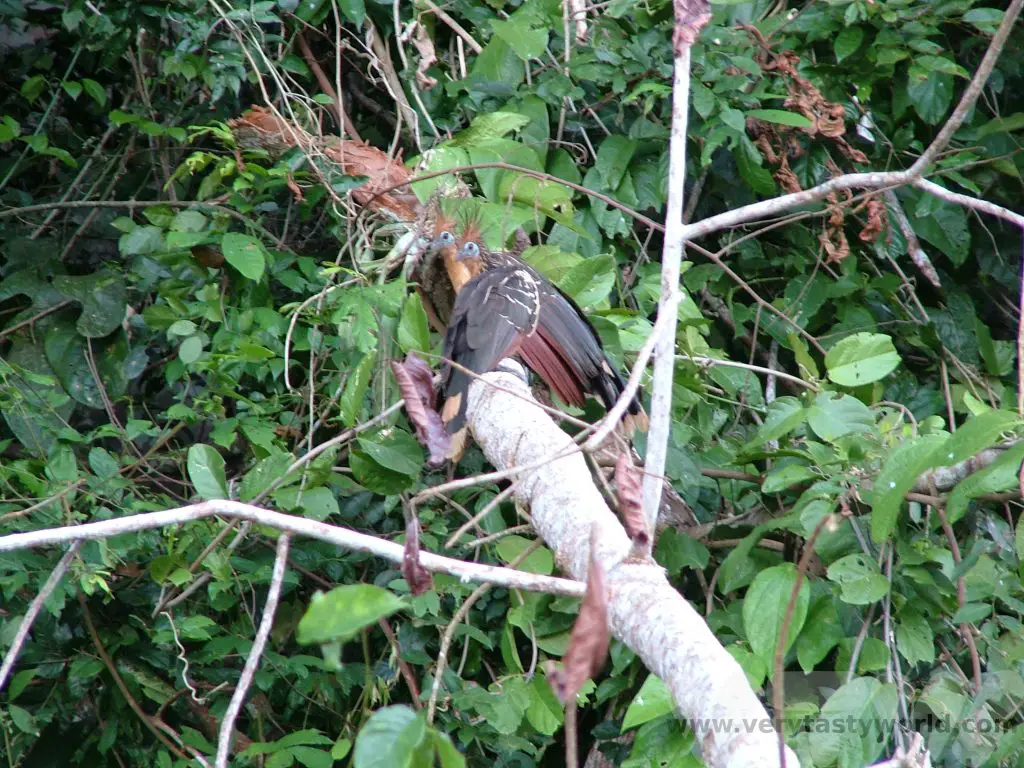
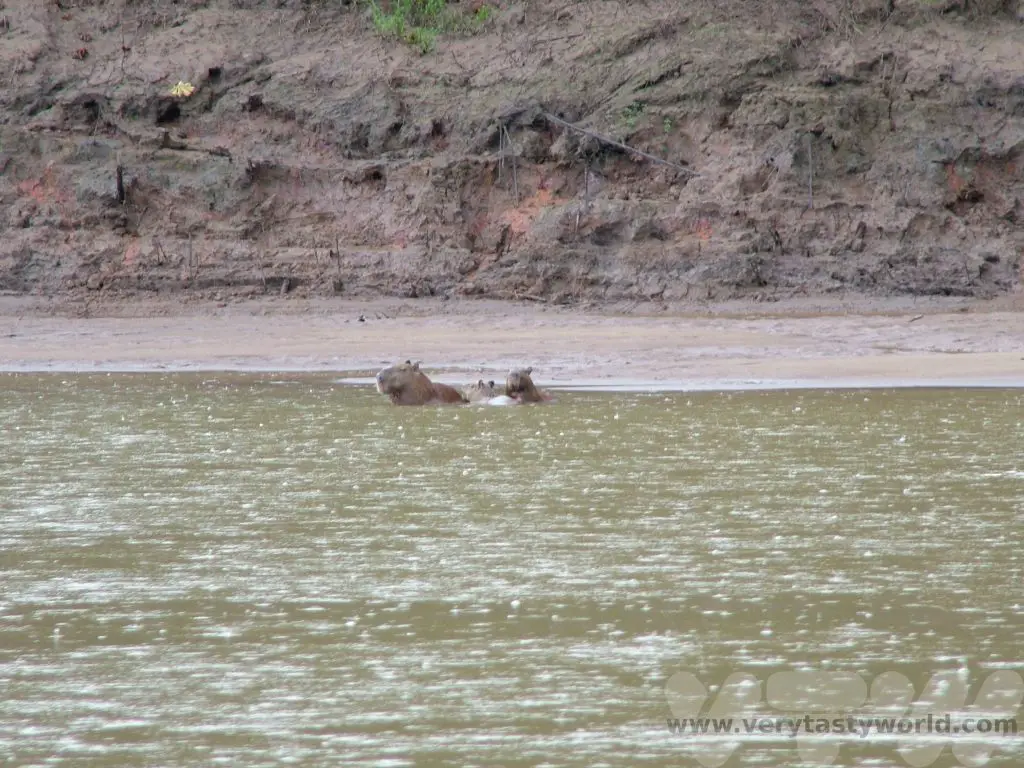
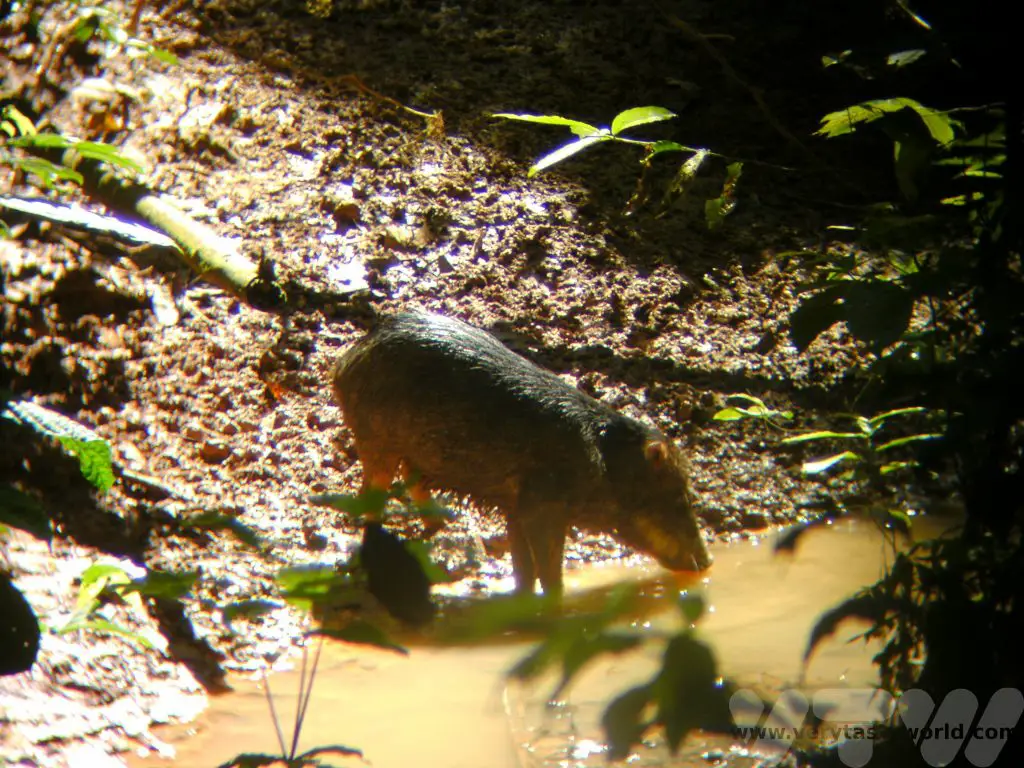
One of the foods eaten by locals is termites. You can find their nests in trees. They’ll come out quickly enough if you disturb the nest. You can let them run onto your finger and just eat them. They taste minty. Obviously make sure you know what a termite looks like; the ants in the jungle bite and their bite is painful.
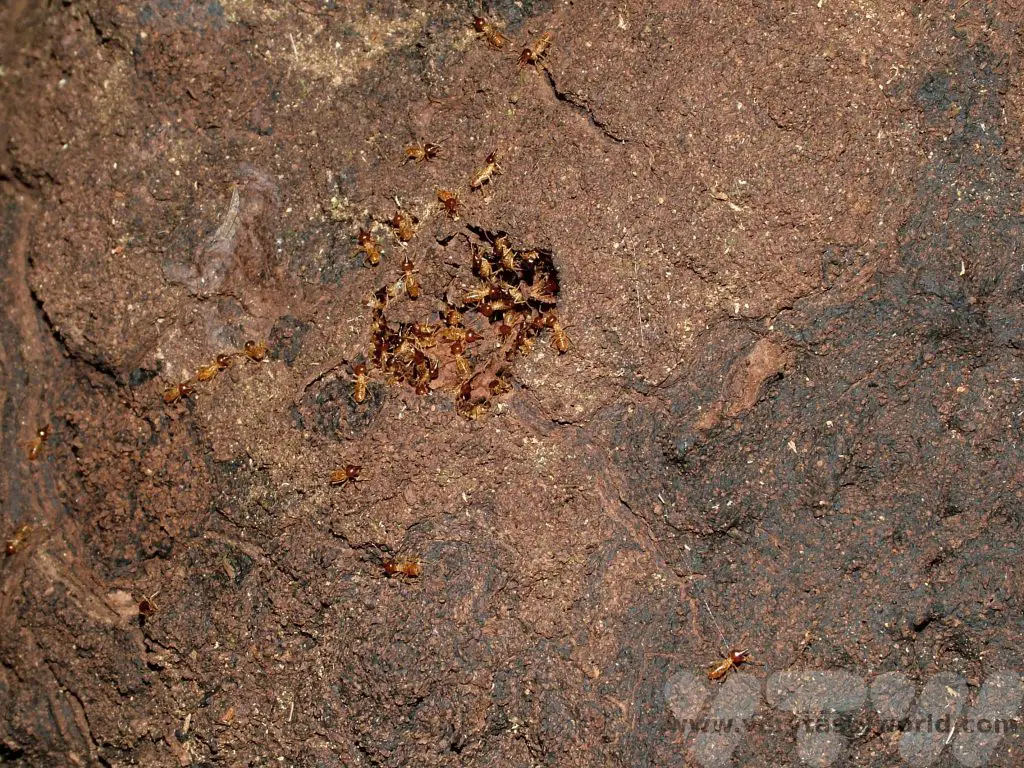
The plants in the Tambopata National Reserve were particularly fascinating. The trees were amazing – so huge that their roots alone were taller than we were, a strangler fig that we could walk inside.
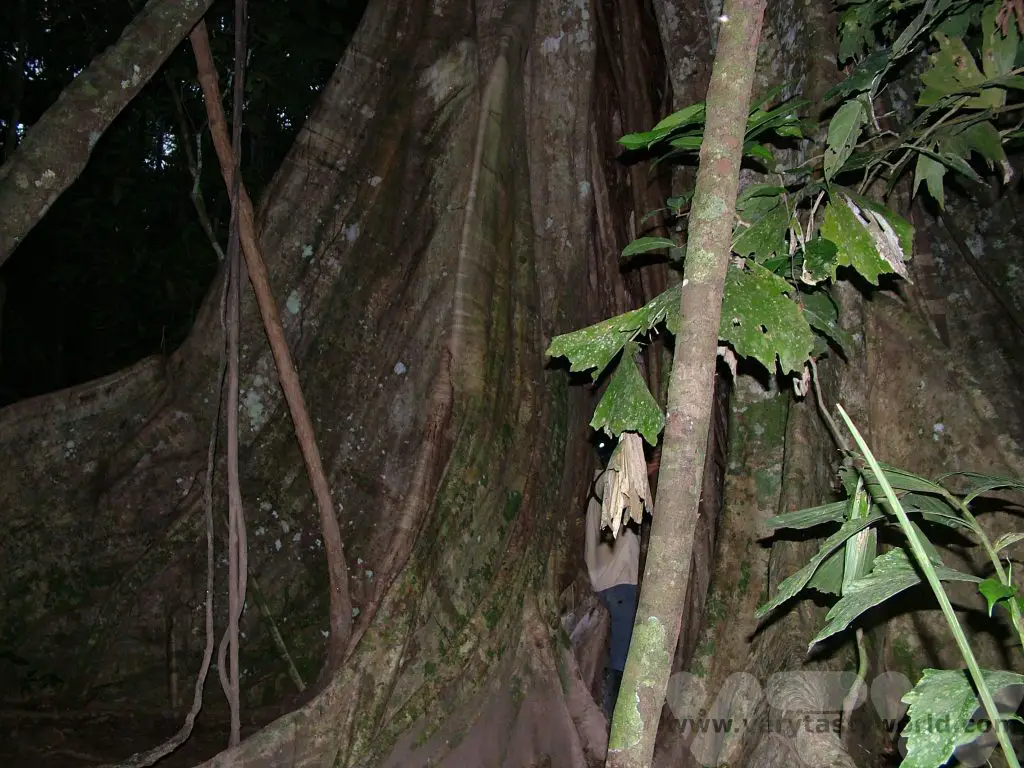
Our guide showed us how the plants are used by the local people. There were leaves that produced a purple dye when you squeezed them, leaves with an underside so rough it could be used as sandpaper, vines that can be woven, vines that are strong enough to swing on (Tarzan style) and quinine bark.
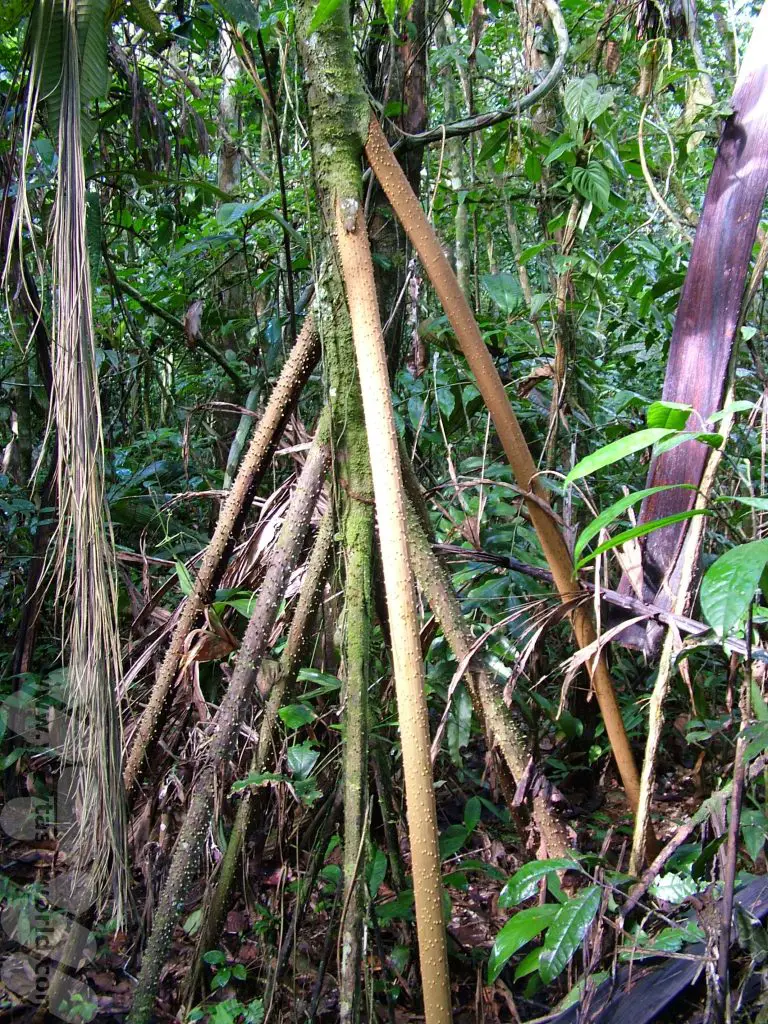
This is a walking tree. It grows straight up but in a jungle where the canopy is so dense that the forest floor is very dark, it needs to ‘move’ to find the light. It does this by growing roots from the stem in a particular direction. Old roots on the other side just die off. In this way the tree can slowly shift across the jungle and grow towards the light. You can see the new root here is a light brown colour – the tree is ‘moving’ to the right.
Medicinal Uses For The Rainforest Plants In The Tambopata National Reserve
We were also given a tour of the medicinal uses for the plants by a shaman. He talked about our perception of plants as ‘alternative medicine’ commenting that these are really natural remedies that have been used for centuries. We ate leaves that made our tongues numb – a natural anaesthetic. He used a variety of plants to cure various ailments, from a natural viagra to a concoction that will dissolve rotting teeth painlessly. There are trees that exude a resin which hardens and can be used as a natural plaster cast to set bones. And the sap from a blood tree will cure simple cuts, bruises and mosquito bites.
The symbiosis in the jungle was amazing: the bullet ant has venom similar to that of a cobra and they say that if you get bitten by one, it feels like being shot. Apparently the pain is excruciating for 24 hours. The best relief for the pain can be found in the shape of a vine that grows on the tree under which the bullet ants nest. This particular vine is pollenated only by bullet ants – the cure located right next to the source.
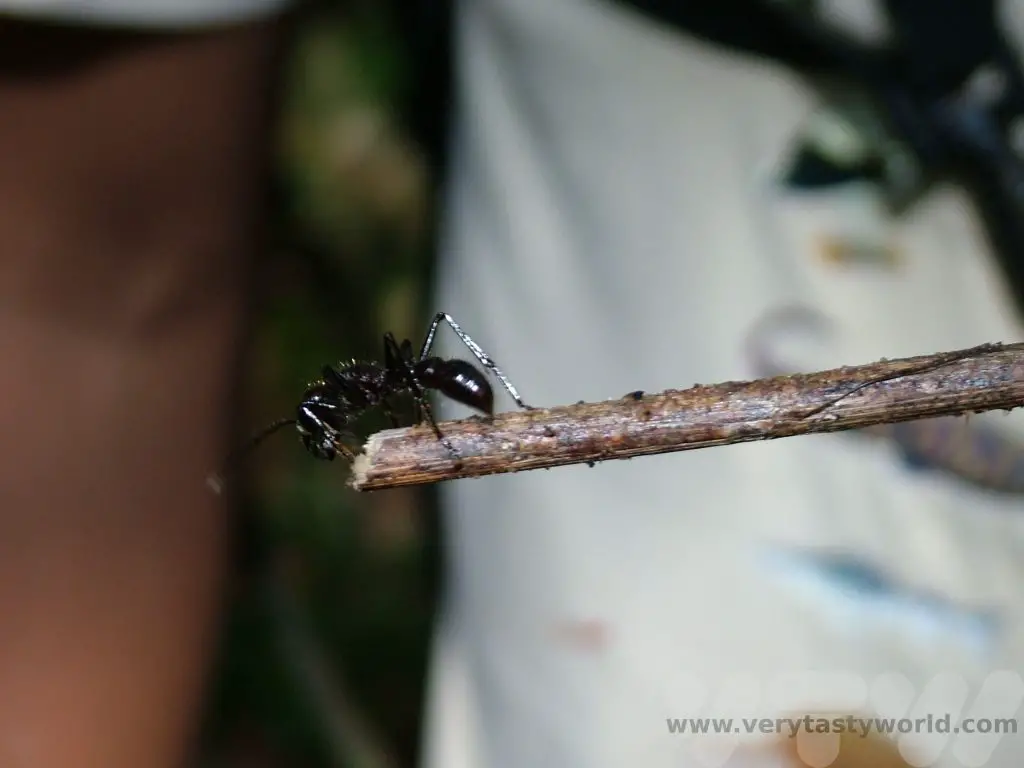
The plants of the rainforest have, unsurprisingly, been used by pharmaceutical companies, many of which extract the active ingredient from the plants, patent them and sell them back to the Peruvians at hyper-inflated prices. Sigh.
The lodge is run in a sustainable way that benefits the local people and environment. 60% of the profits from tourism go back to the local community. These have helped build a secondary school and some of the pupils have been educated there, studied English in Lima and have returned to the jungle to become guides. Local farmers can’t get enough money at the market for their fruit to cover transportation costs, so the lodge buys fruit directly from the farm across the river. We visited the farm and tasted fresh bananas, star fruit (much more tangy than the ones that have travelled halfway across the world), sugar cane, lemongrass, pineapple and more.
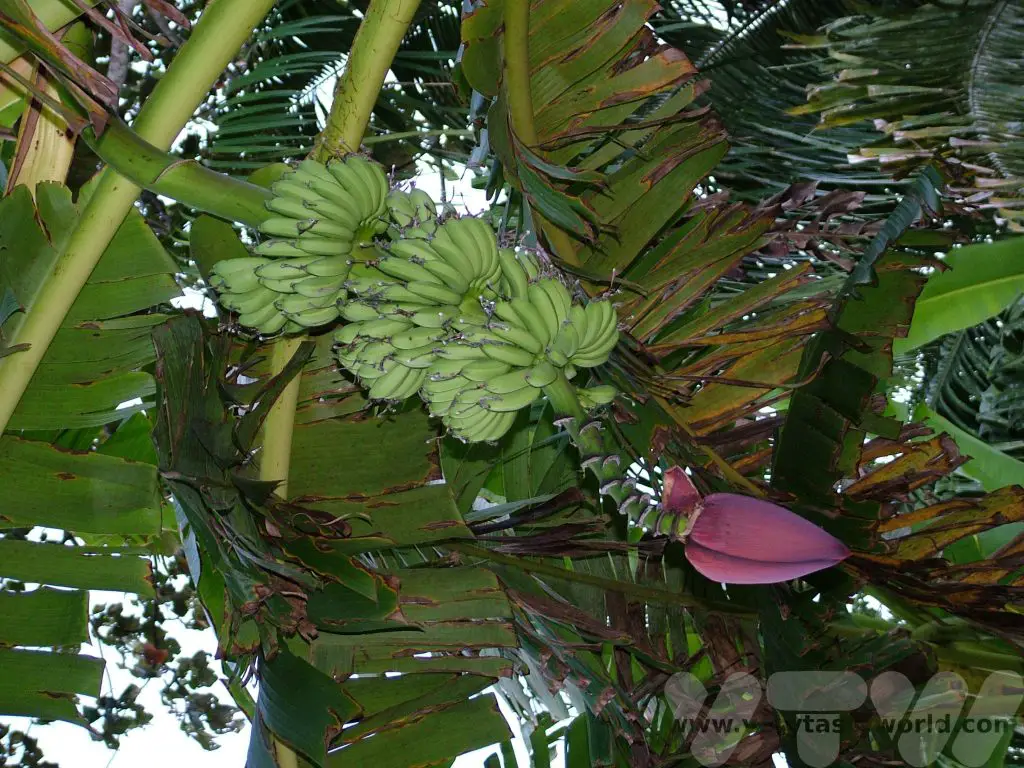
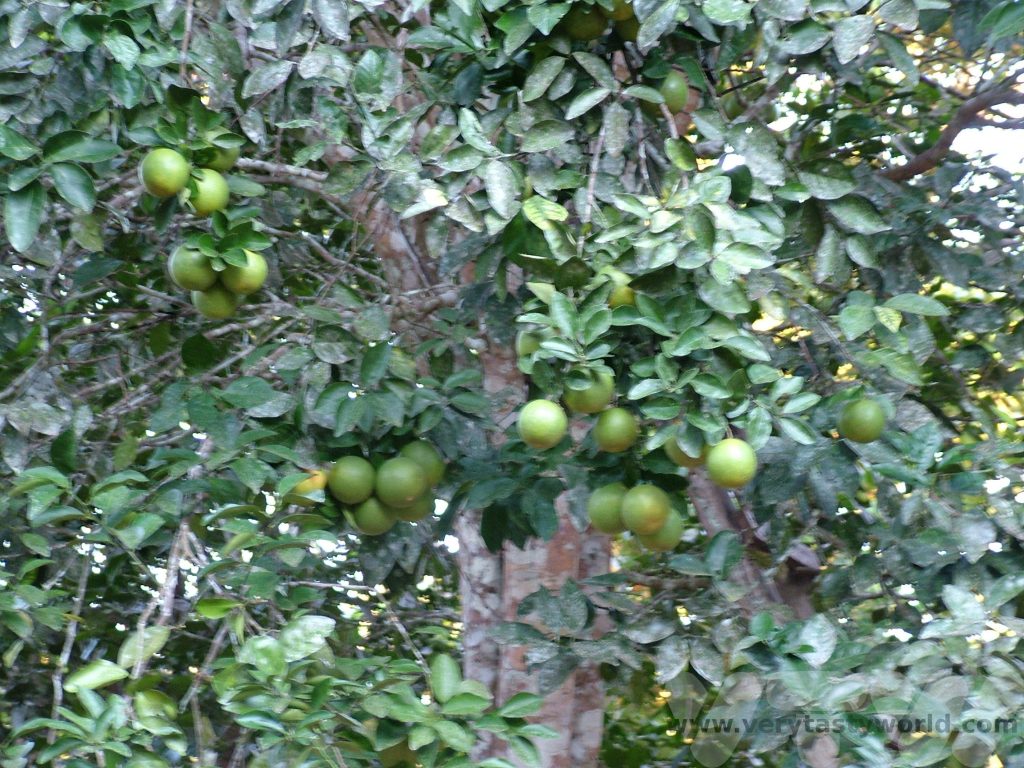
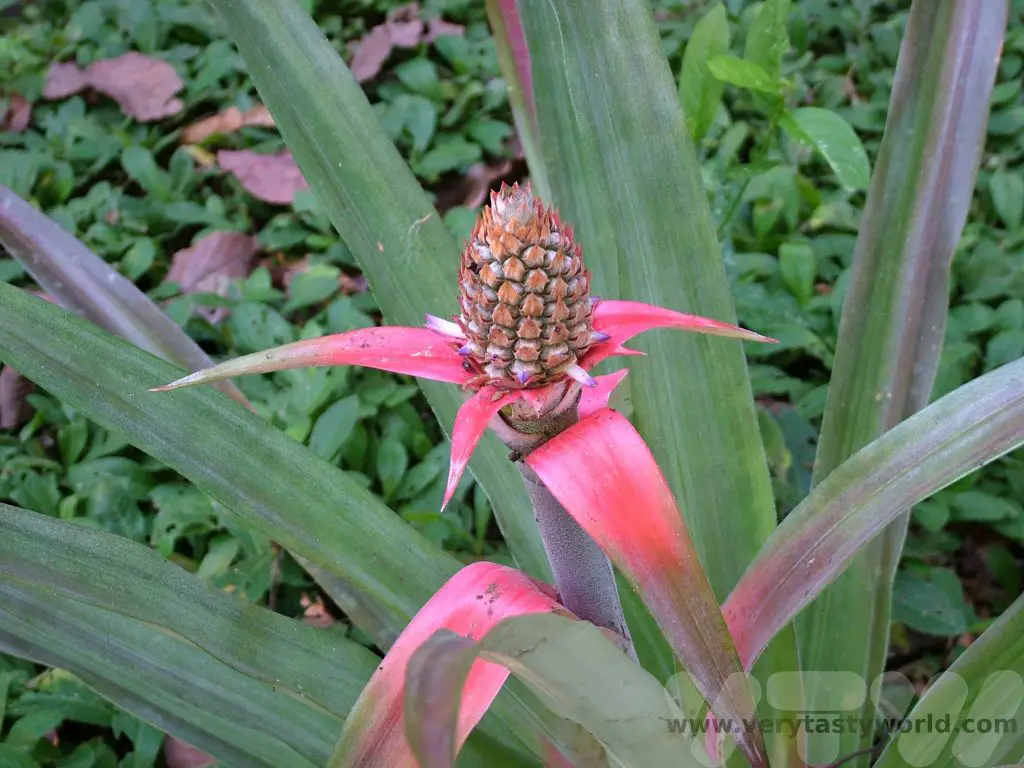
We also followed a brazil nut trail and had a bash at opening the hard pods (which contain about 18 nuts) with a machete. We still have all our fingers.
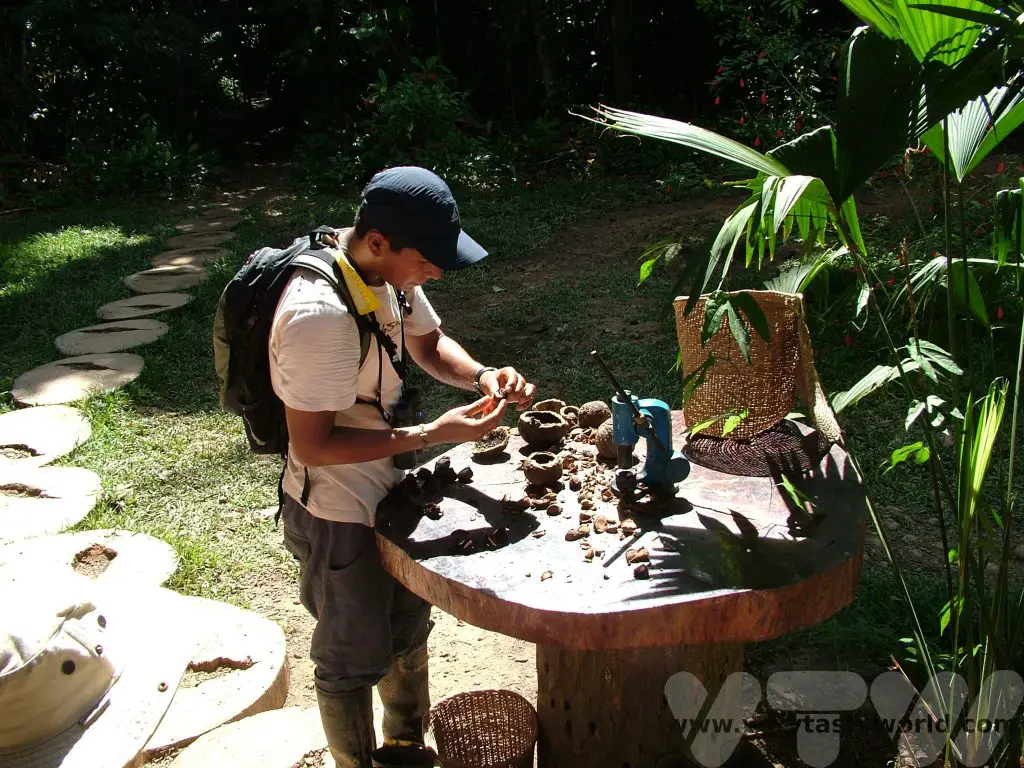
Exploring the jungle was exhausting and elating – a truly fascinating place. And at the end of each day we could relax, watching the sun set over the Tampobata before going to bed. And then we would see whether the possum had beaten us to it.
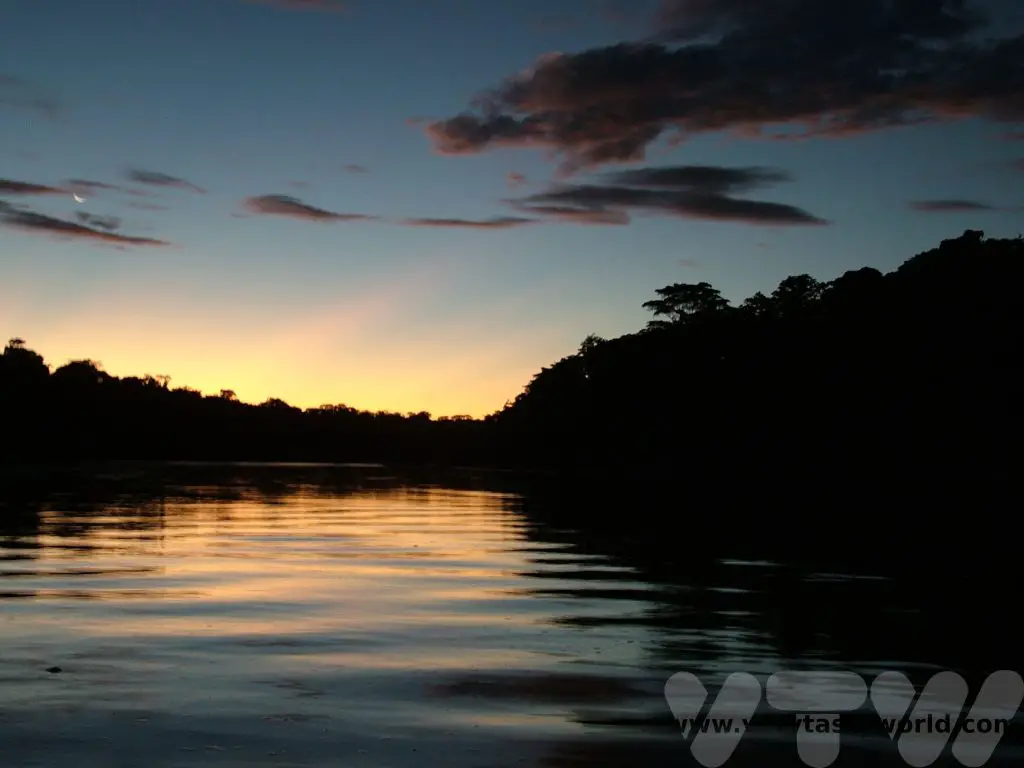
Related Posts You May Enjoy

- Best Time To Visit Machu Picchu 2024 Update
- A 2 Week Patagonia Itinerary
- Day of the Dead in Campeche
- A Galapagos Land Based Itinerary
- RECIPE: How to Make Costa Rica’s Gallo Pinto
- A Tasty Puebla Food Tour
- Costa Rica Wildlife Sanctuary – Caño Negro
- Visit Torres del Paine National Park in Patagonia
- Atacama Desert Itinerary
